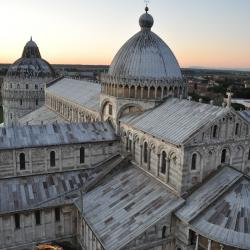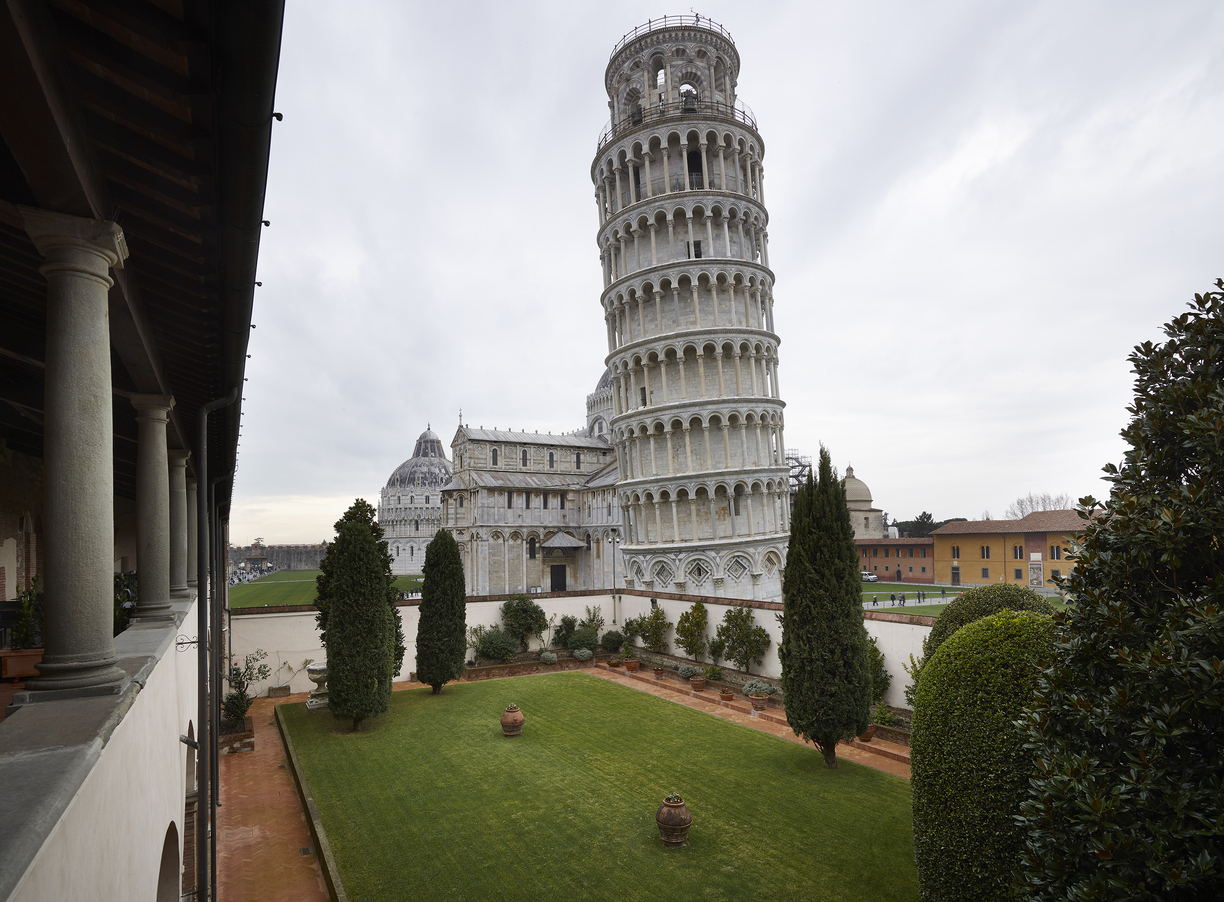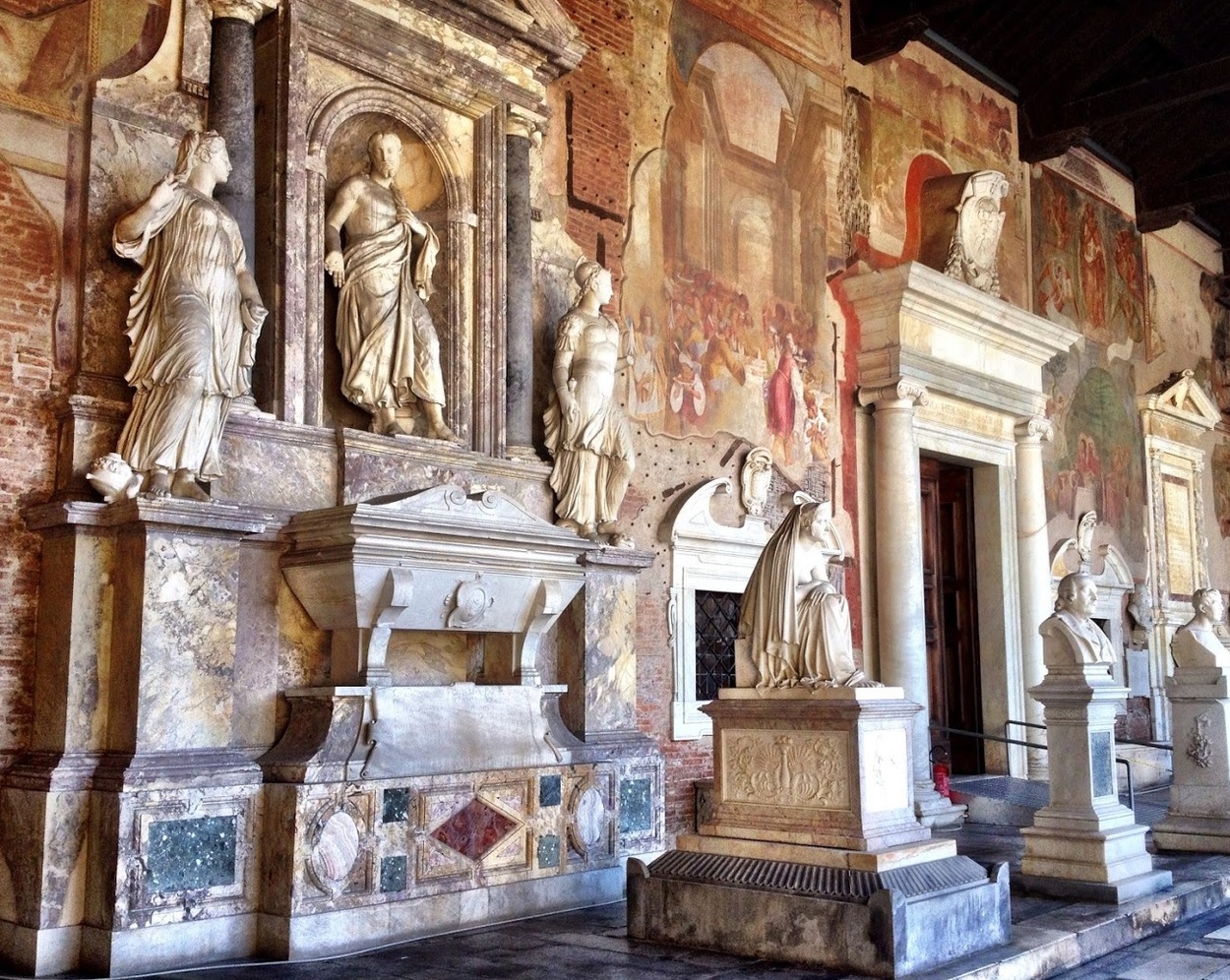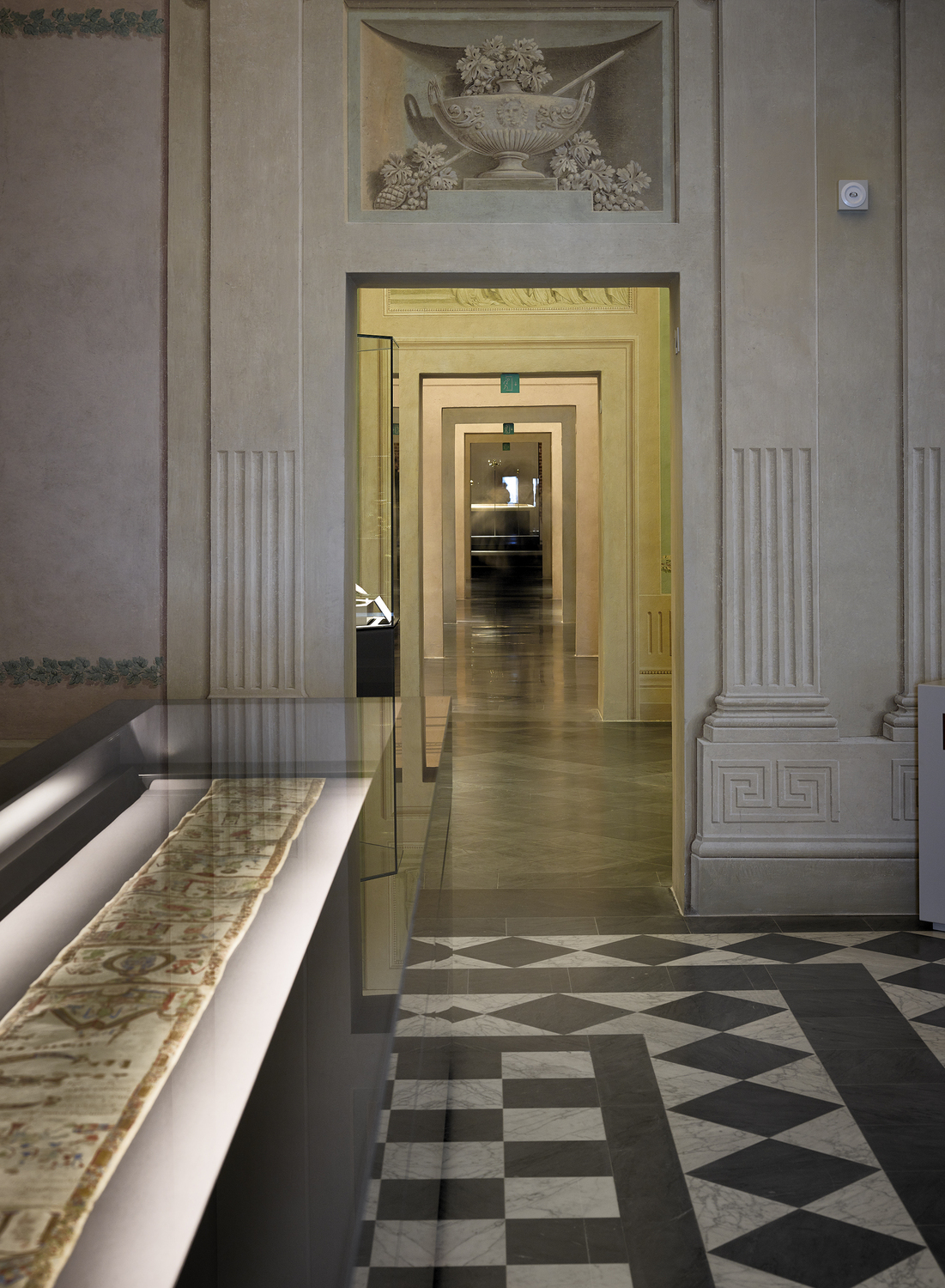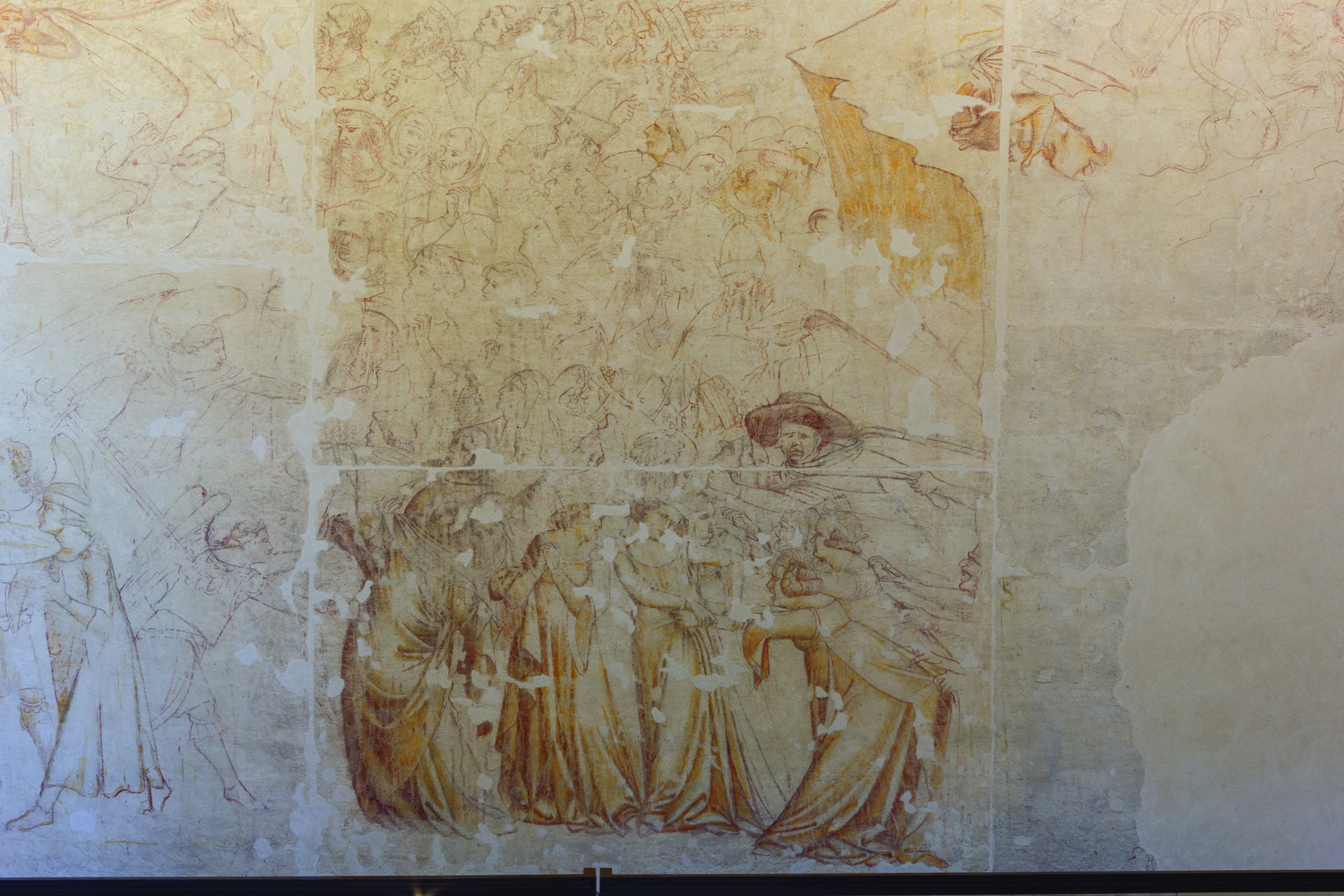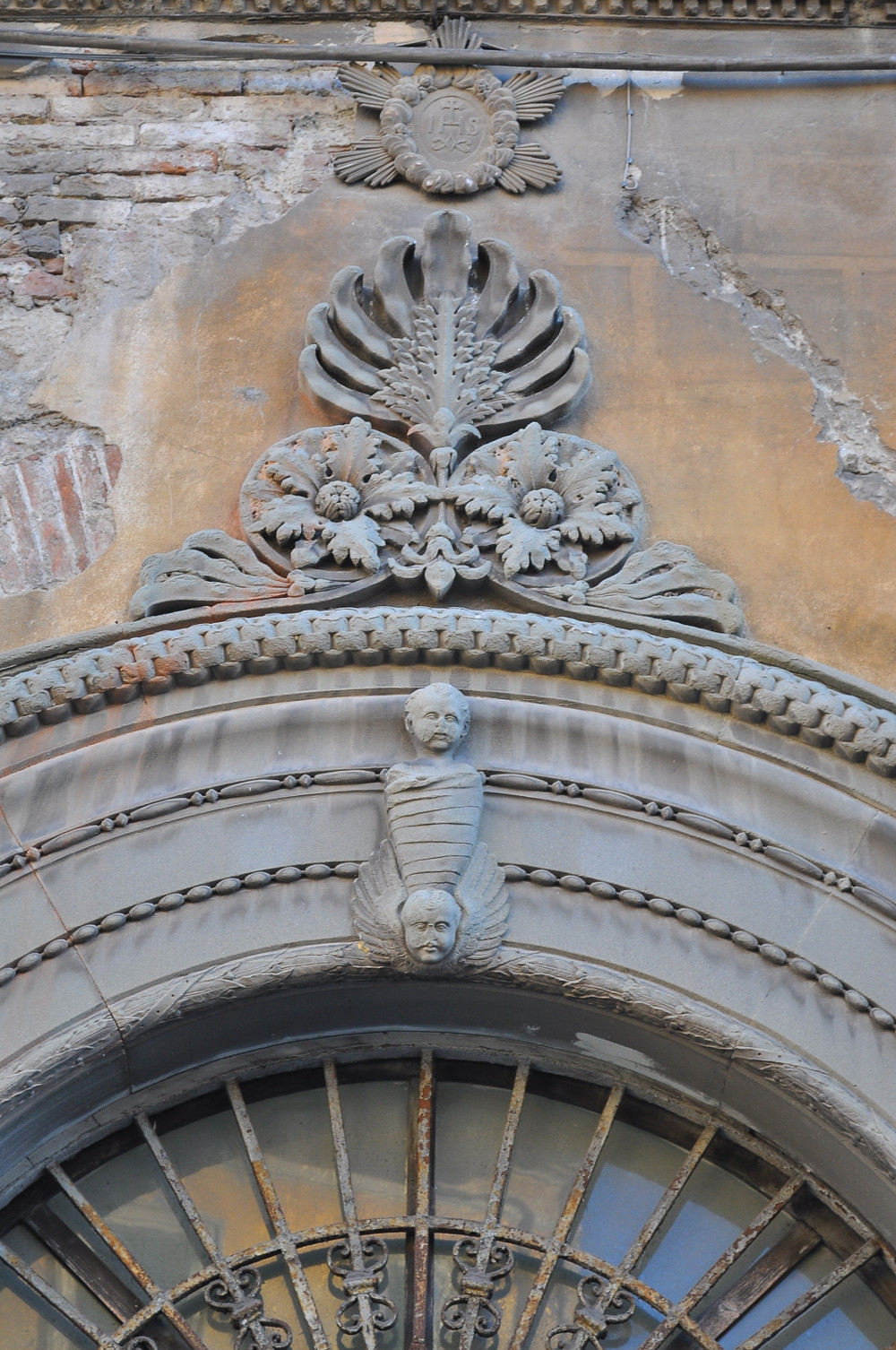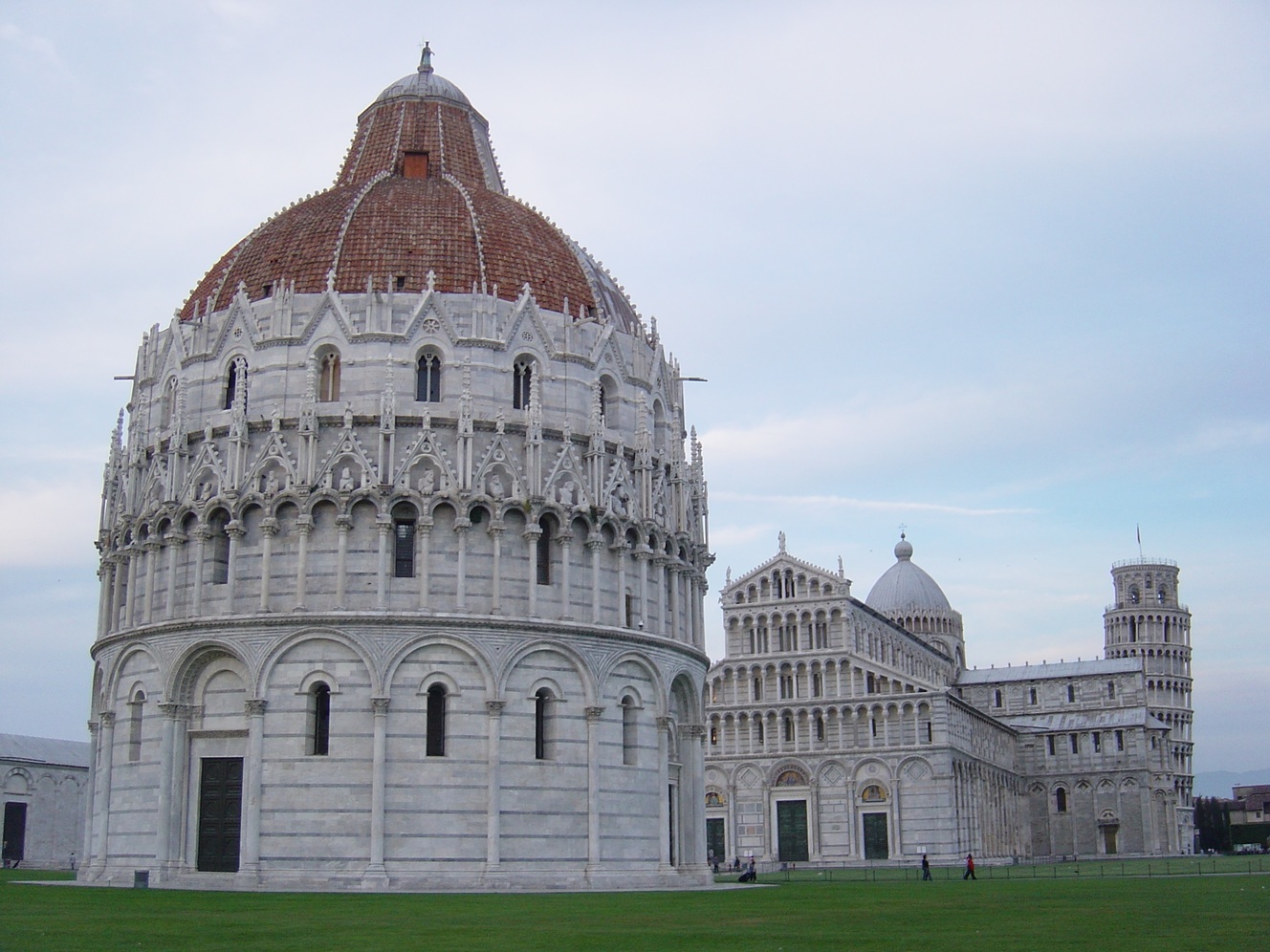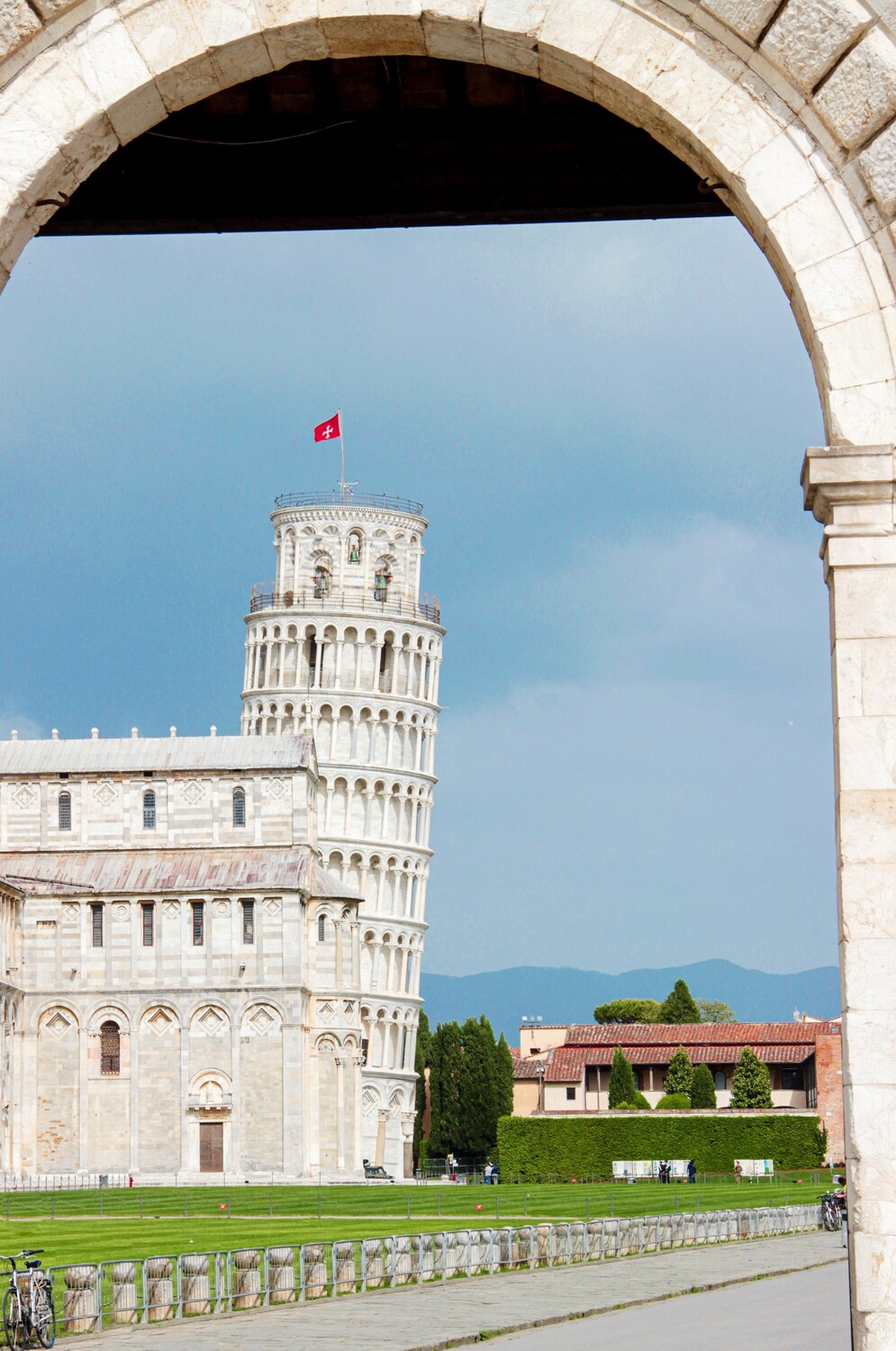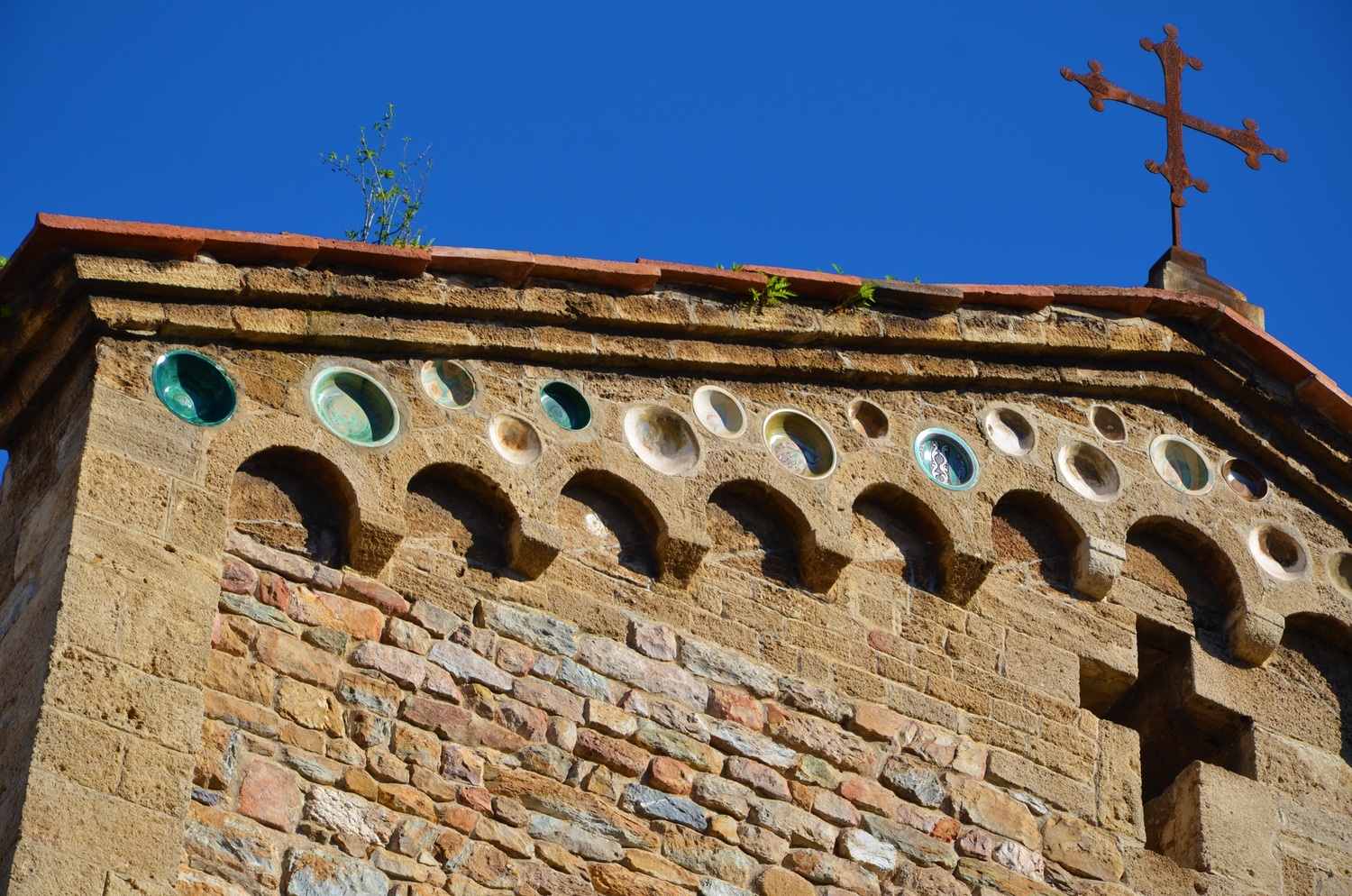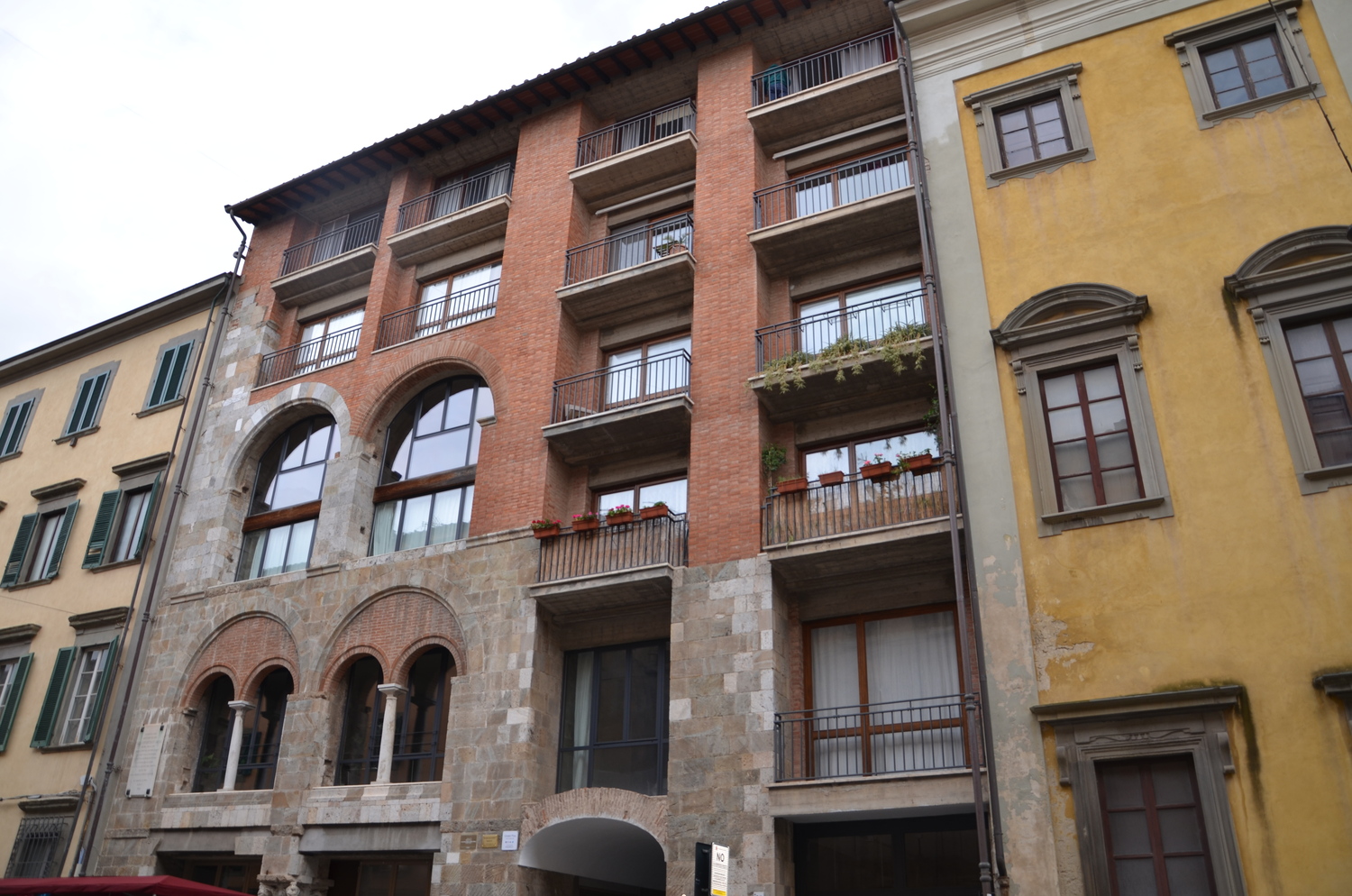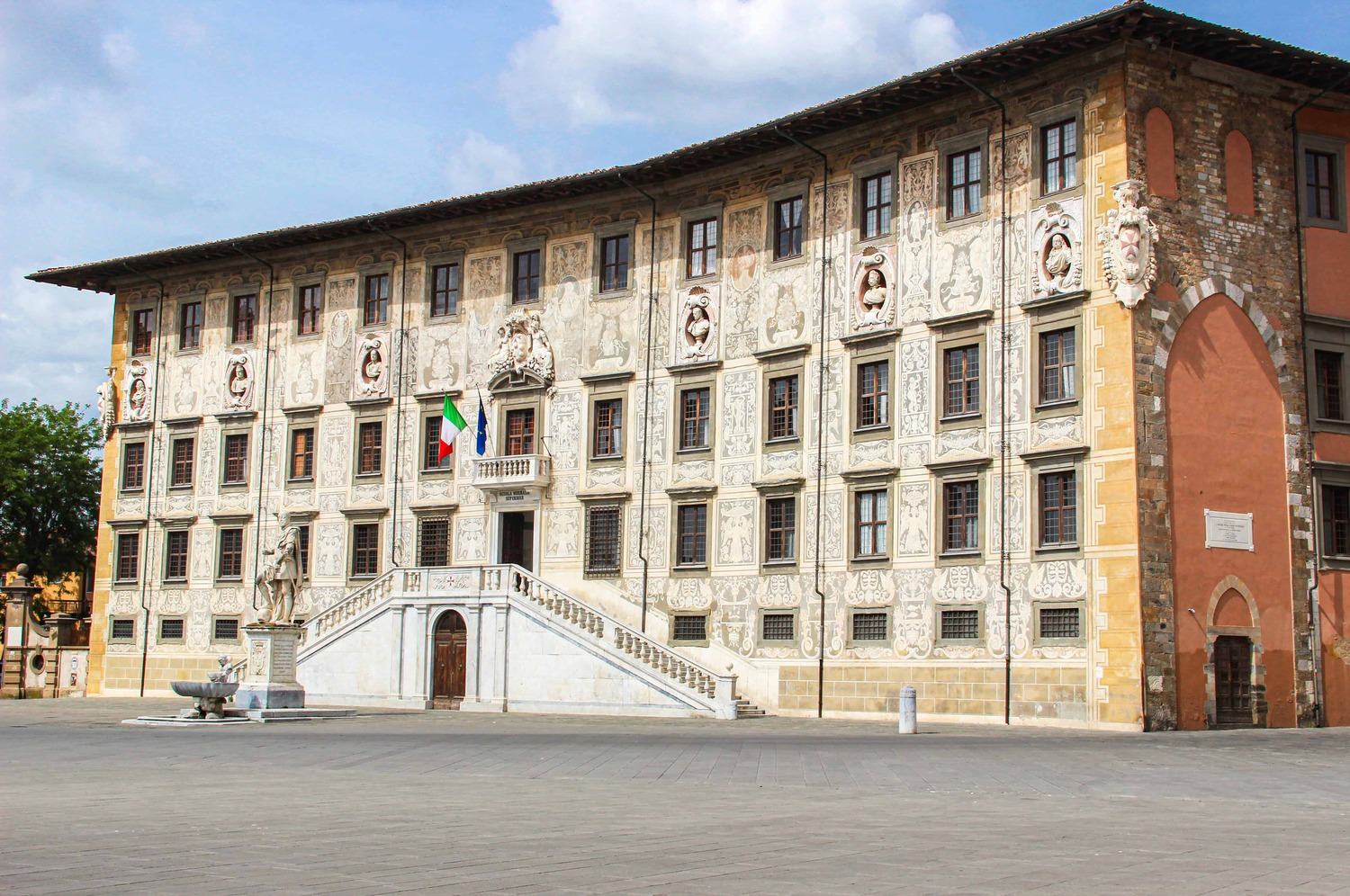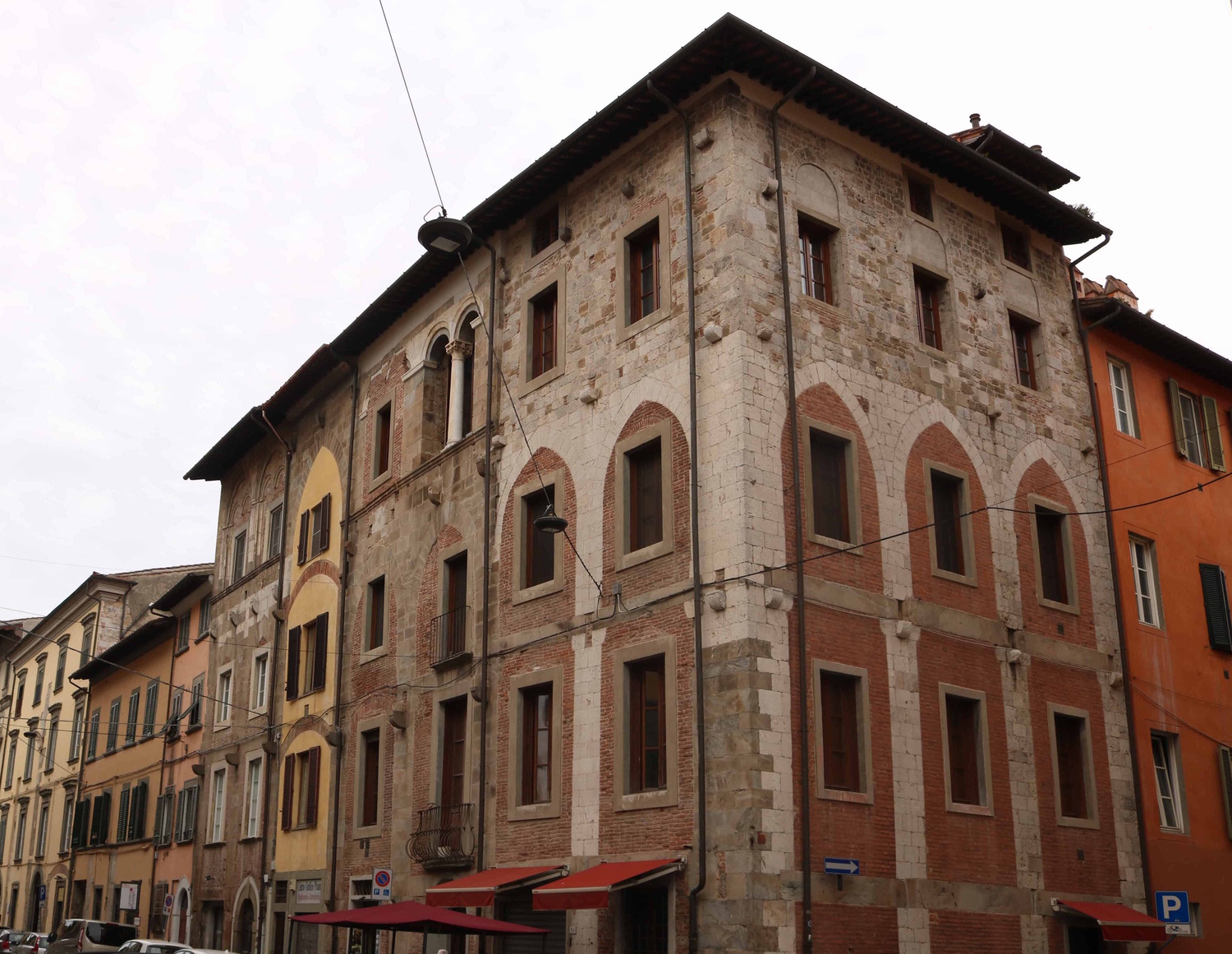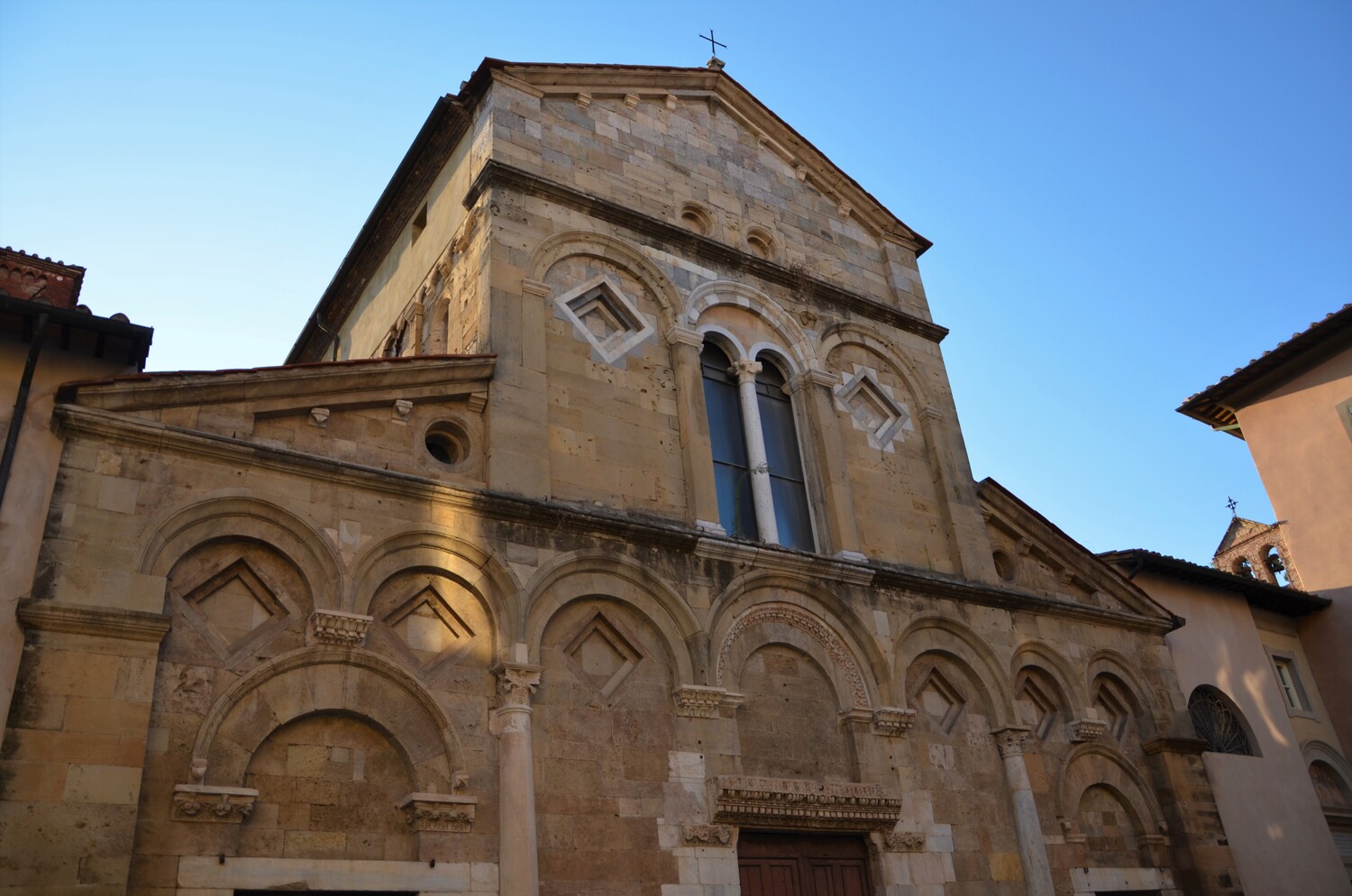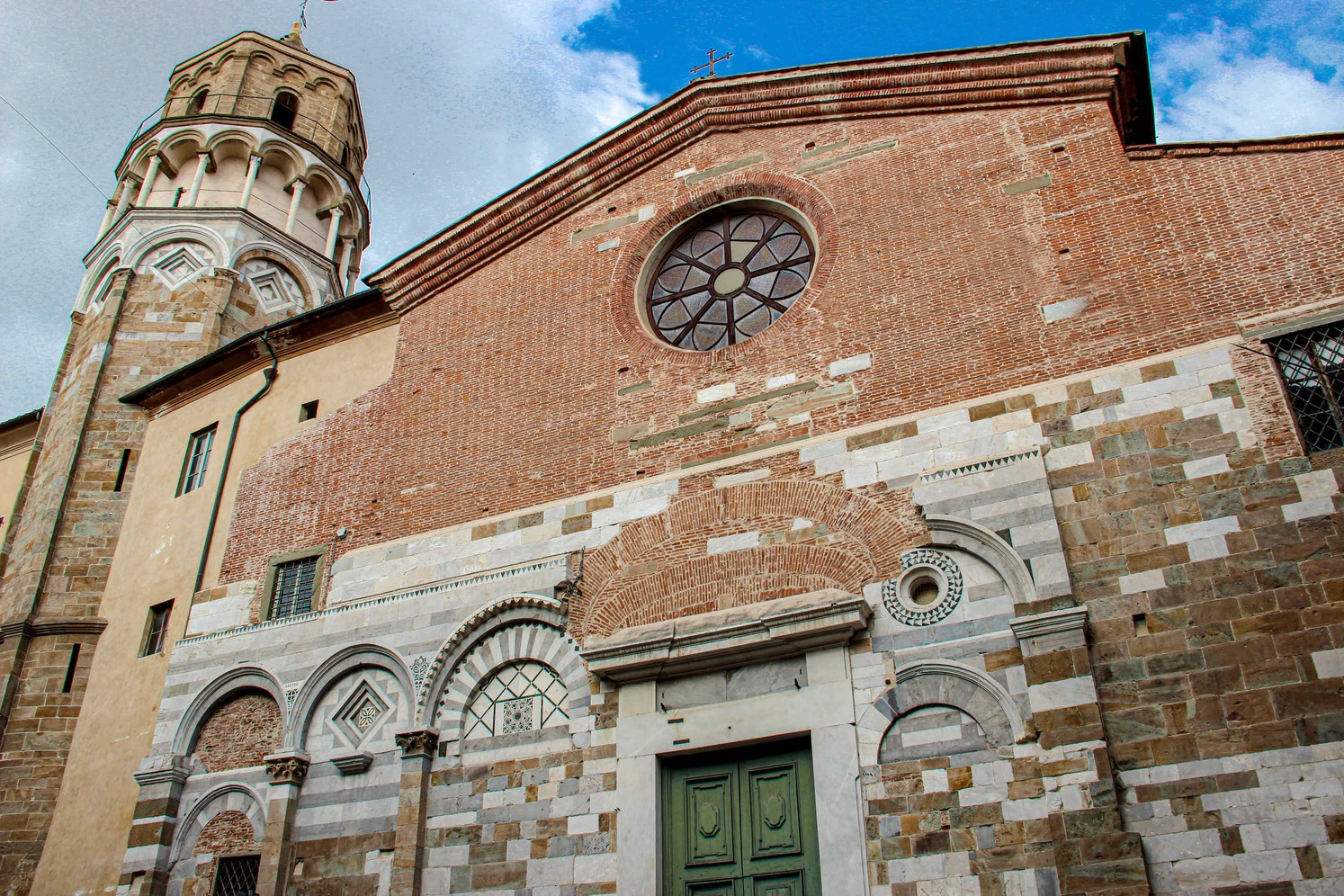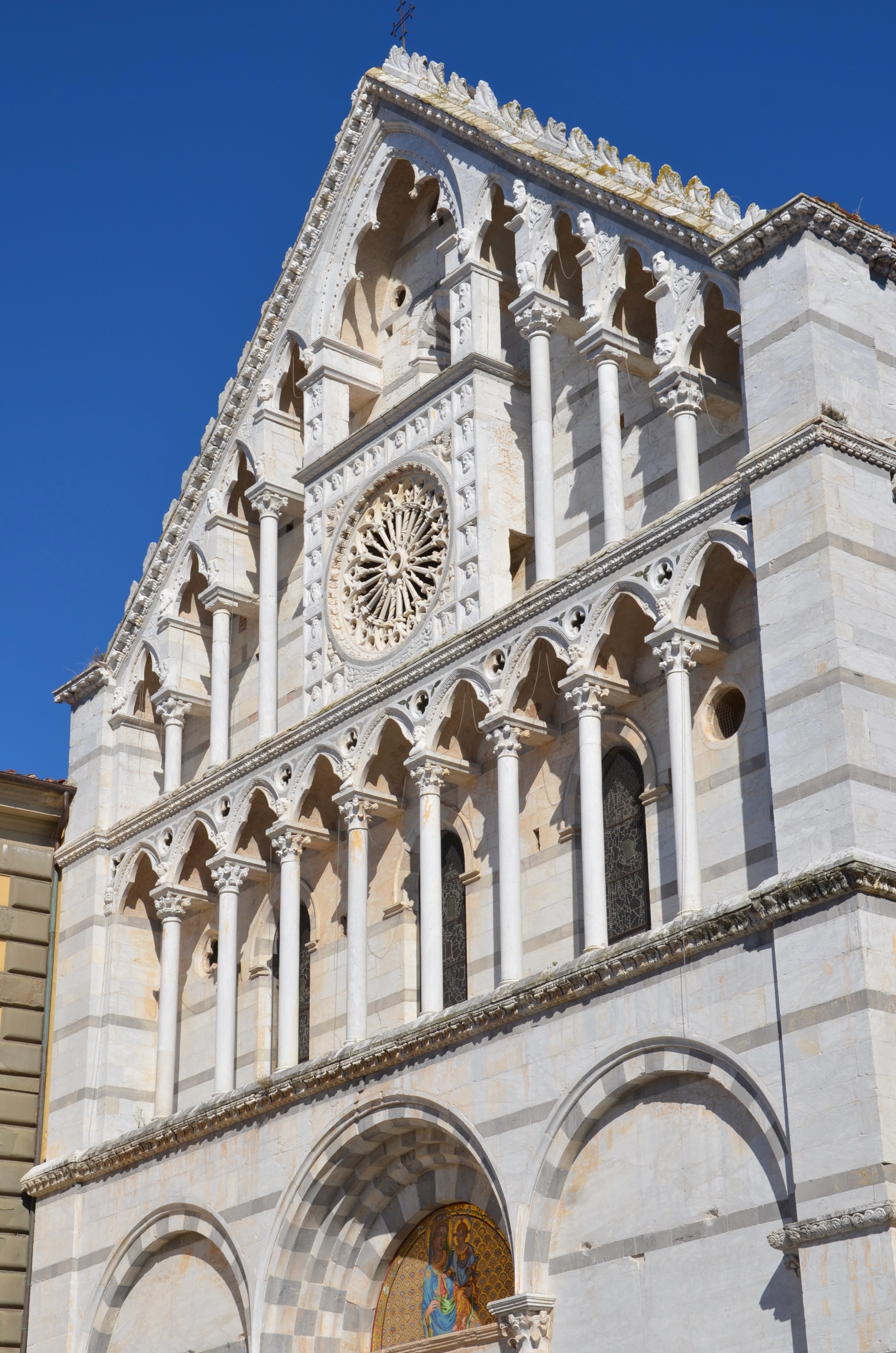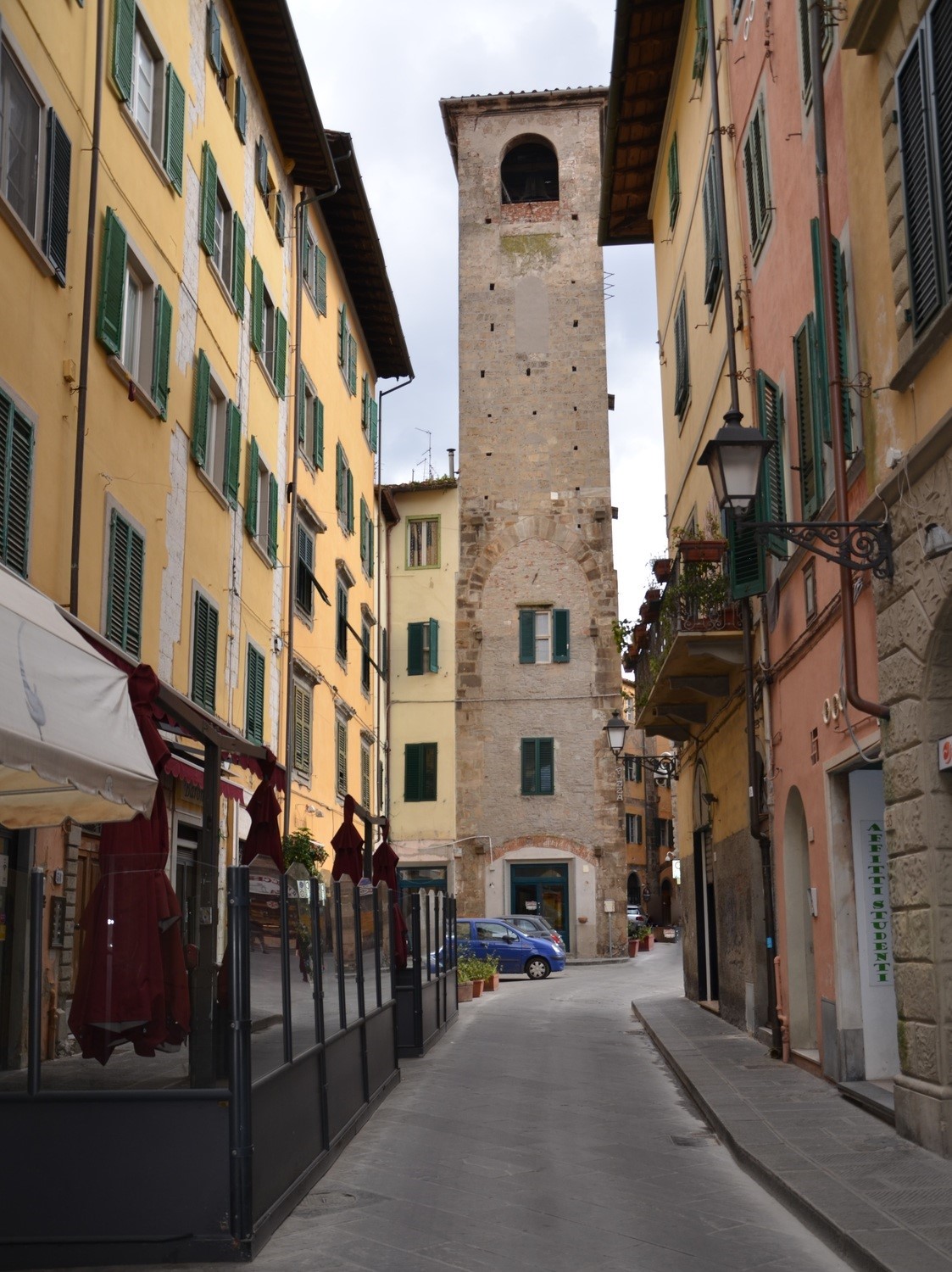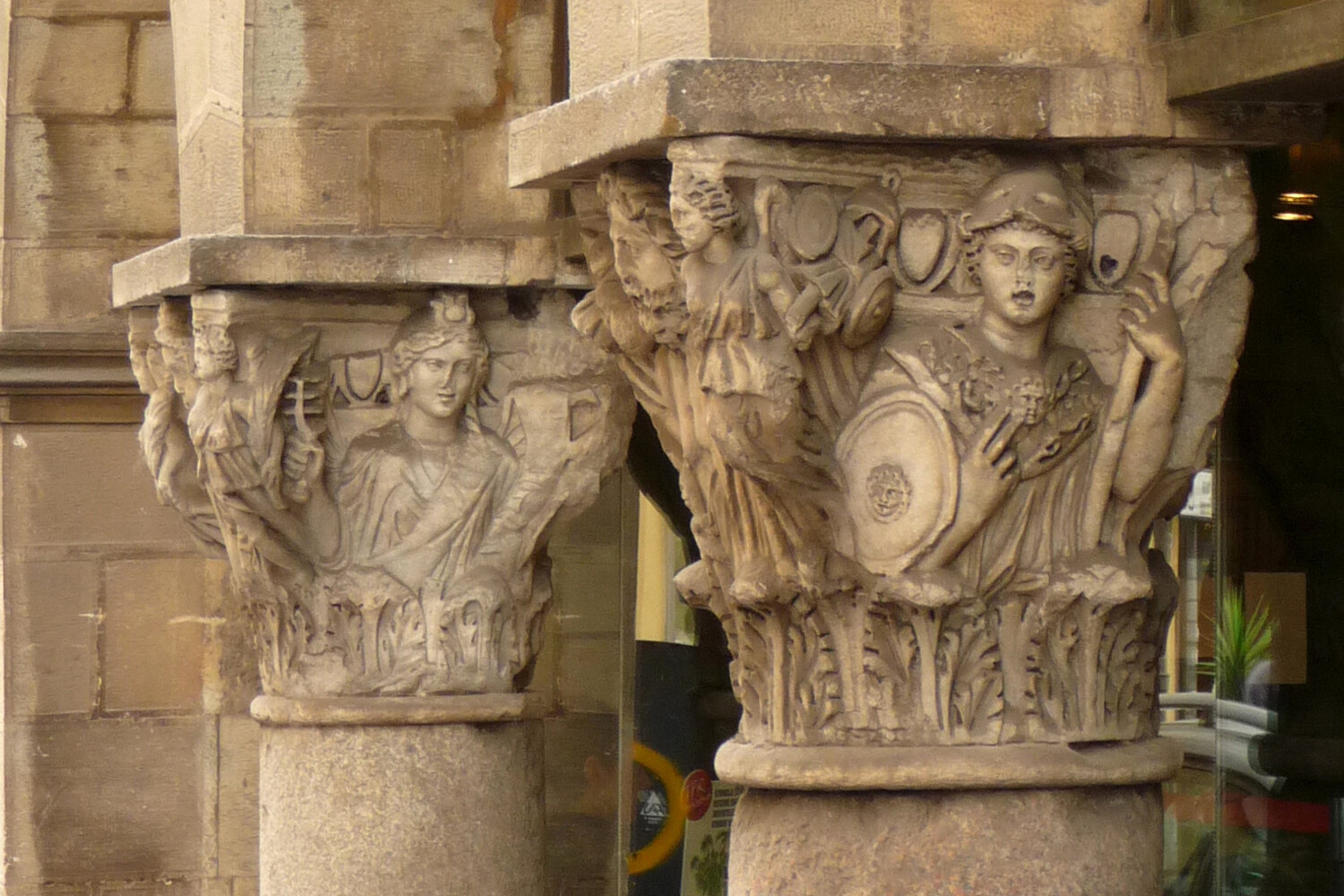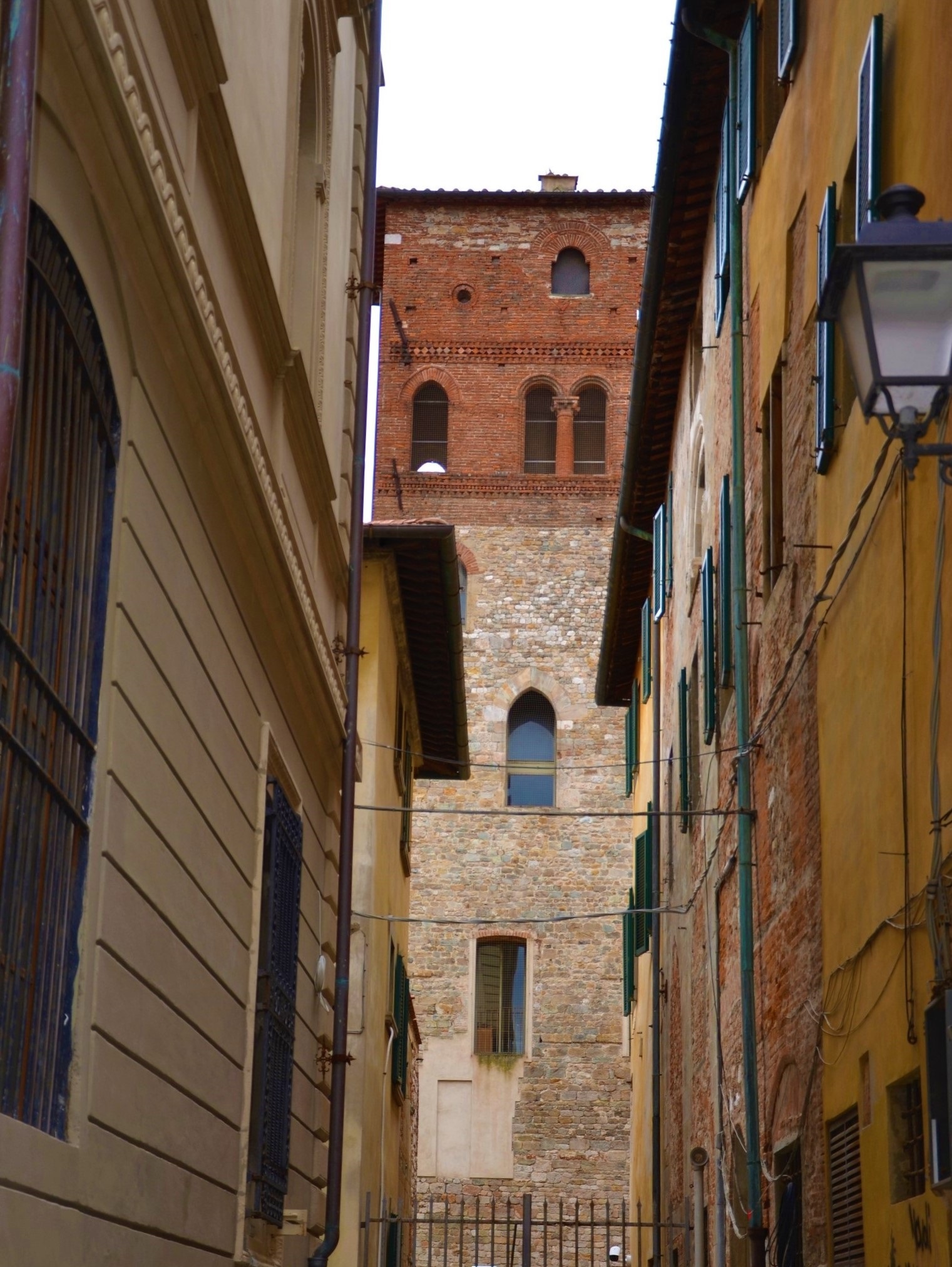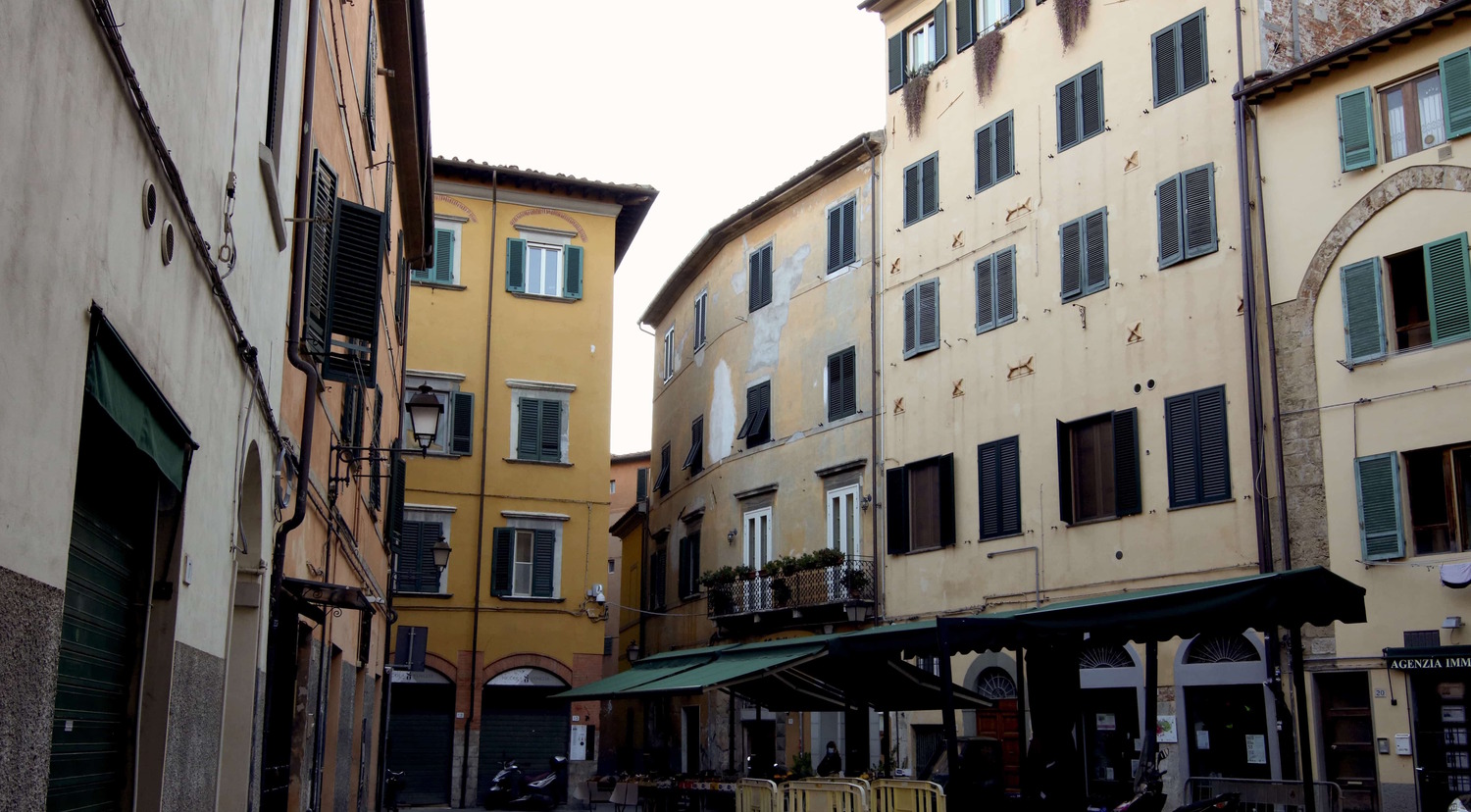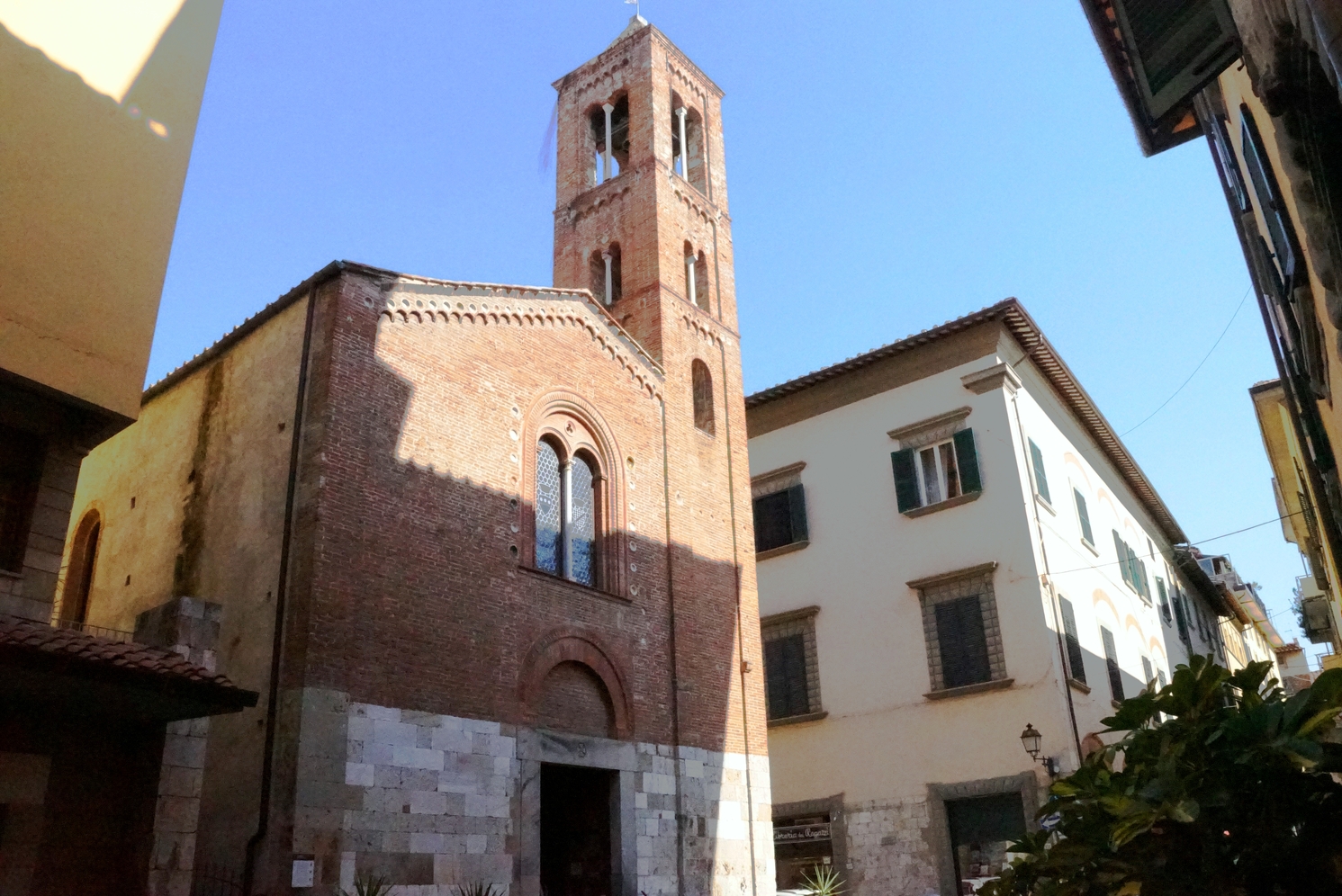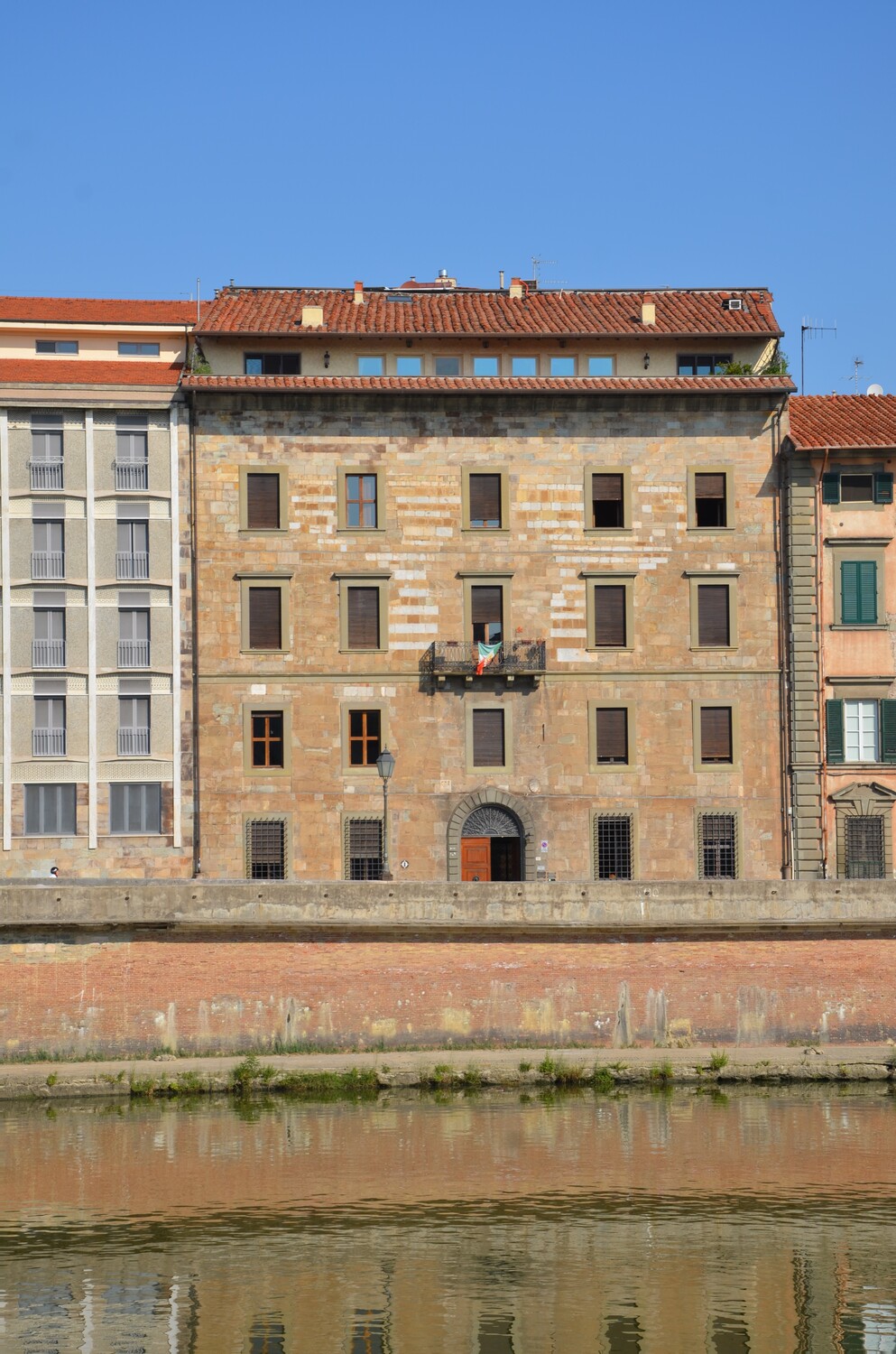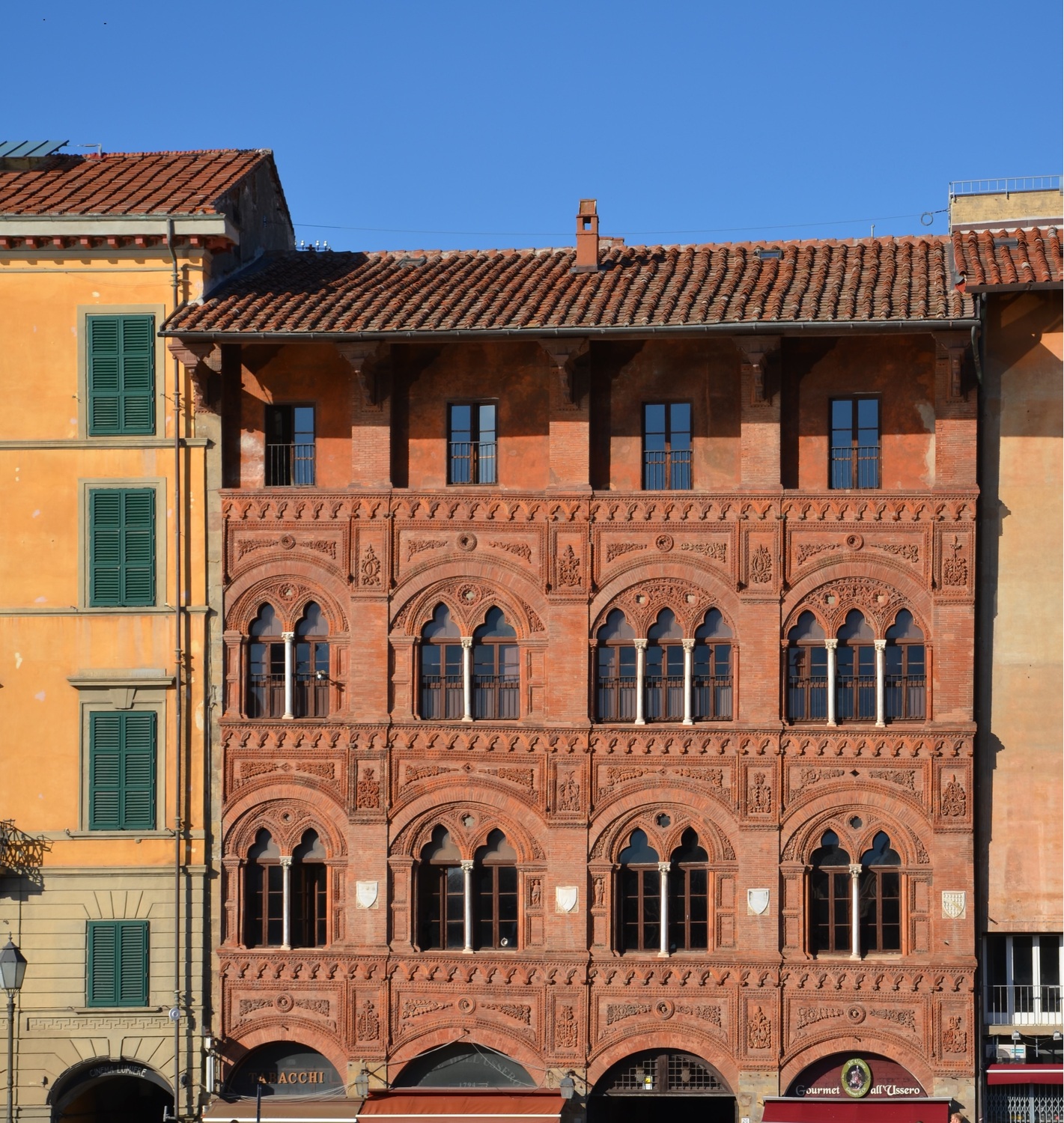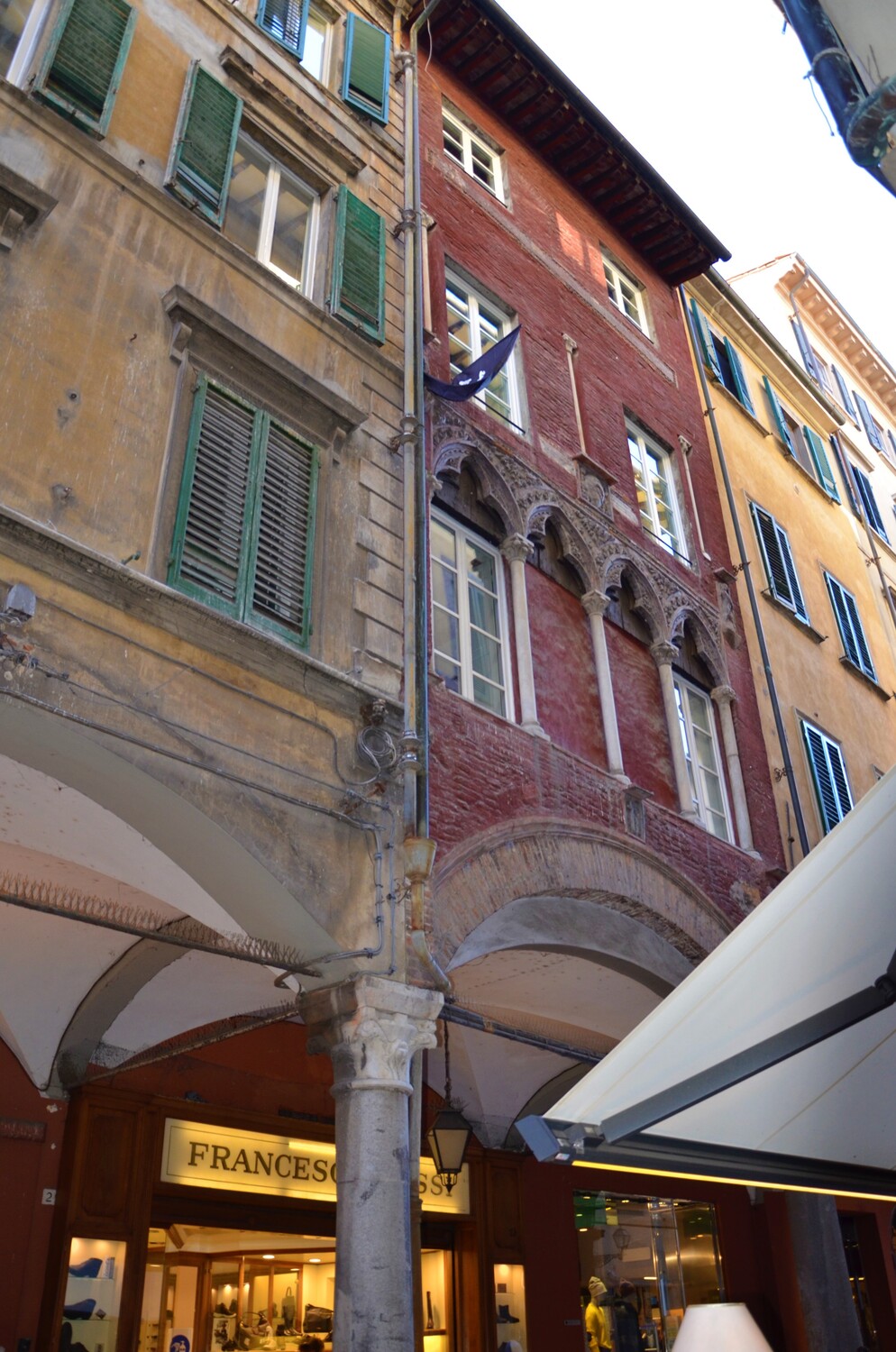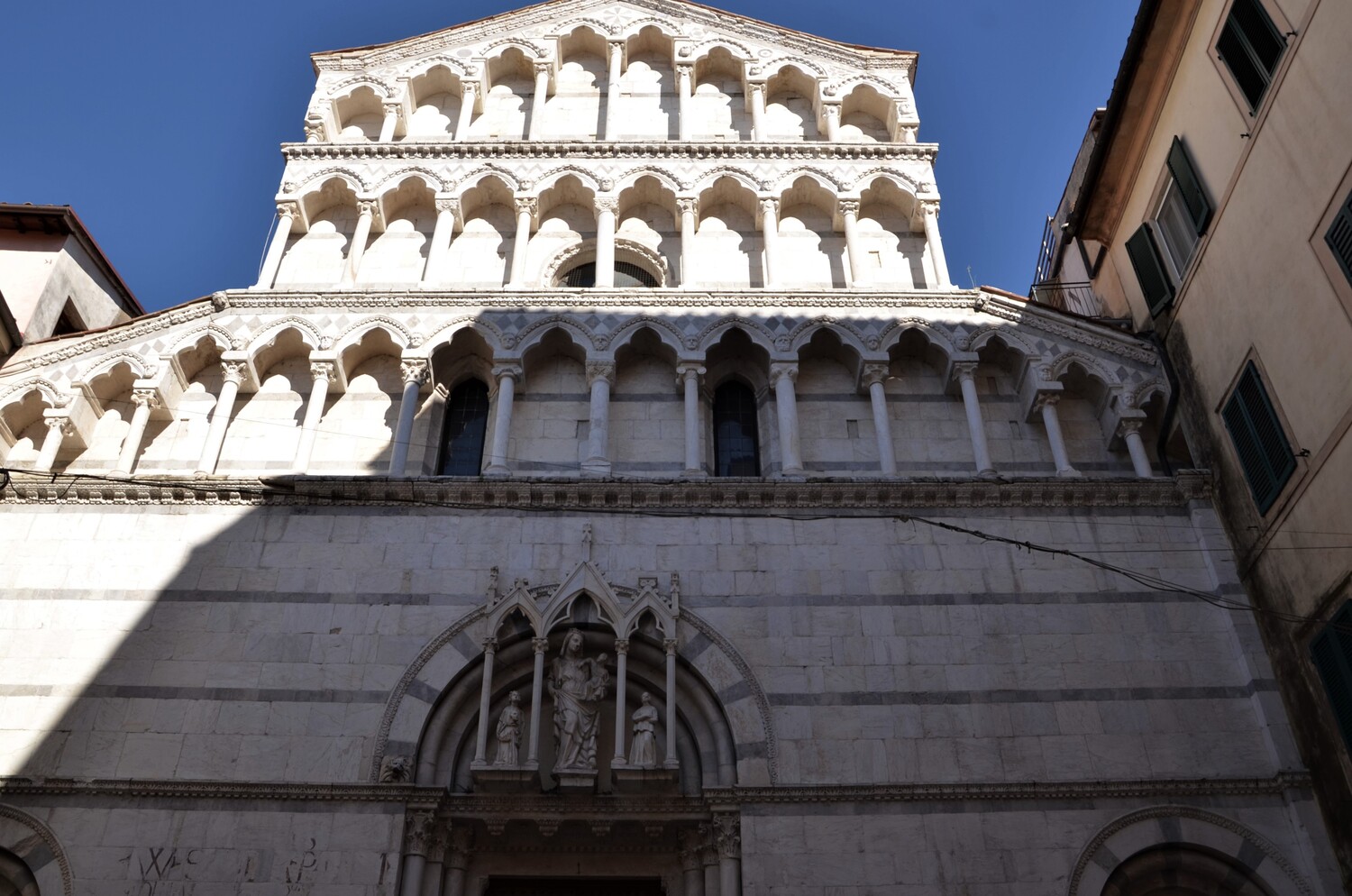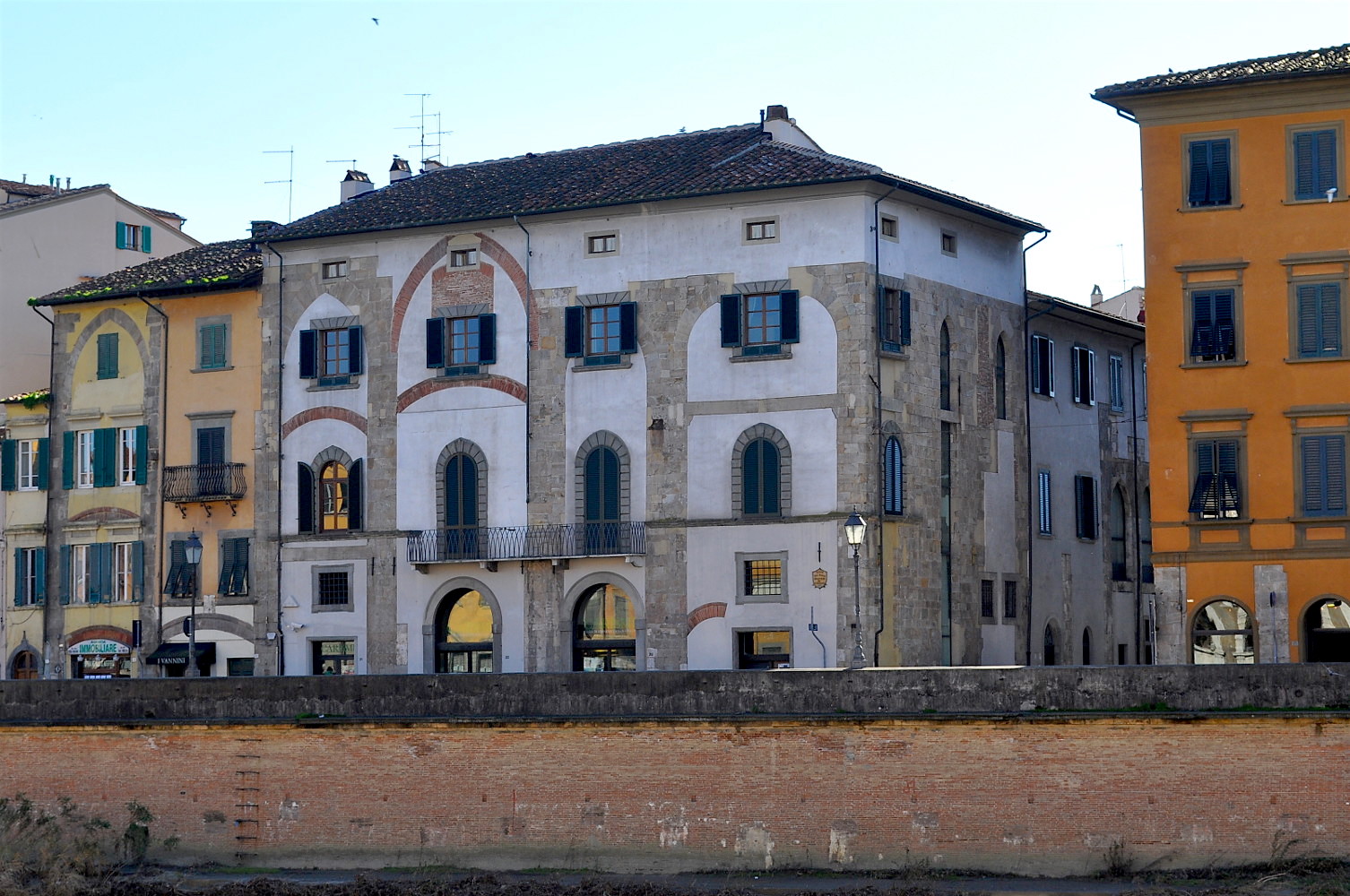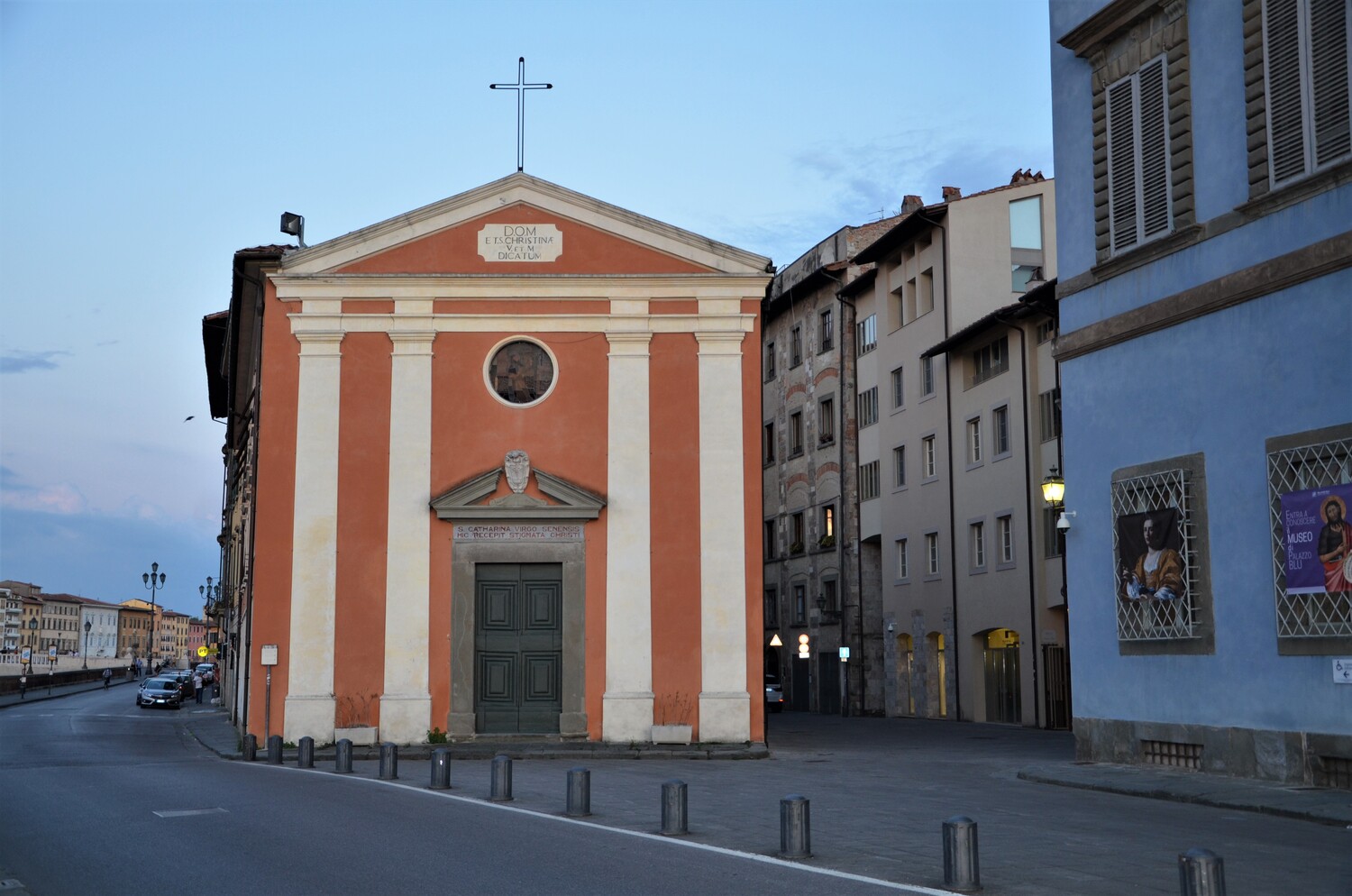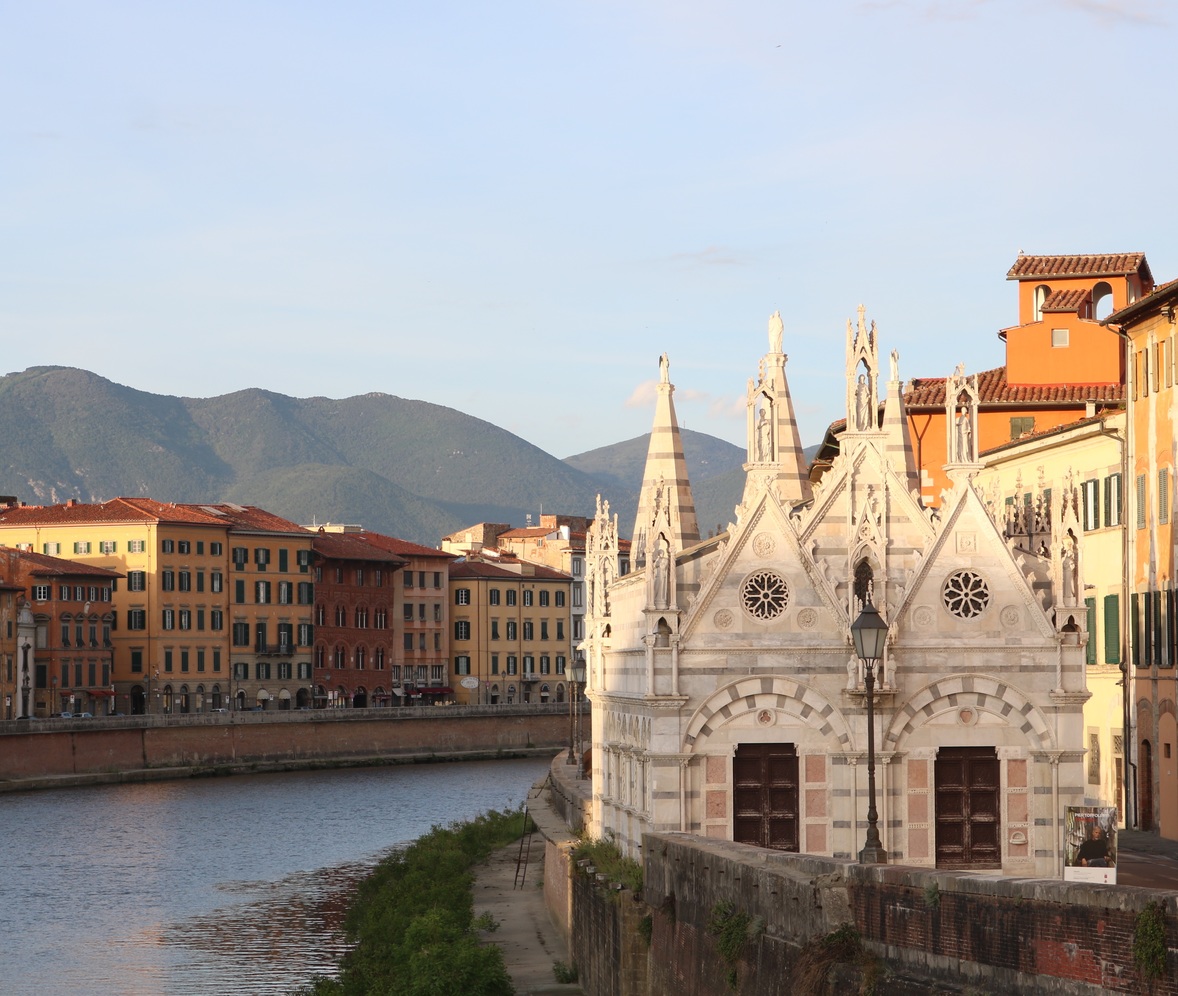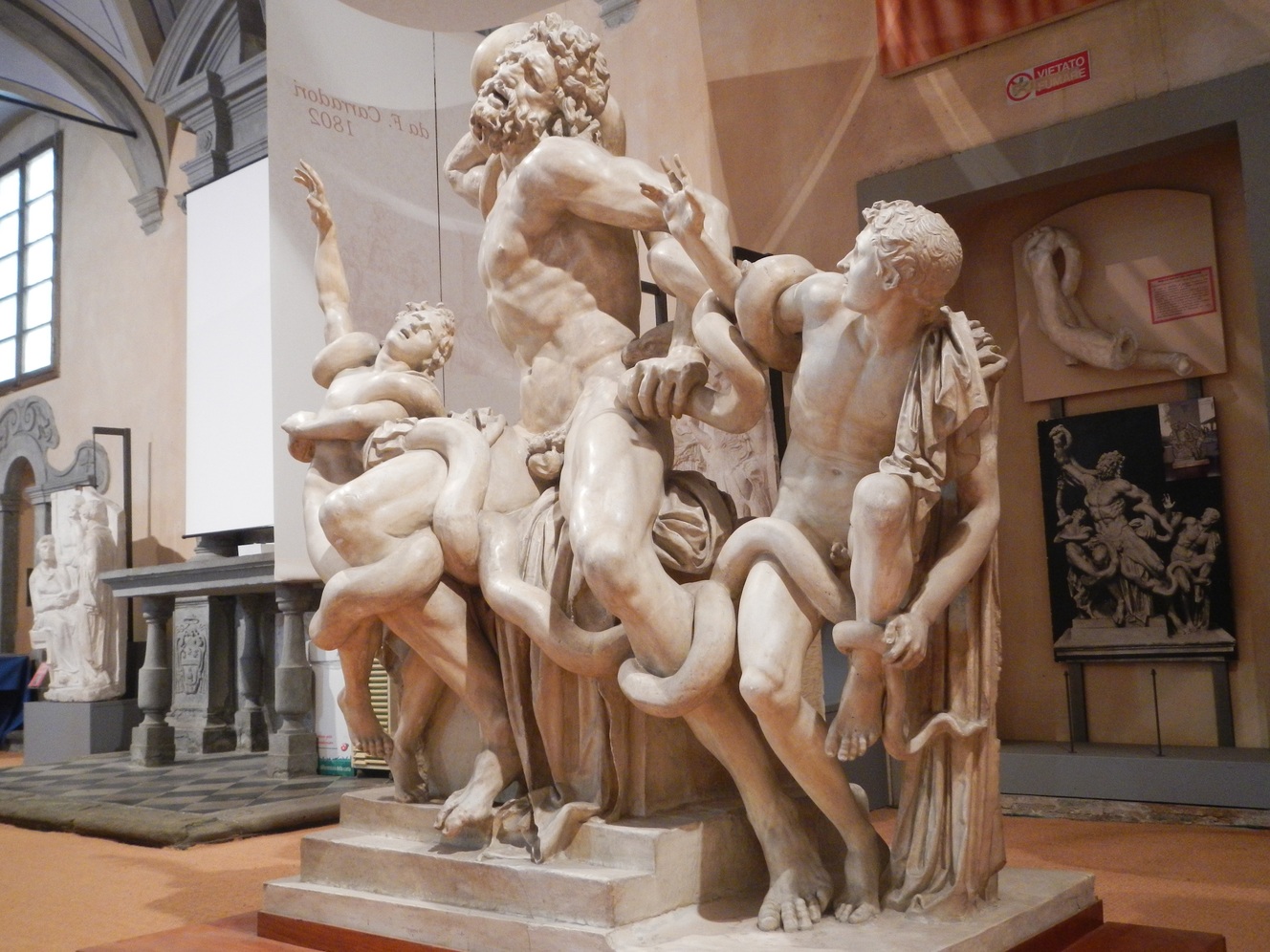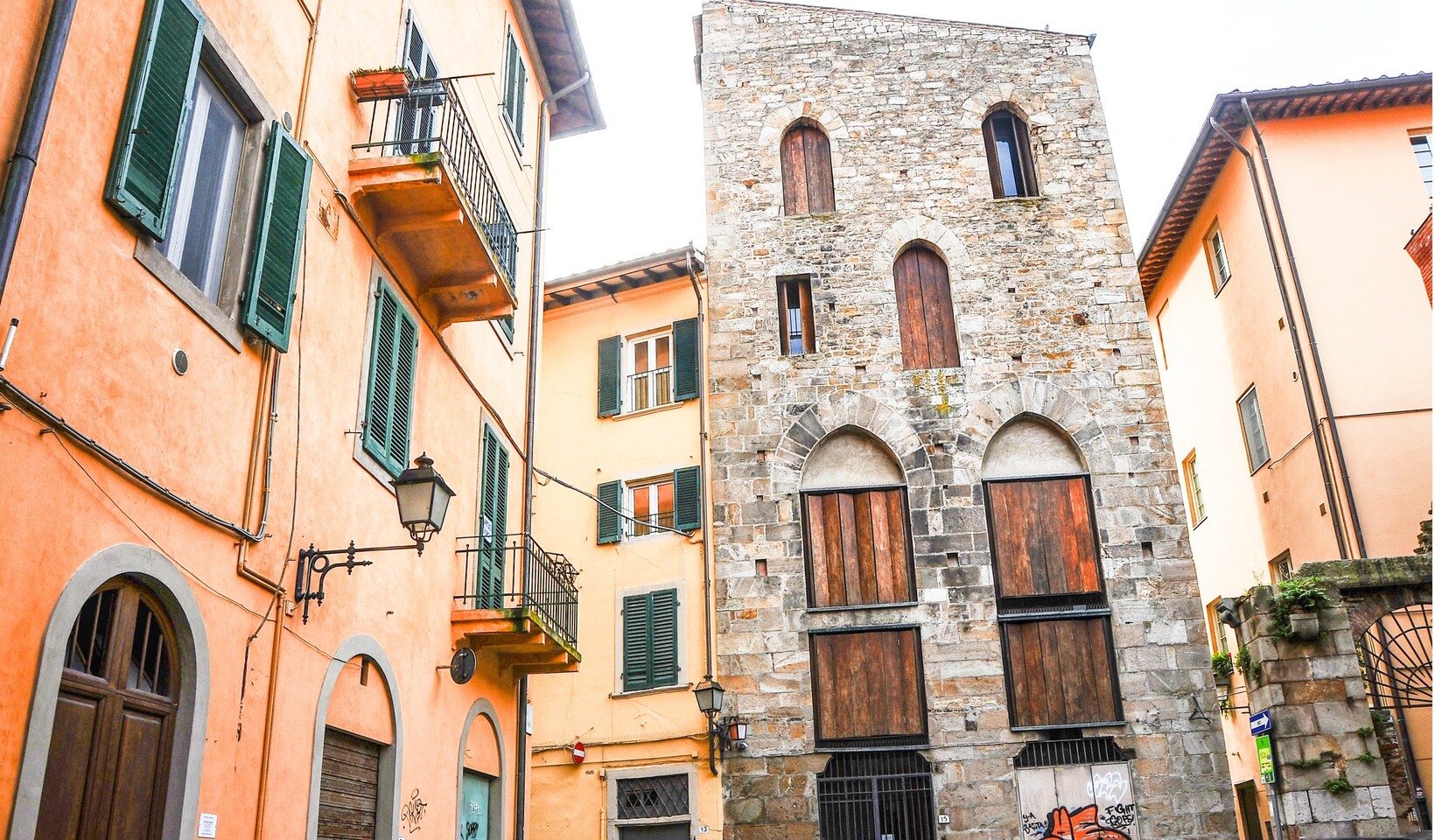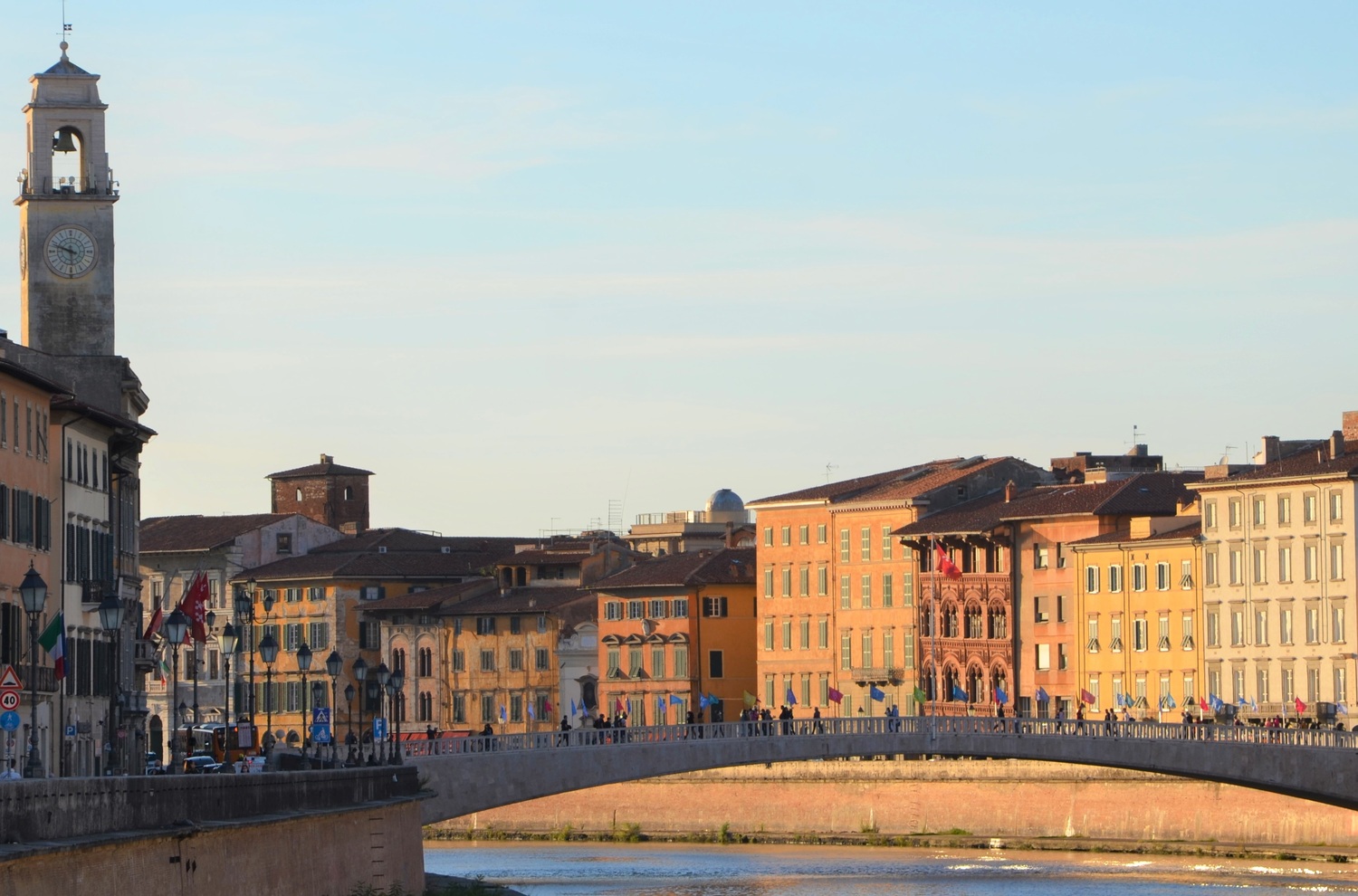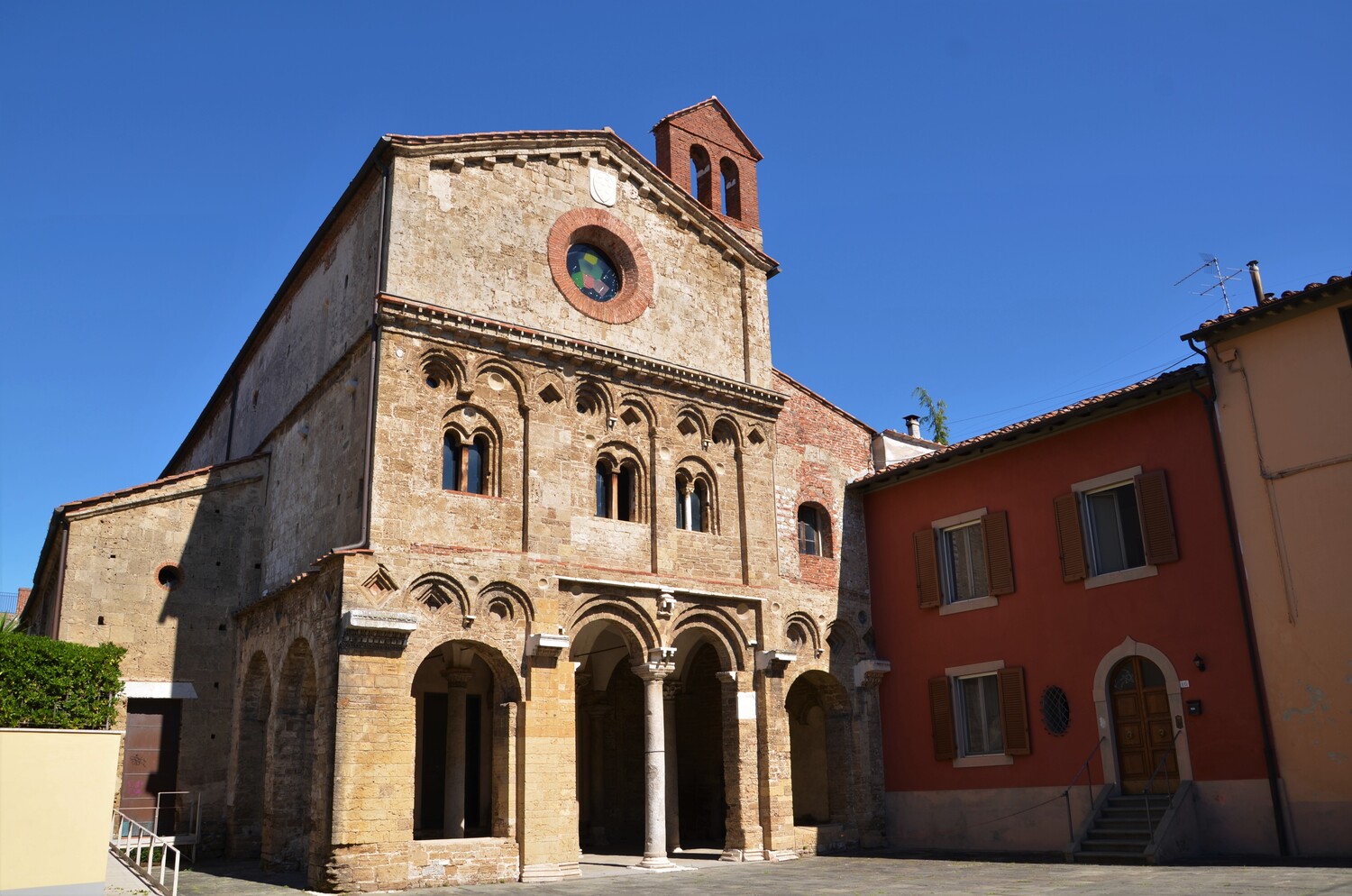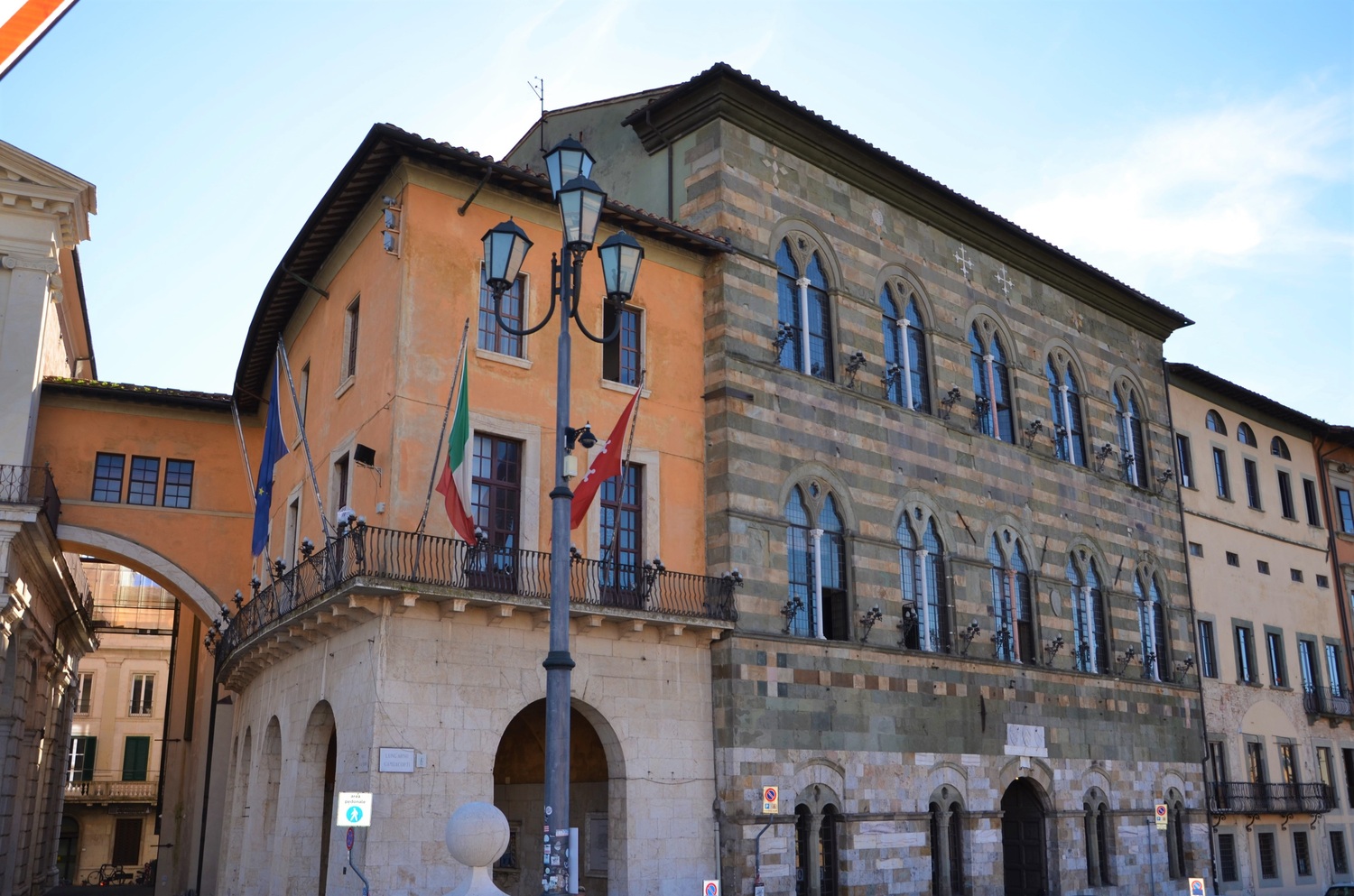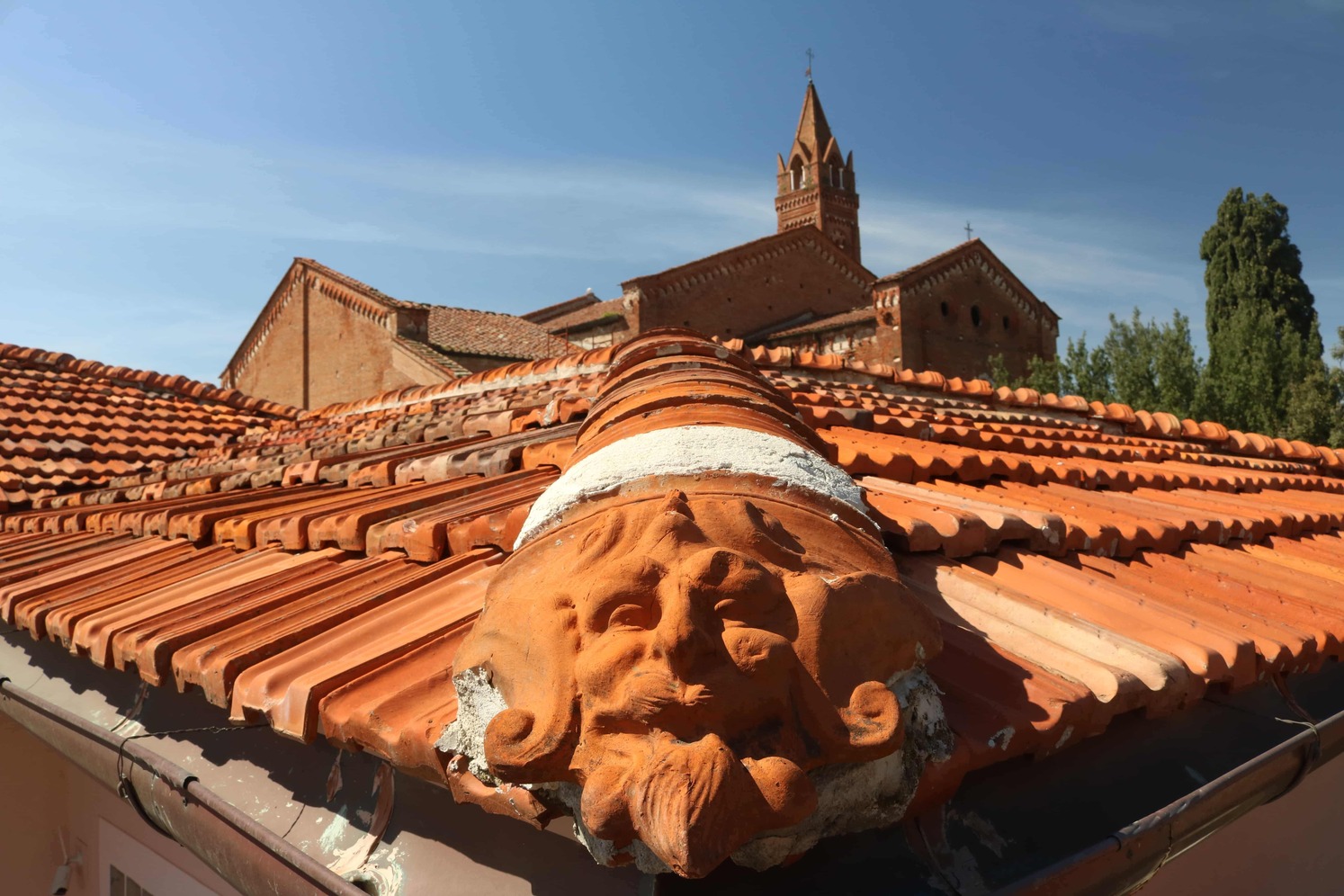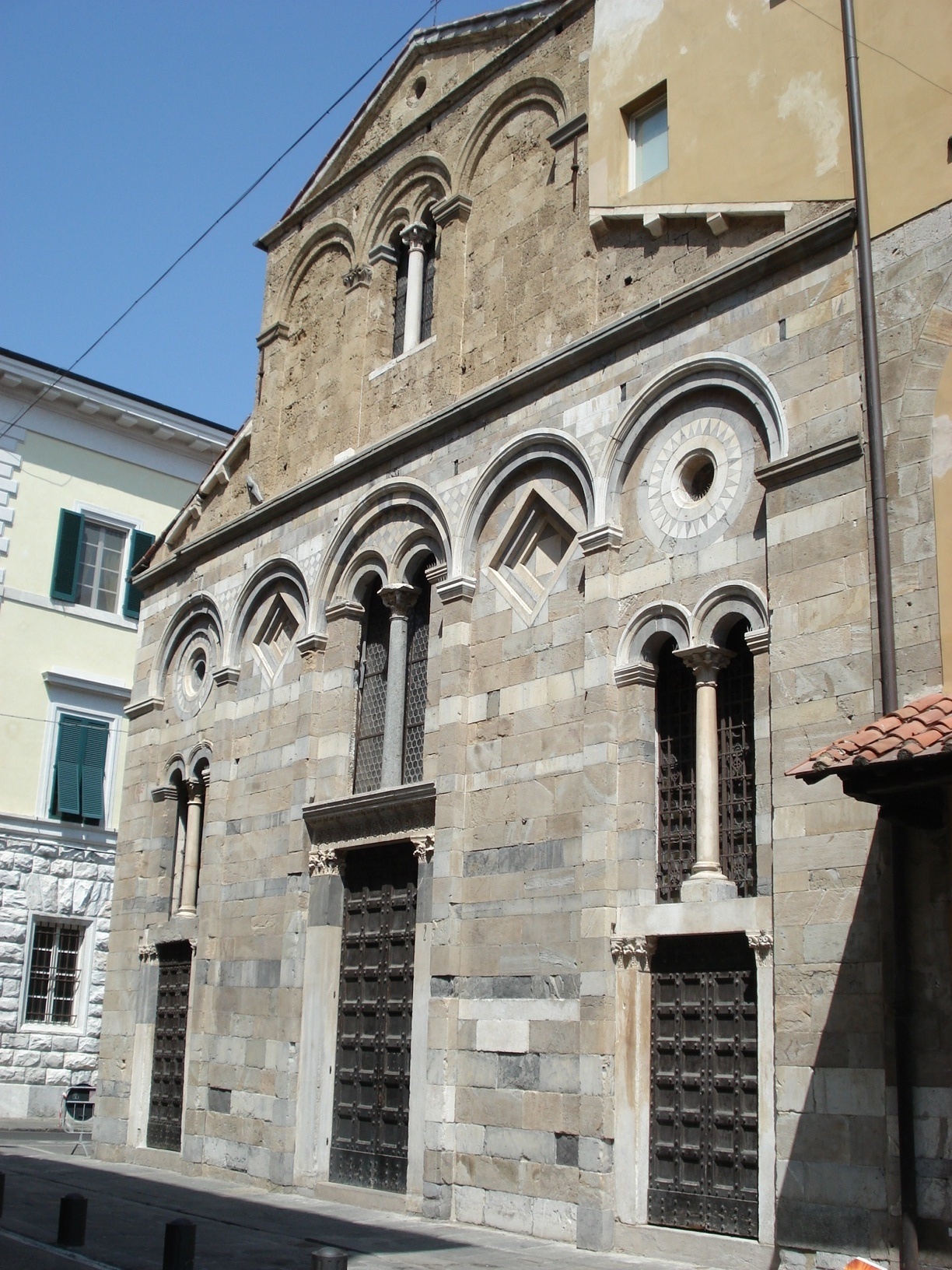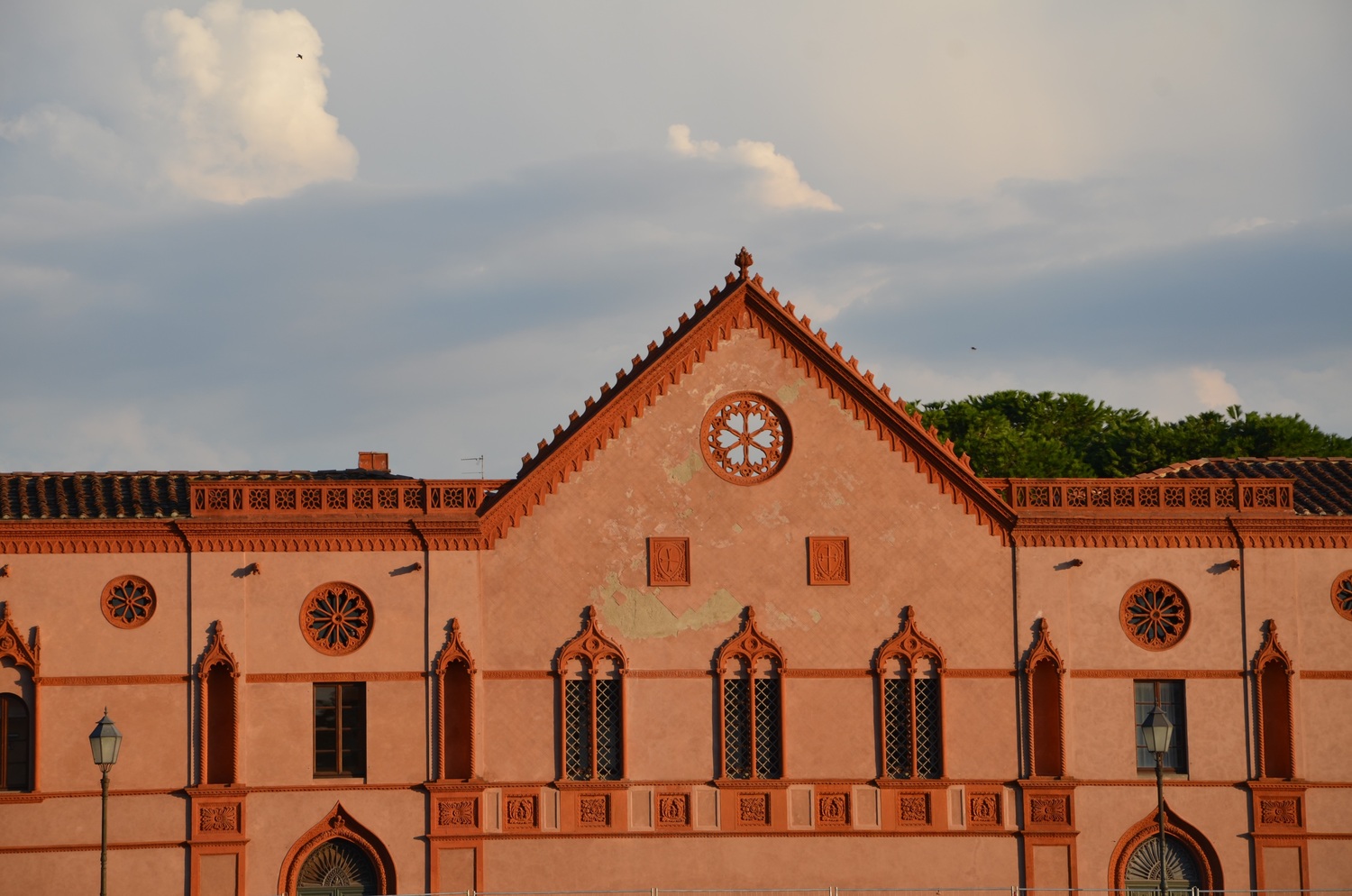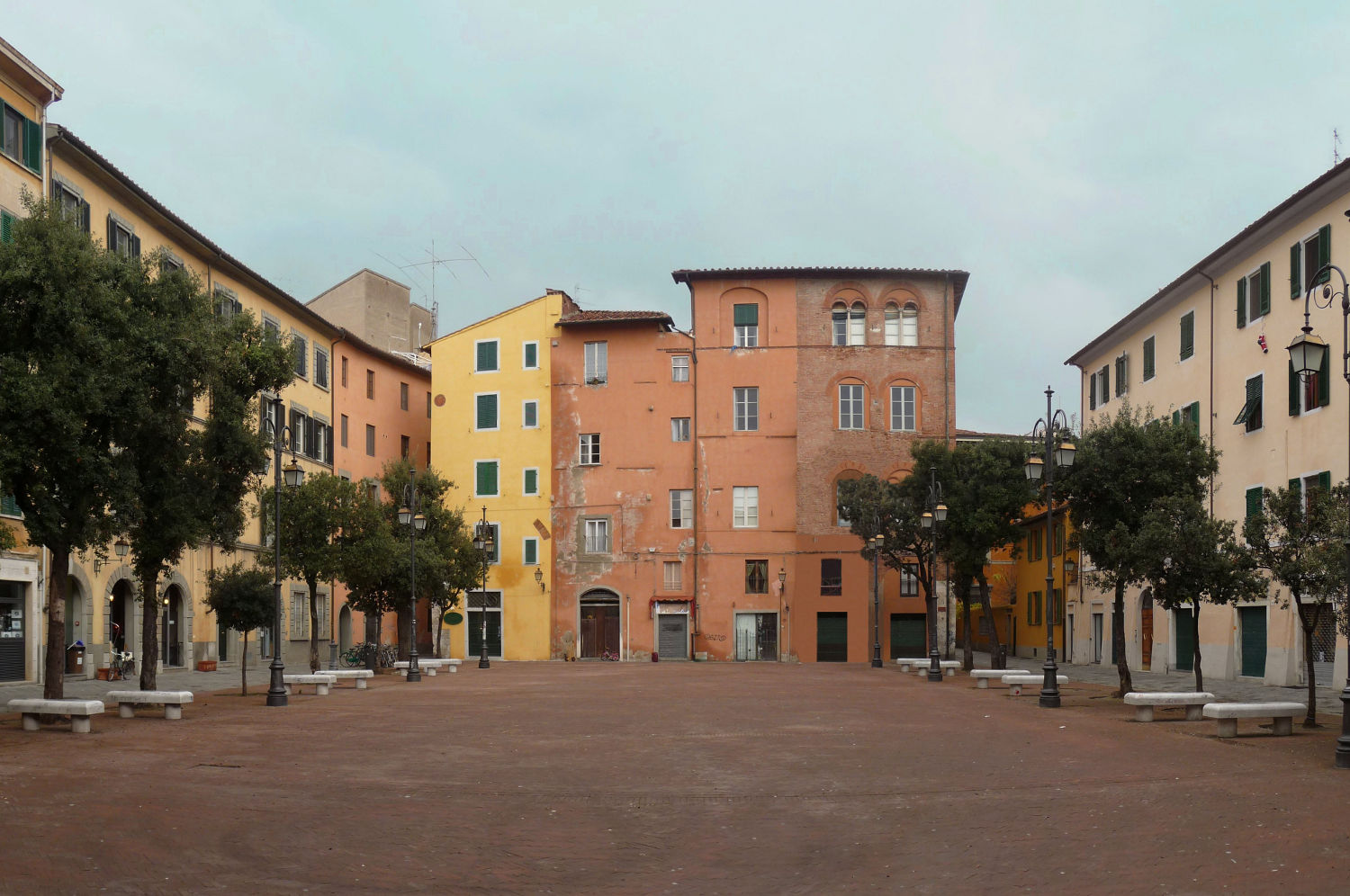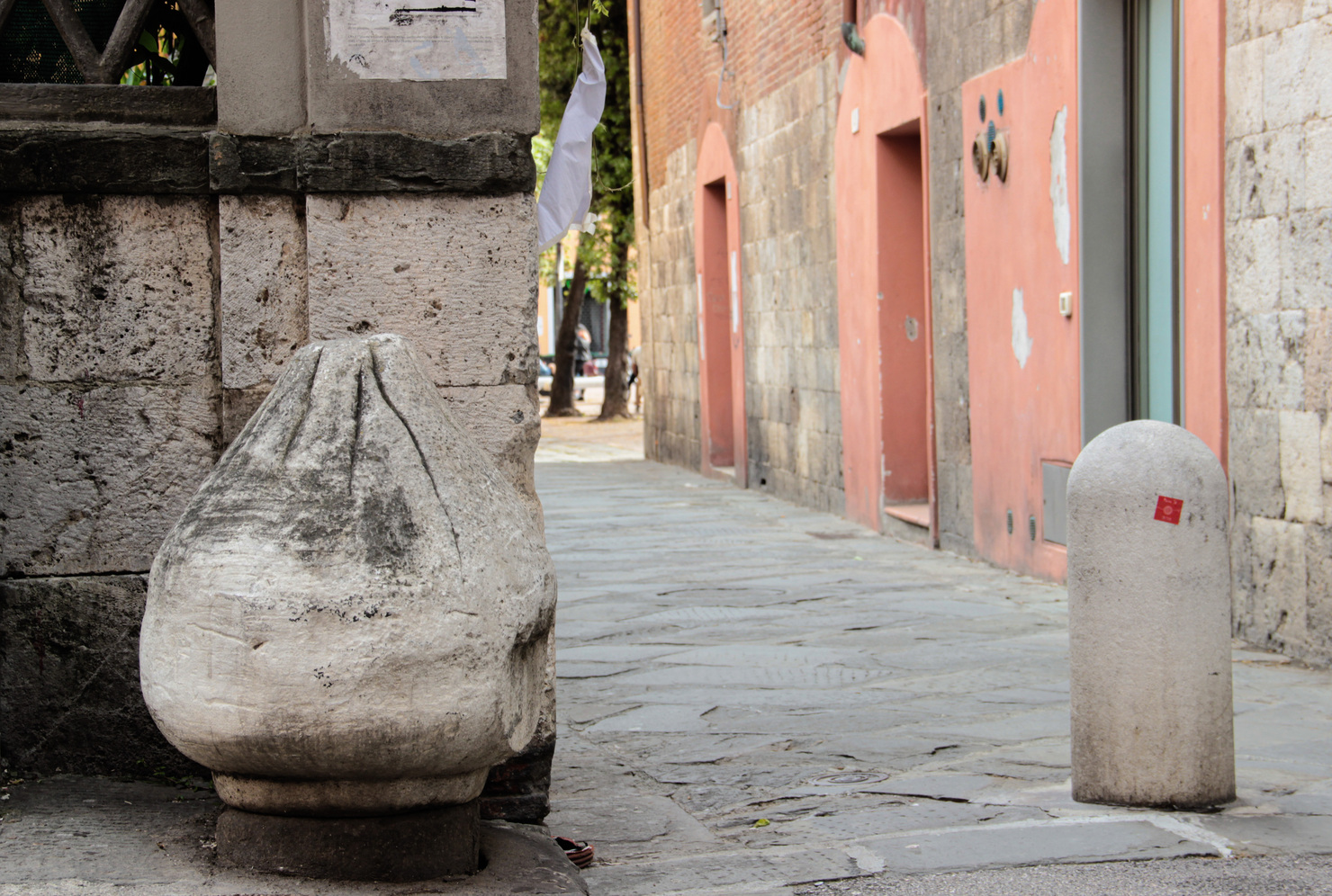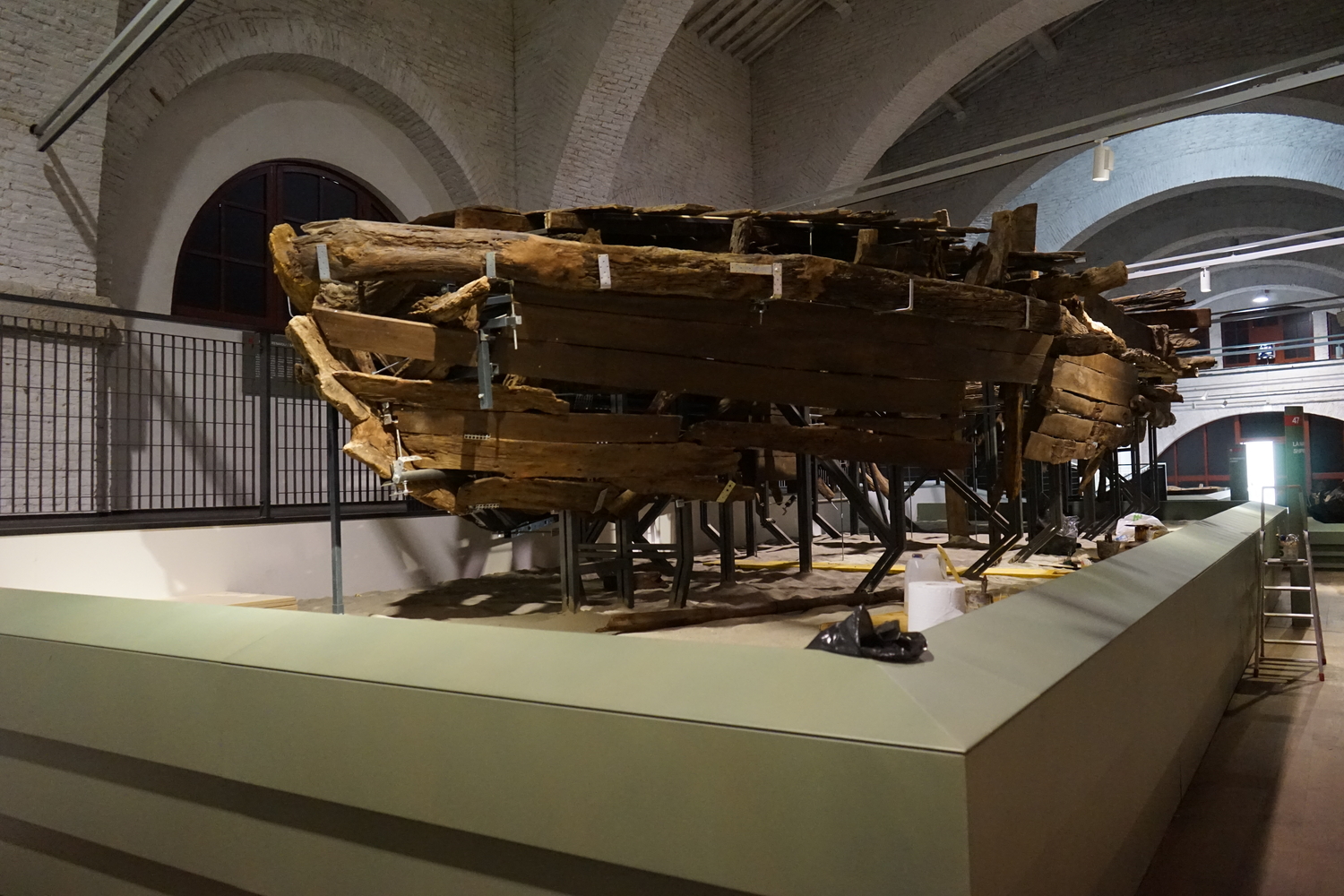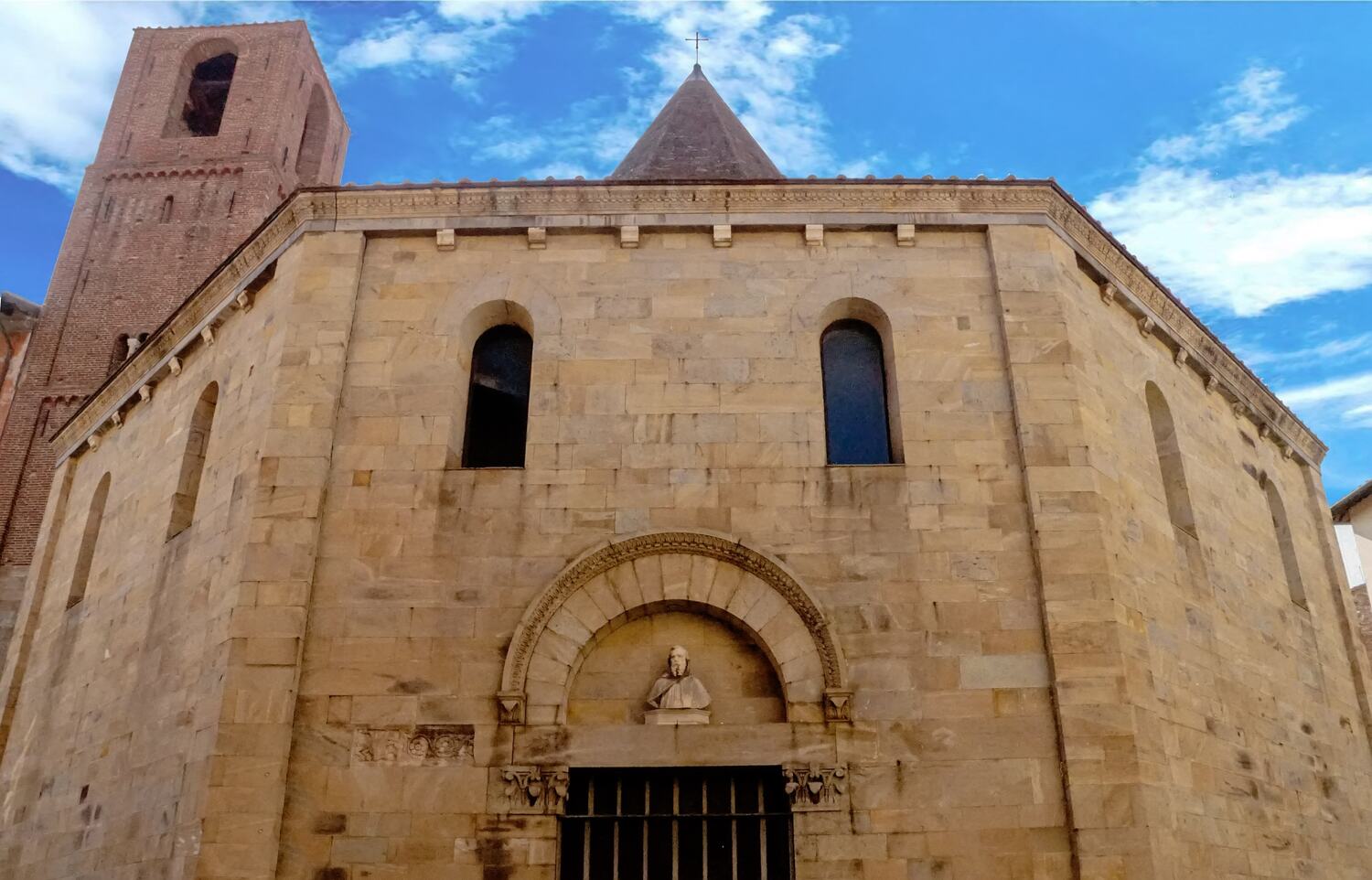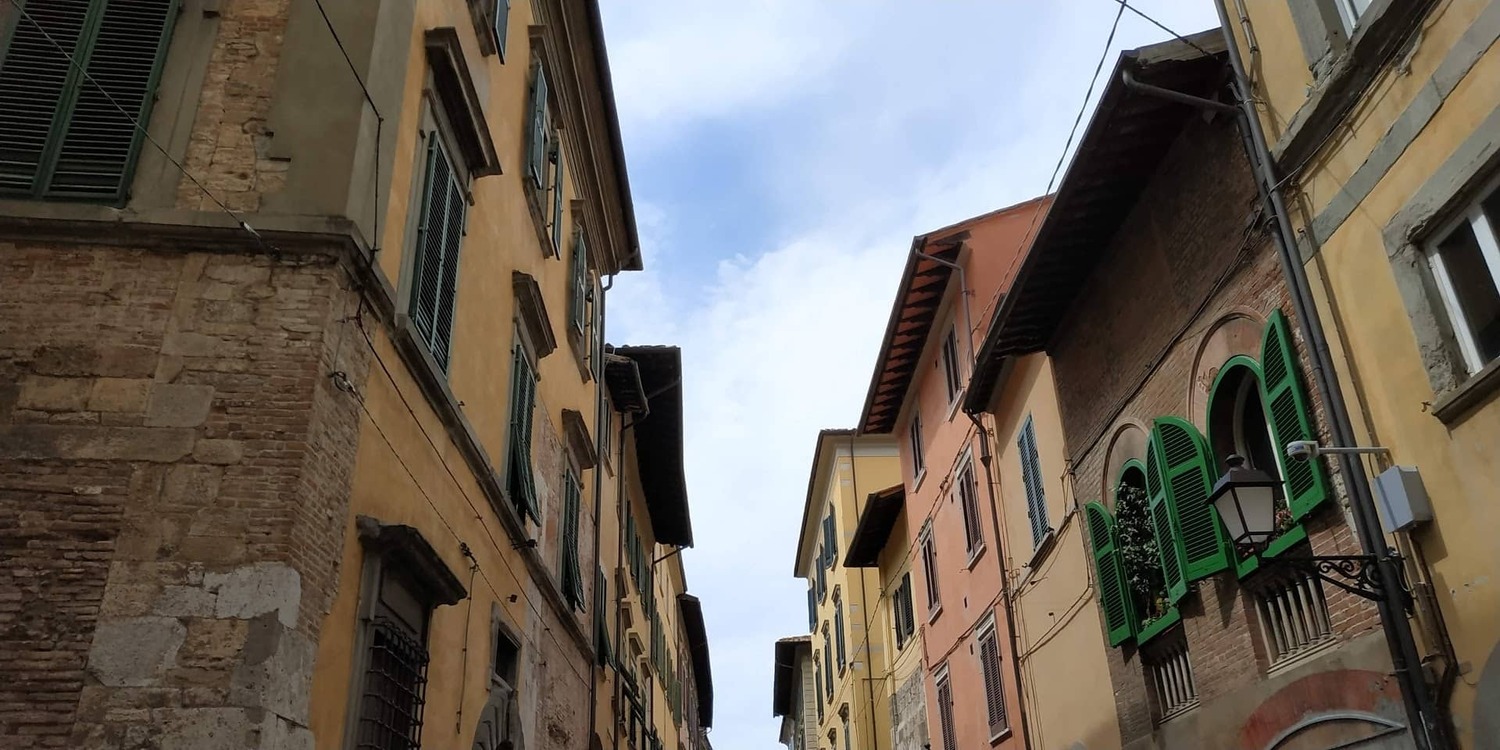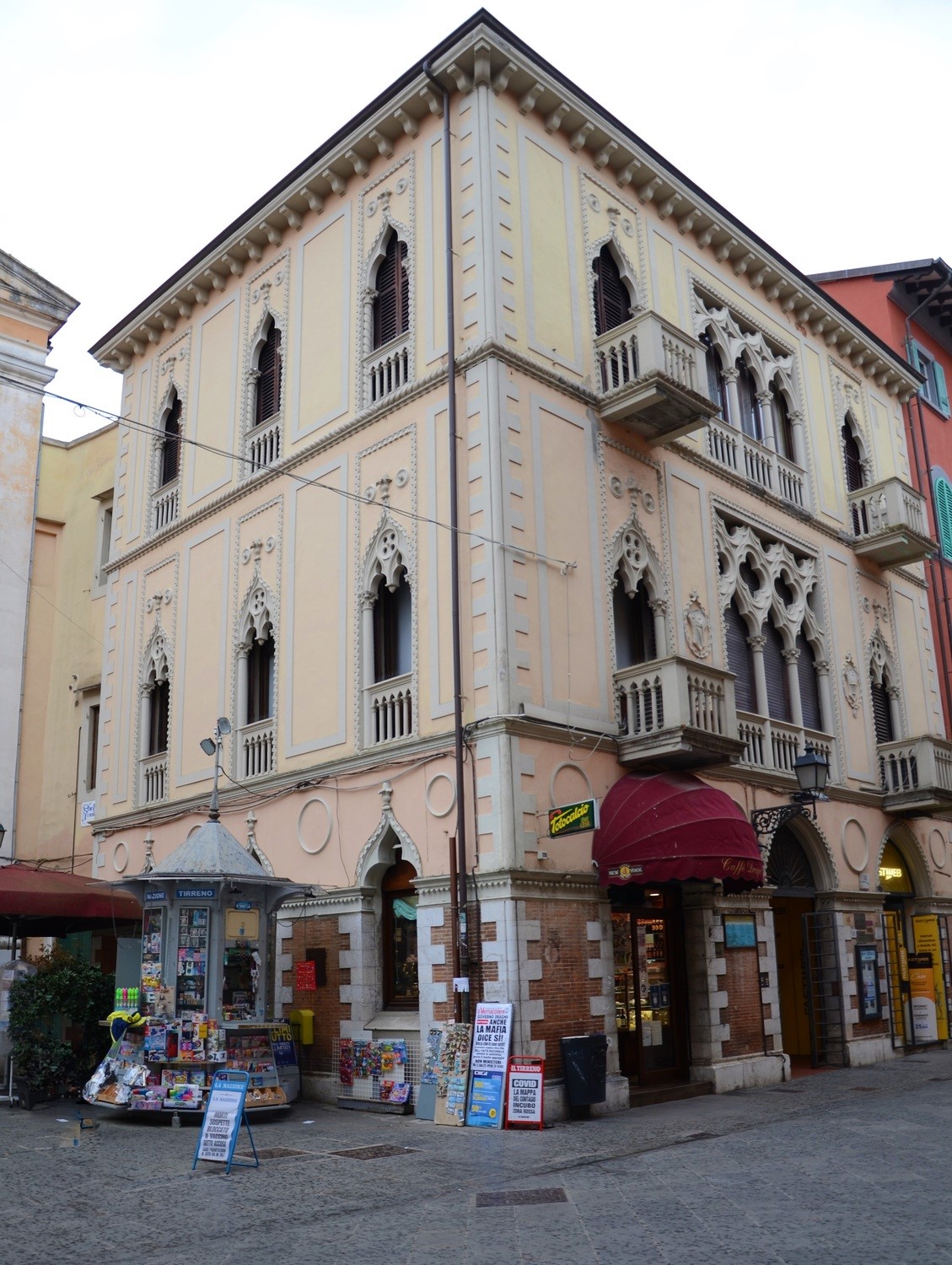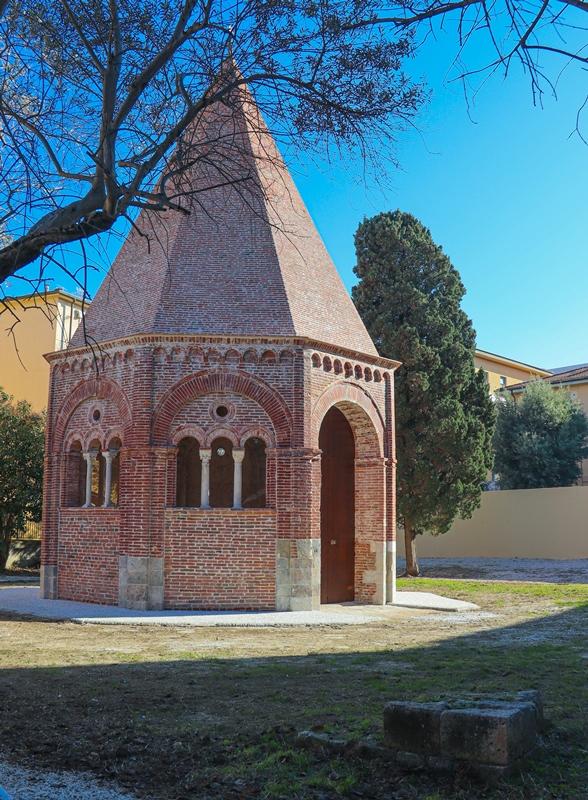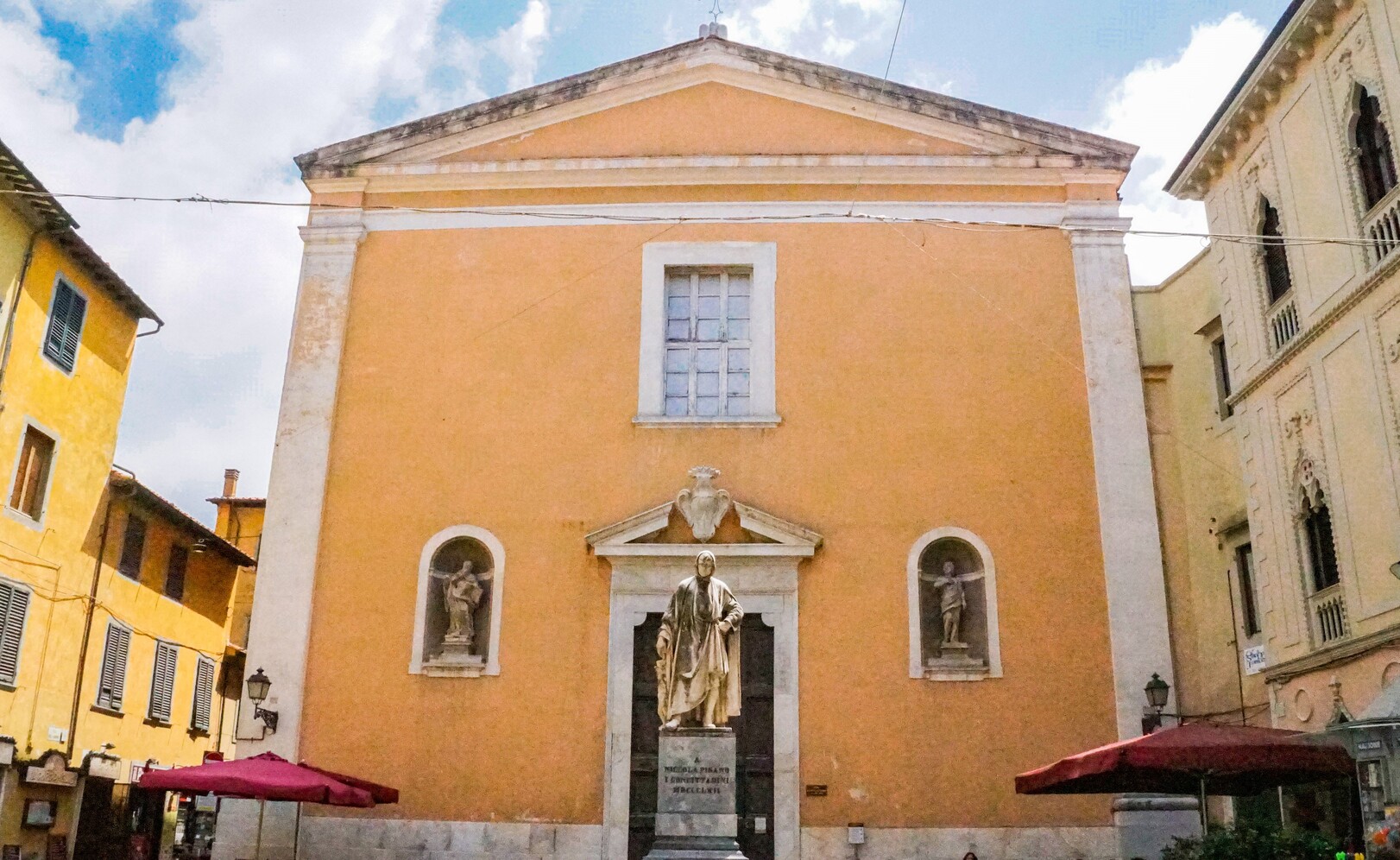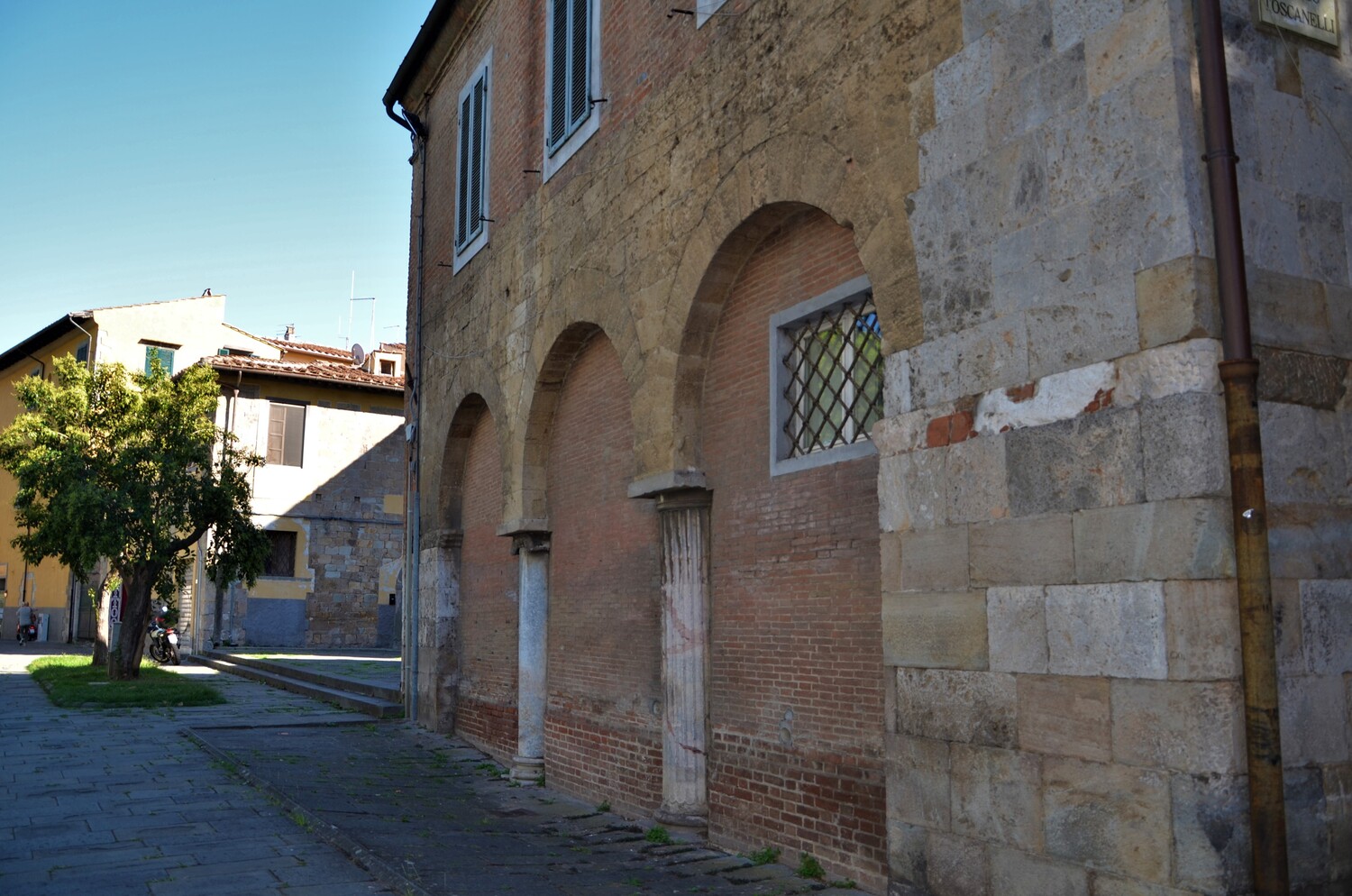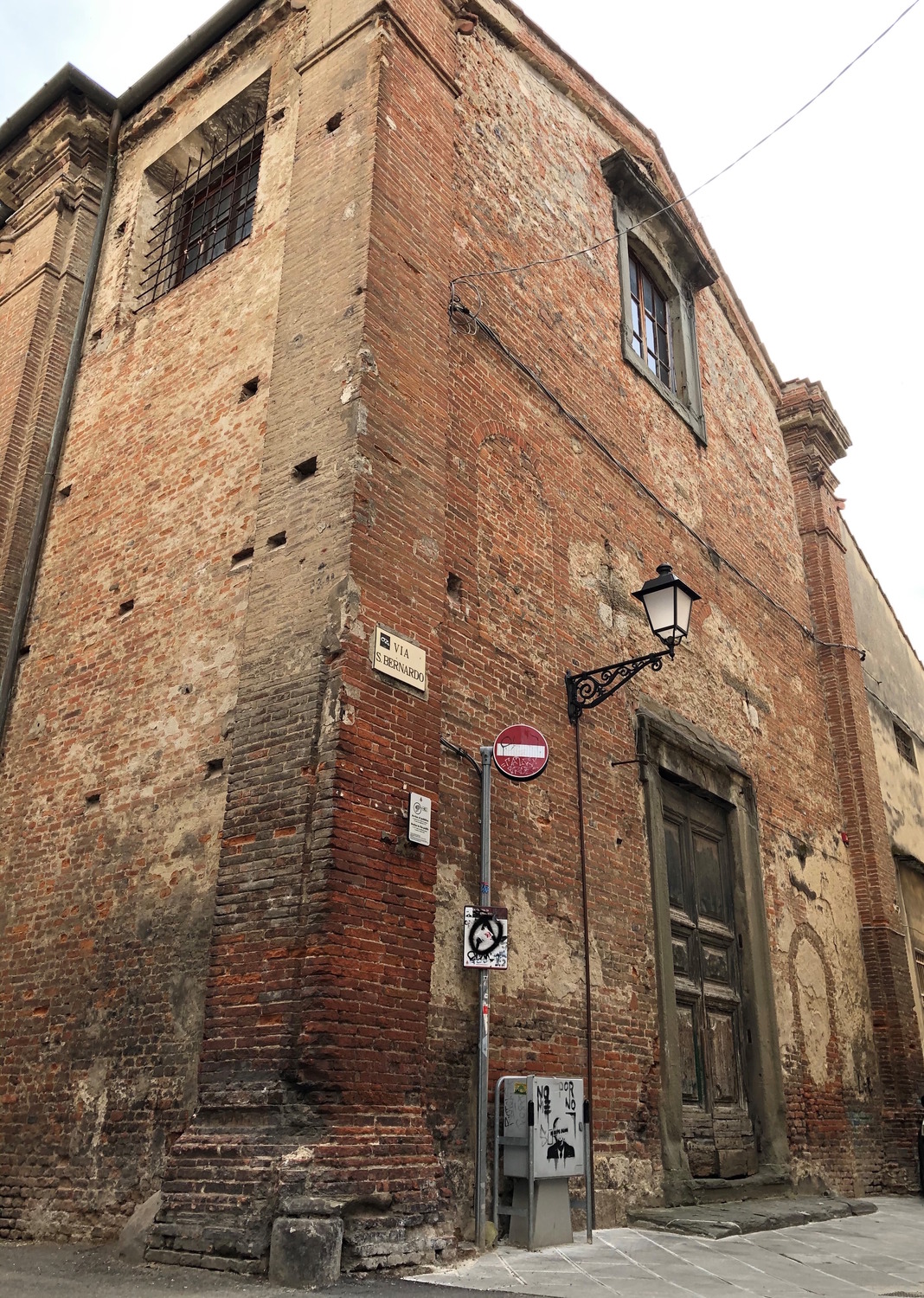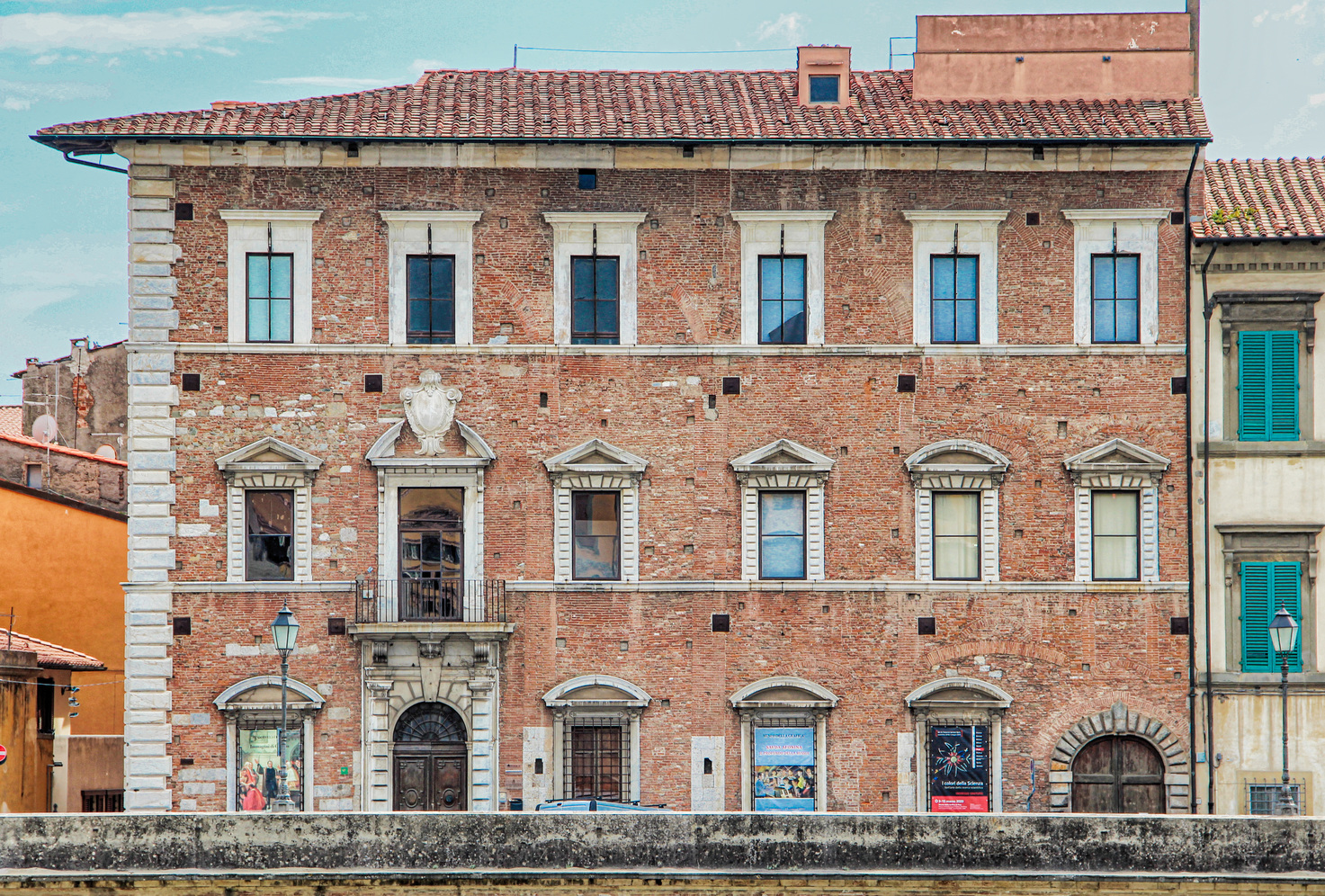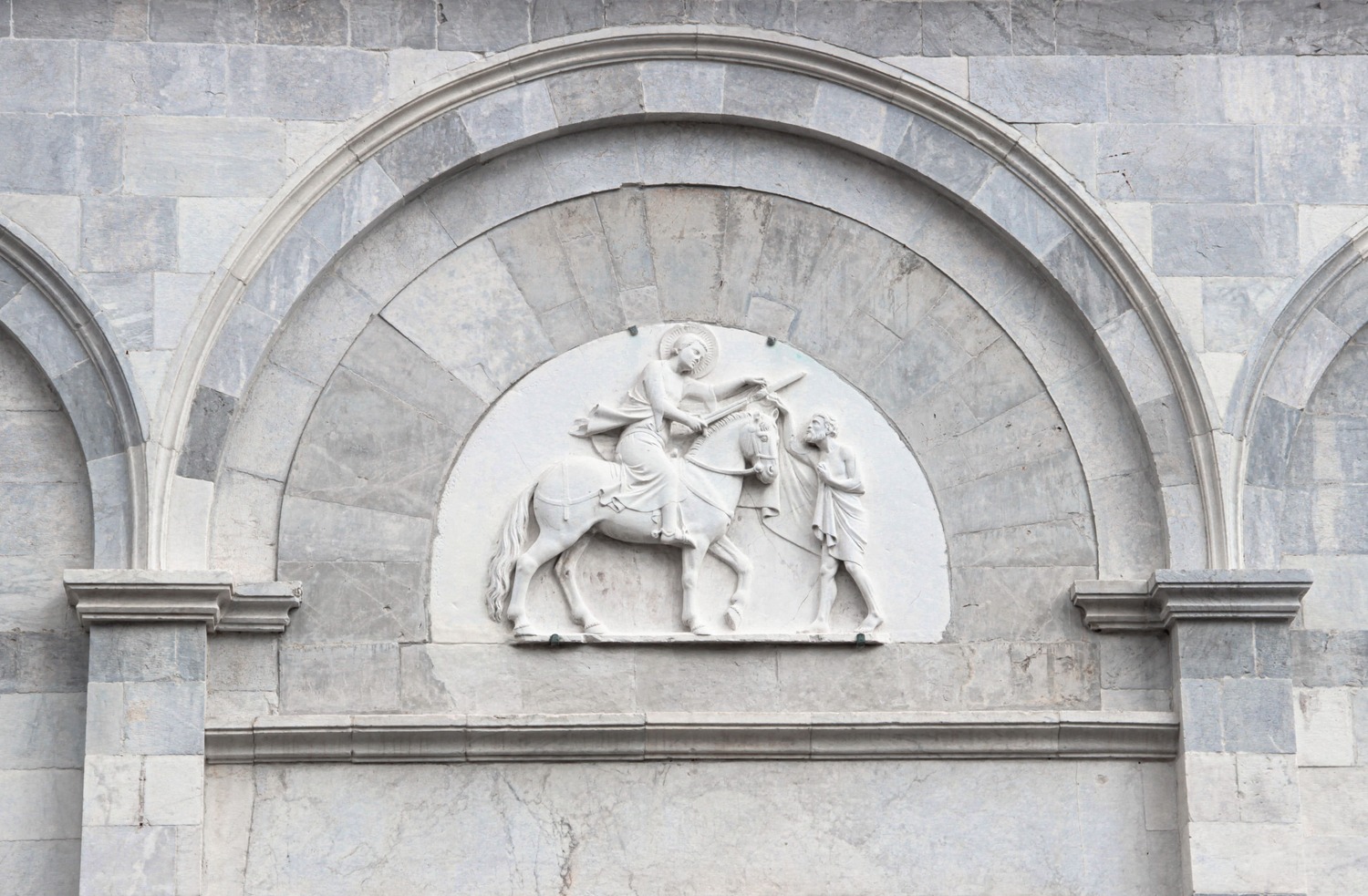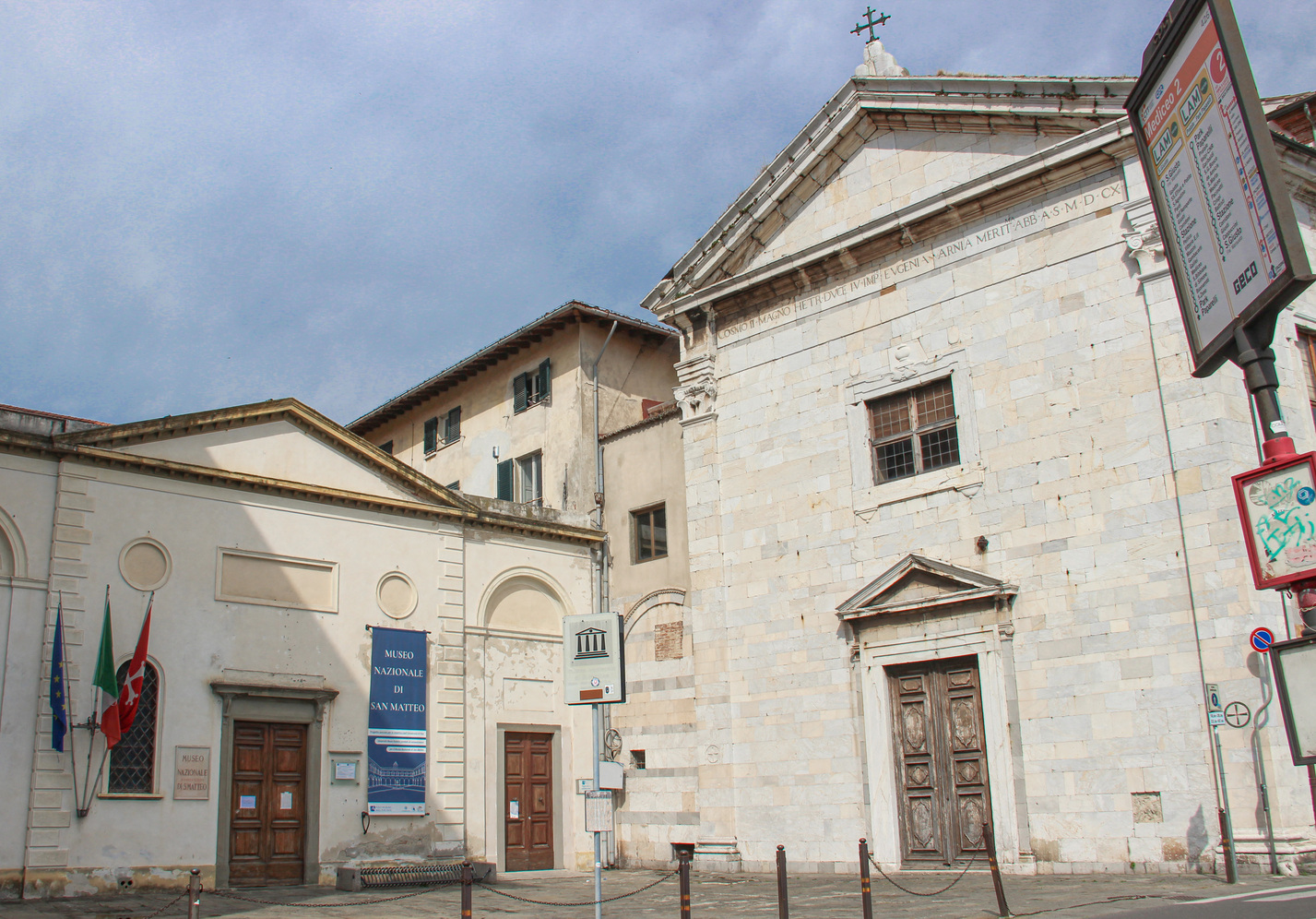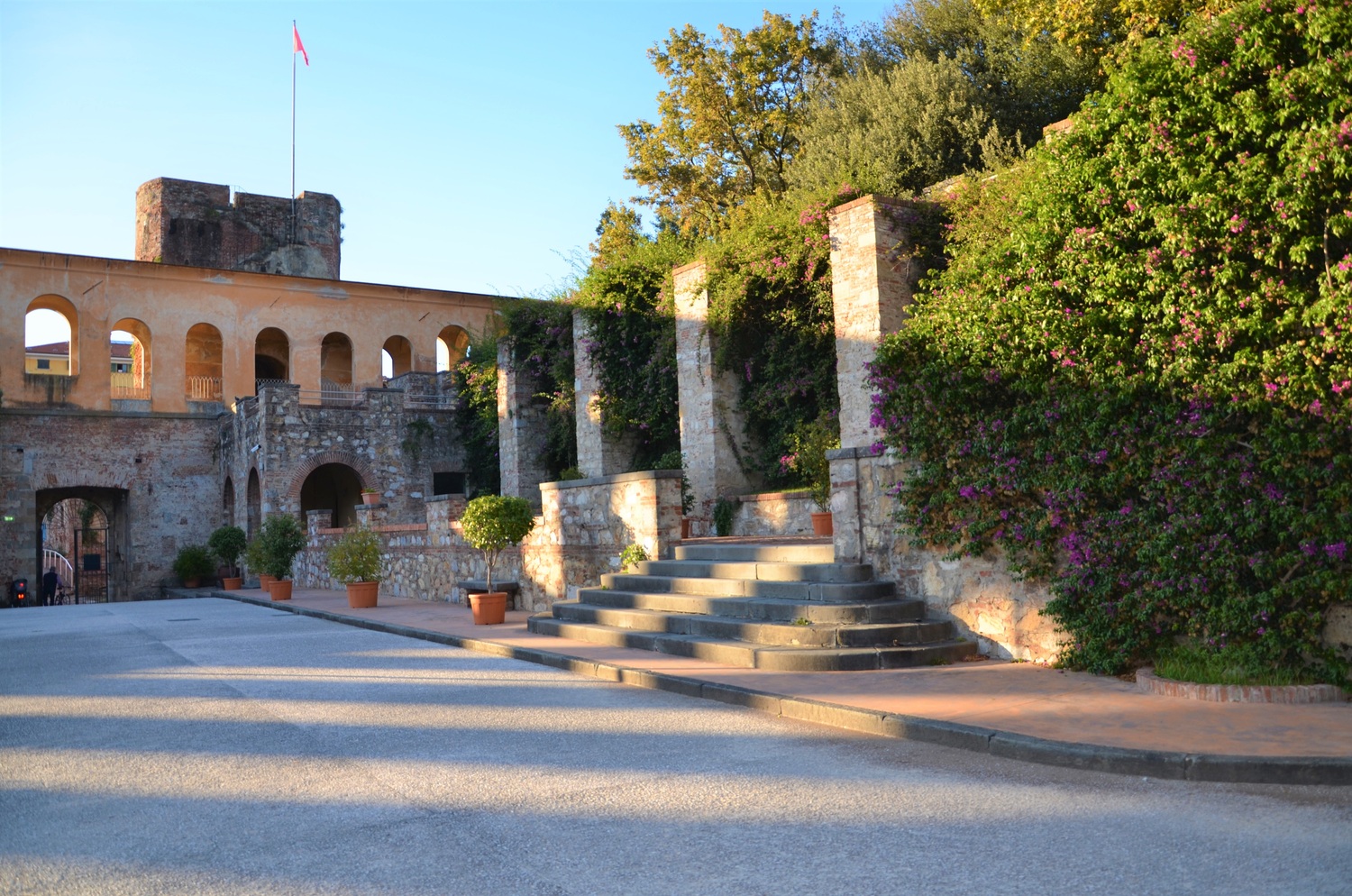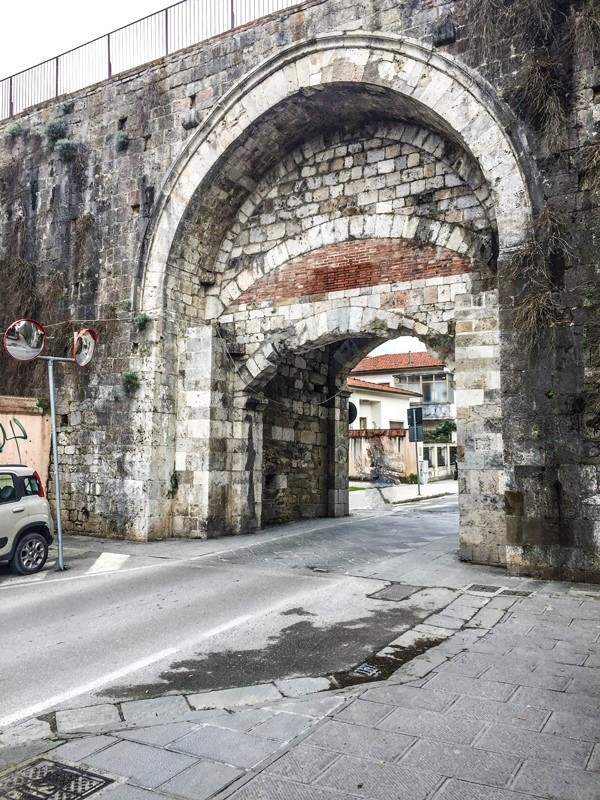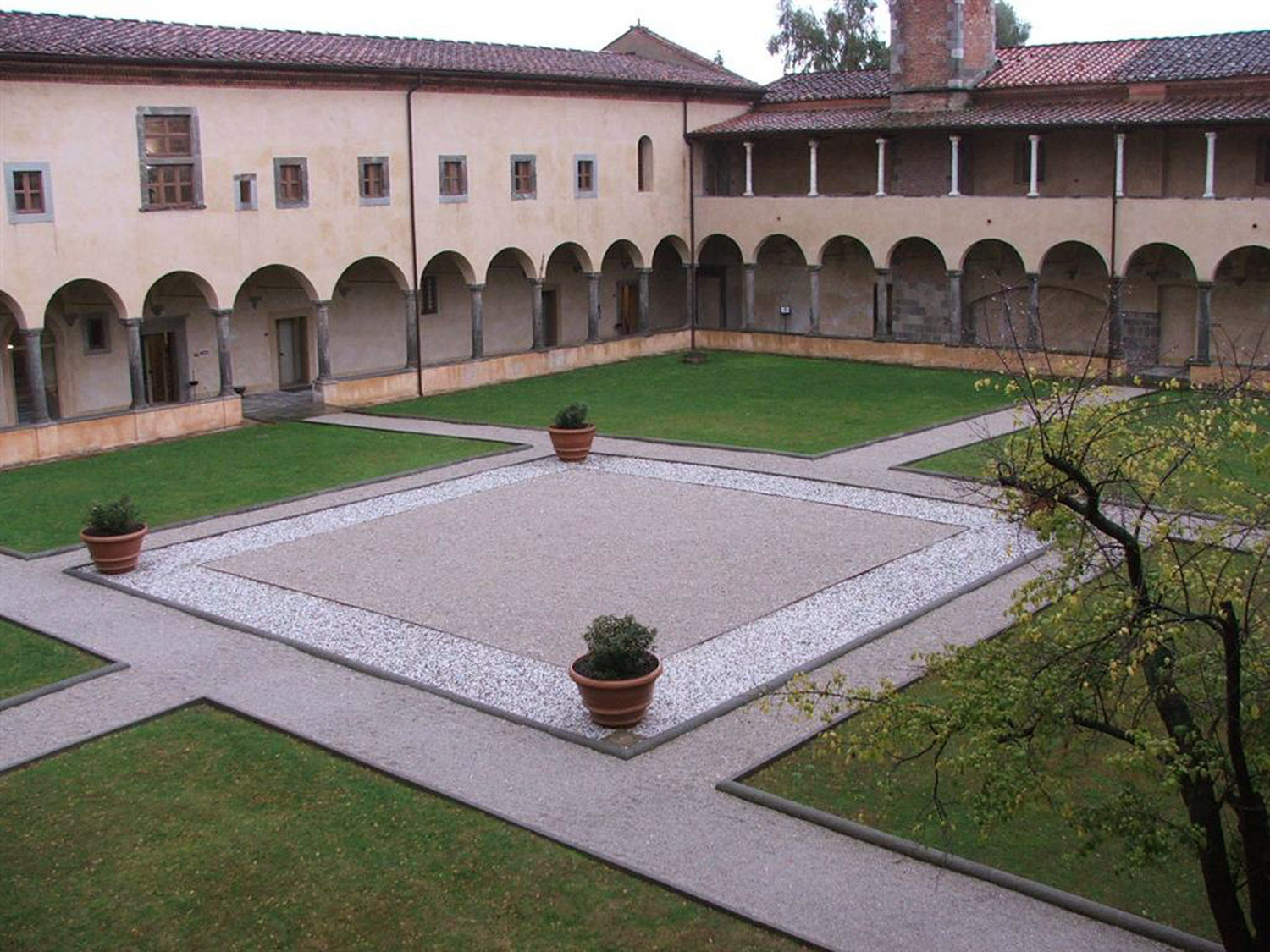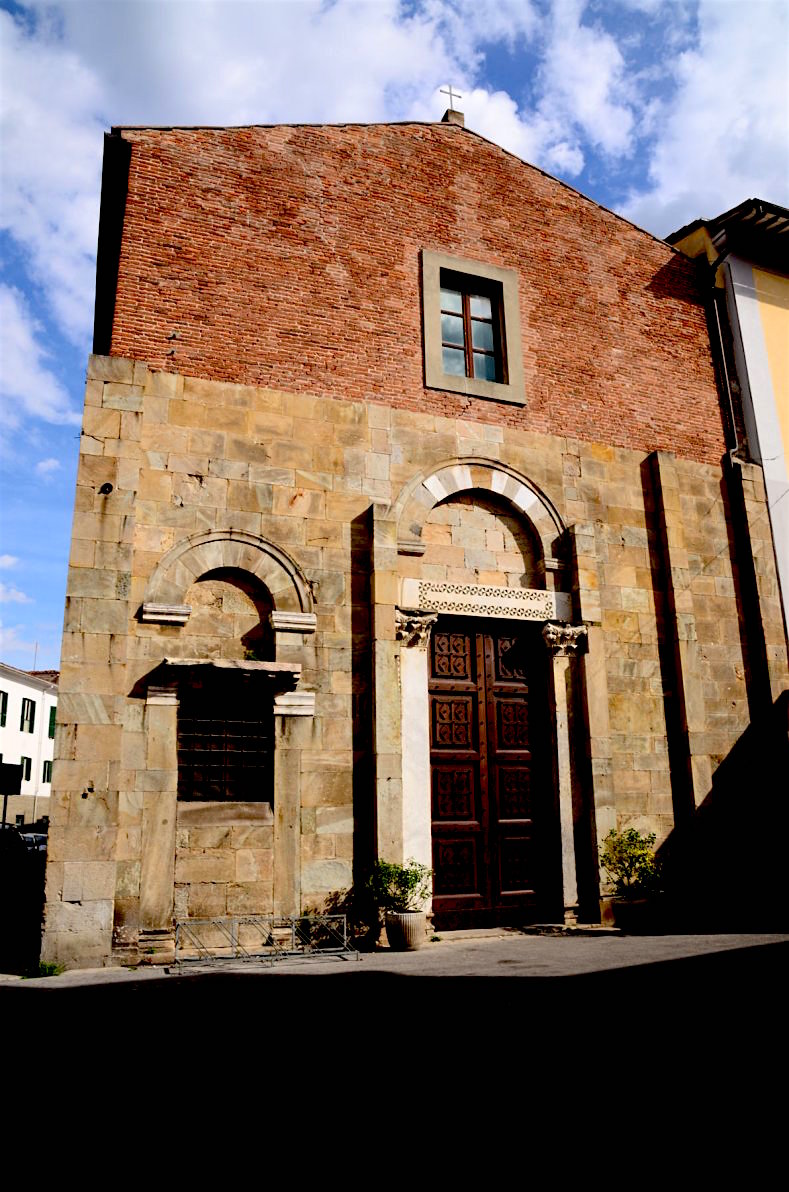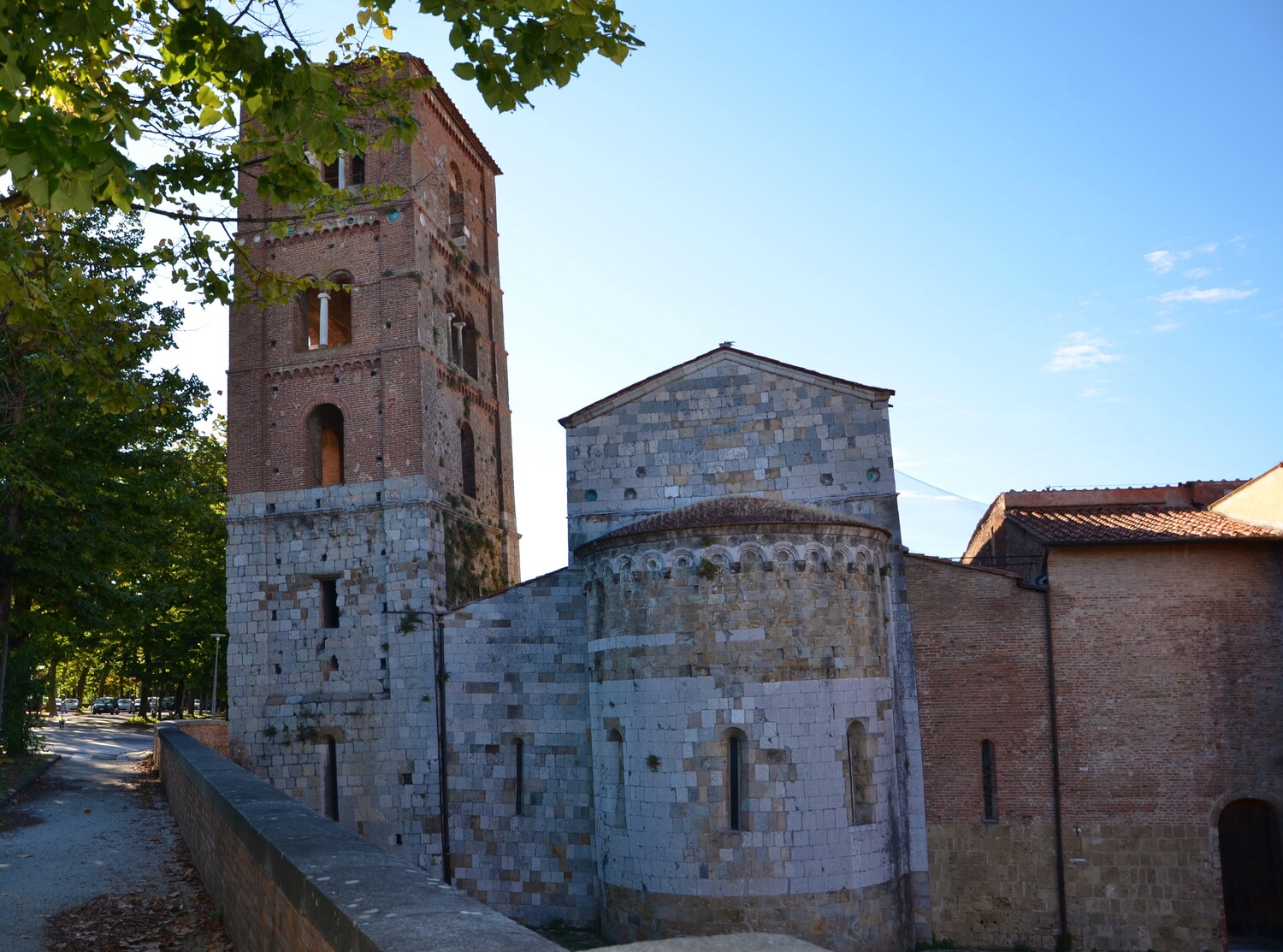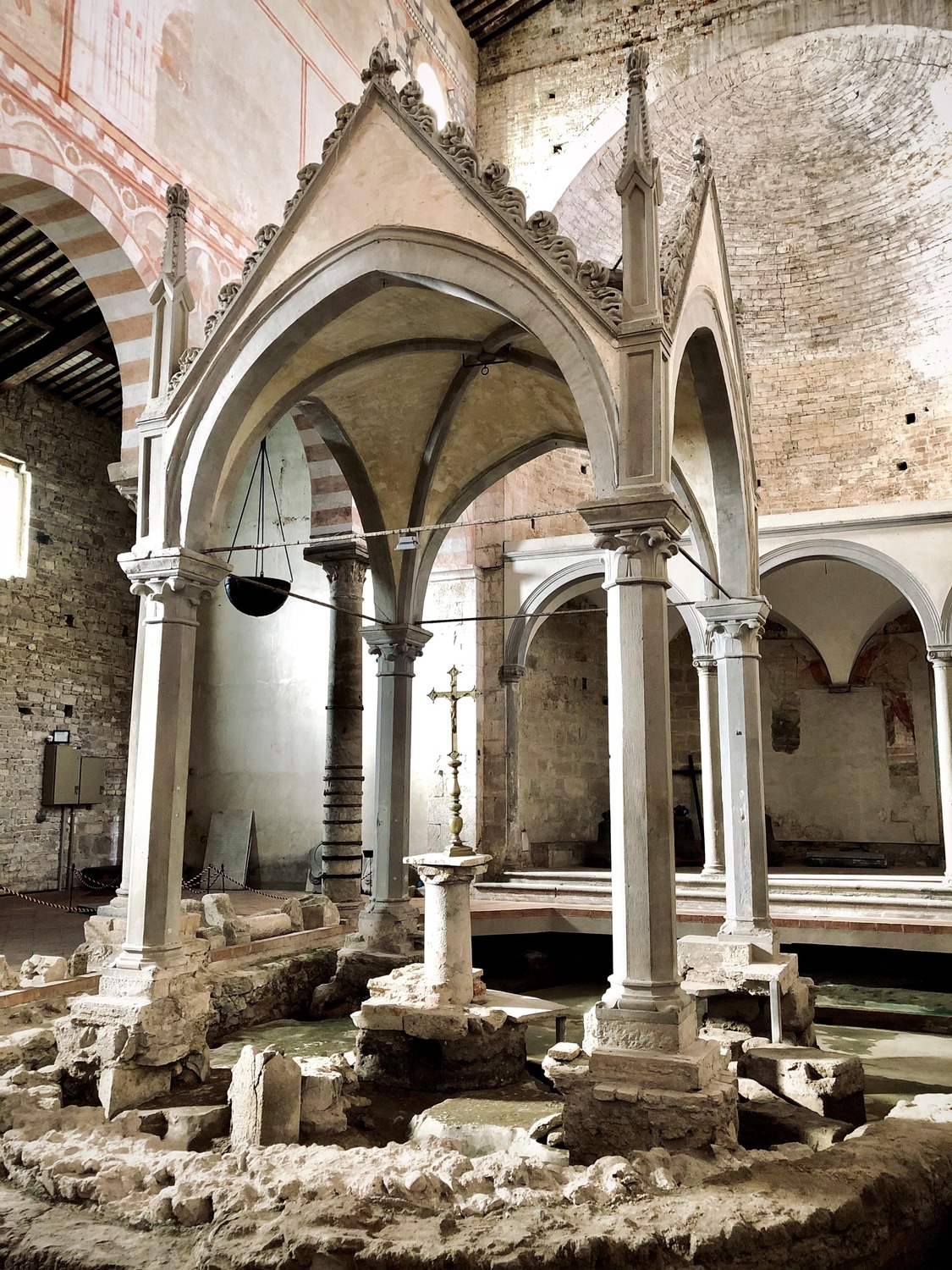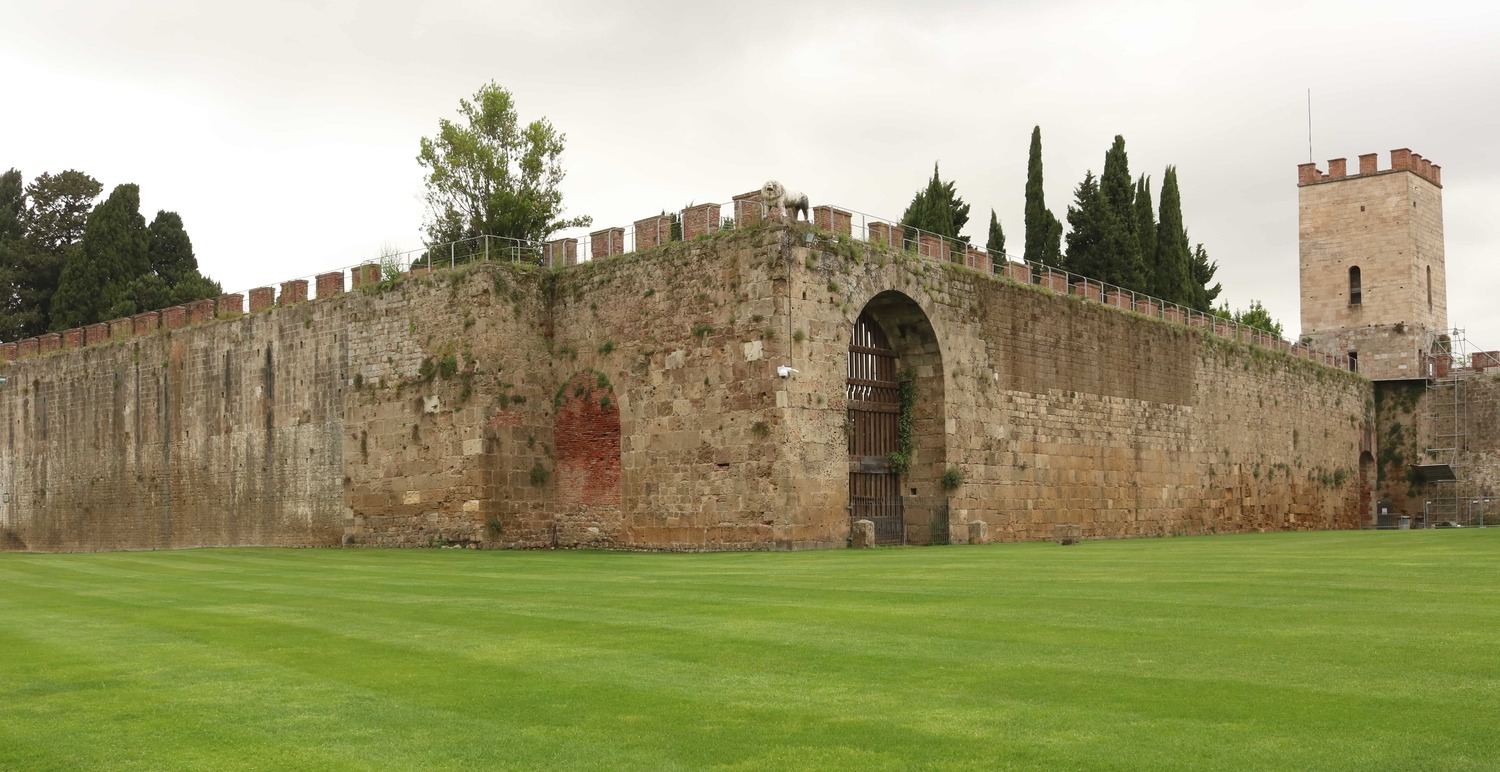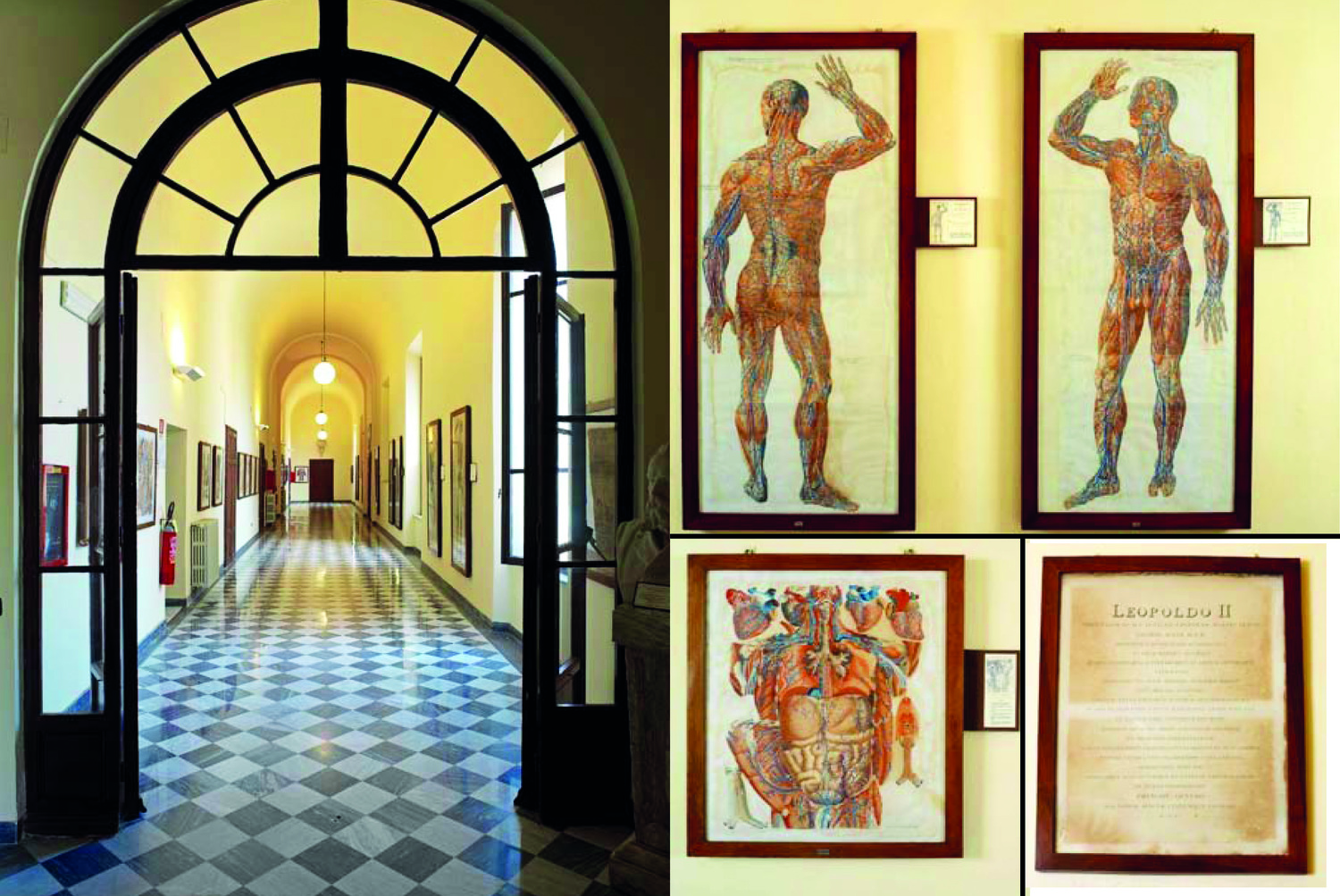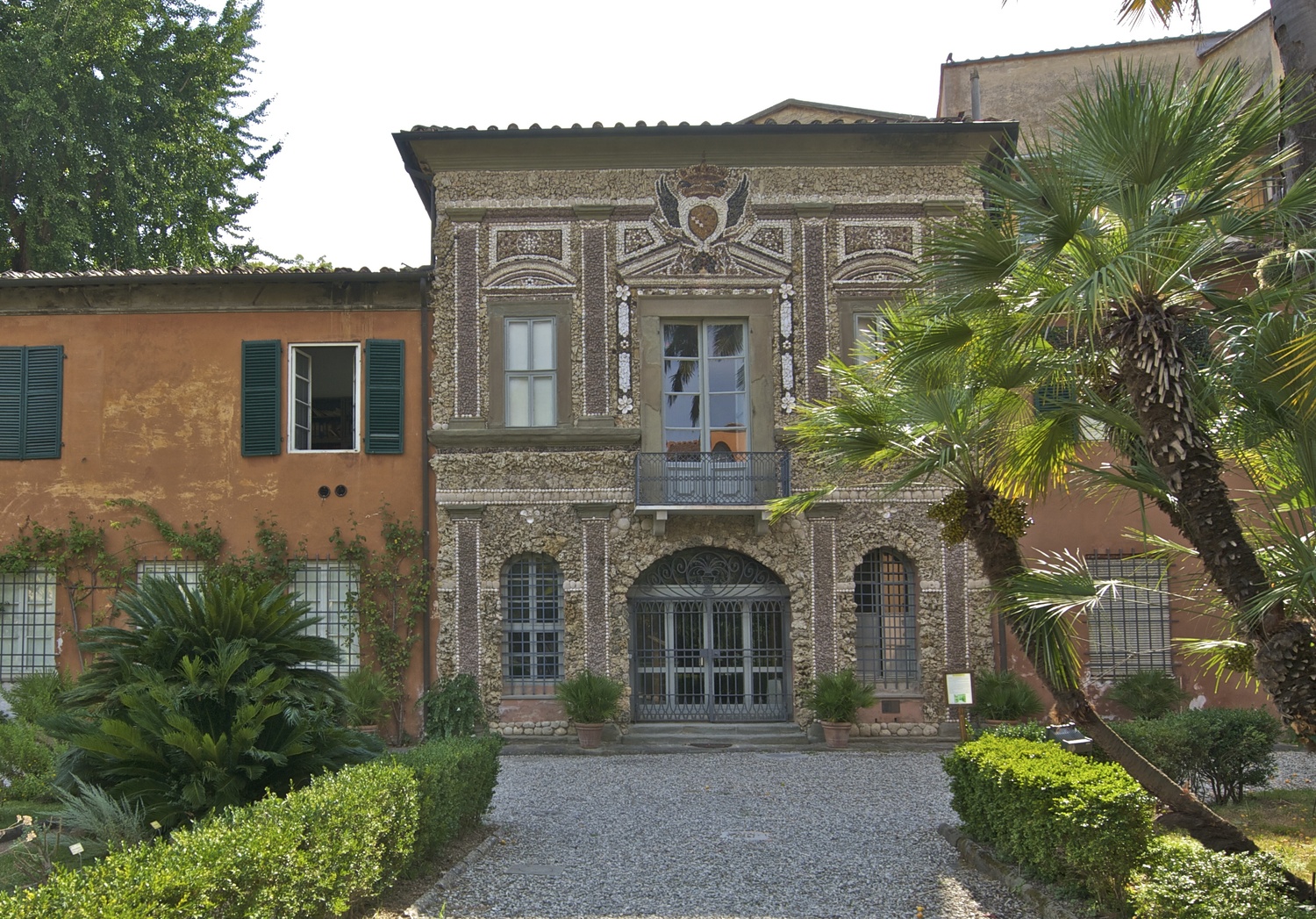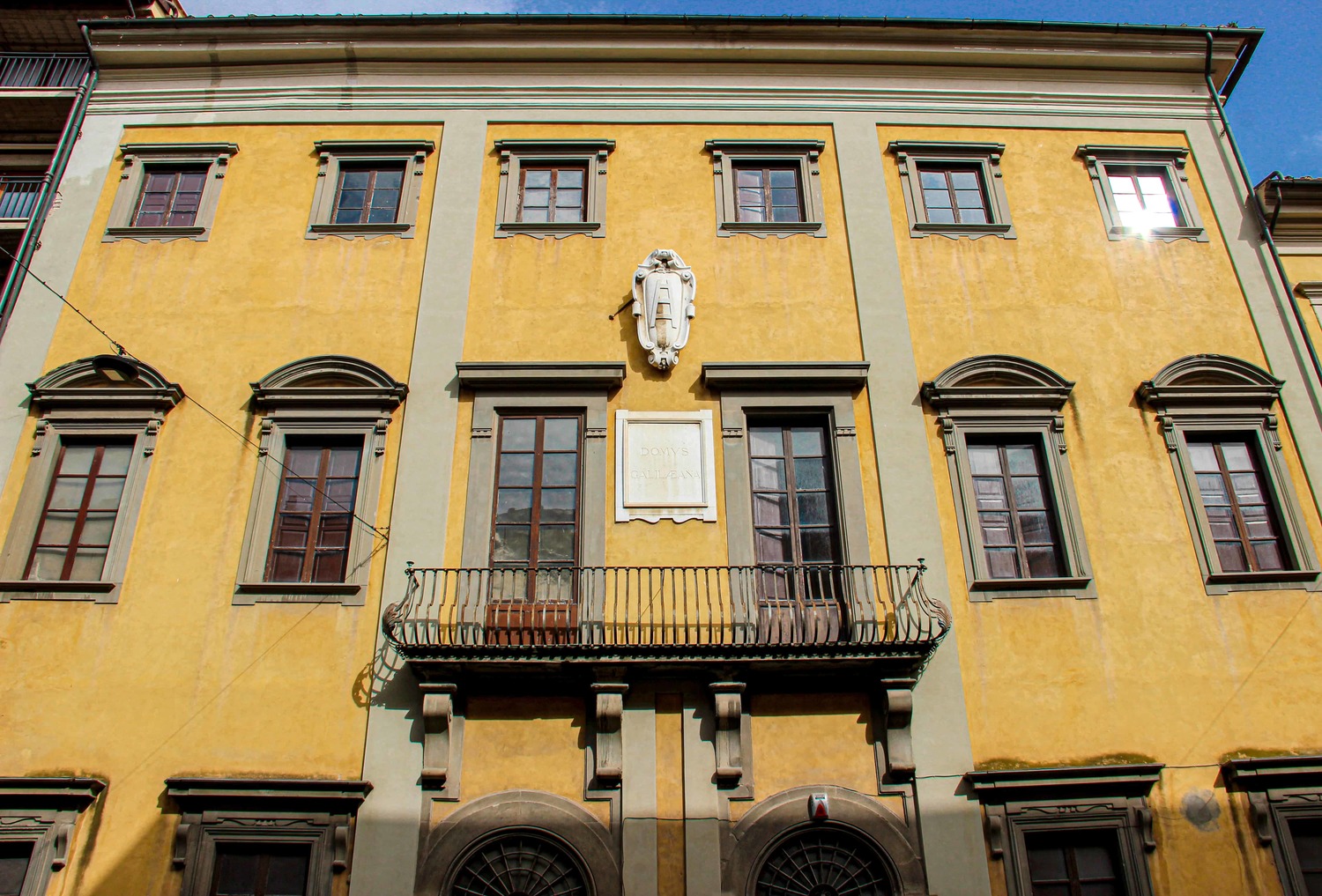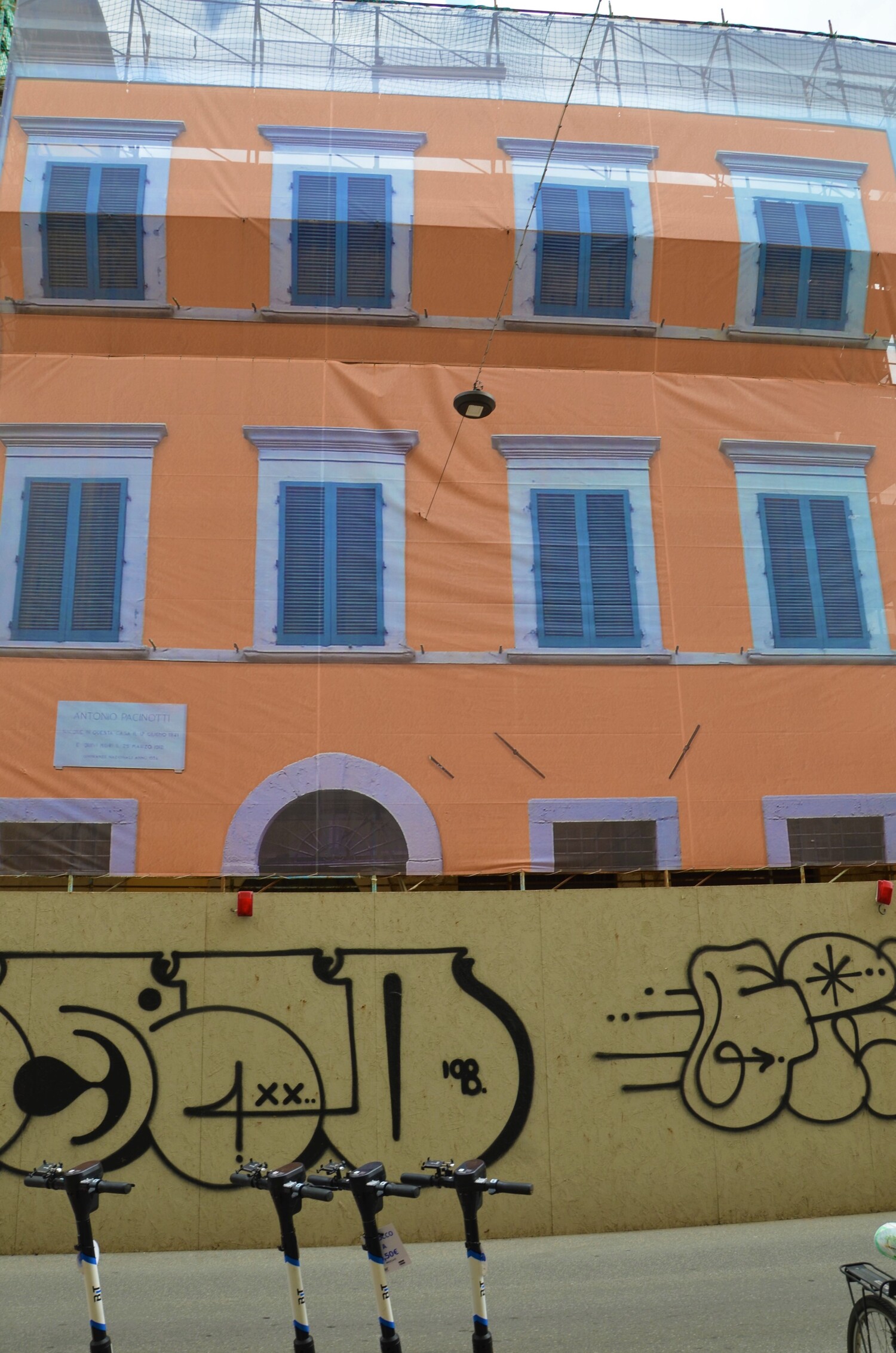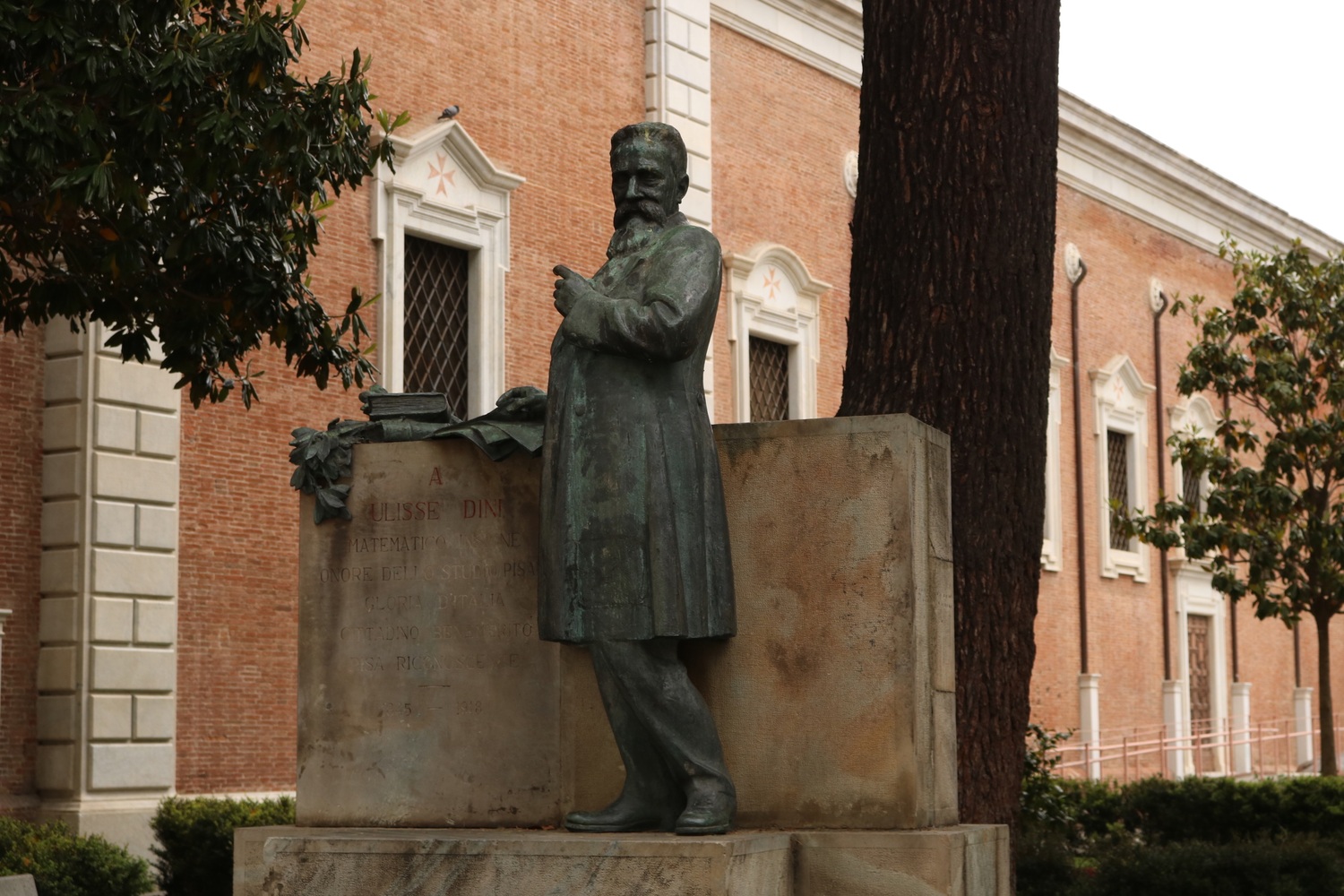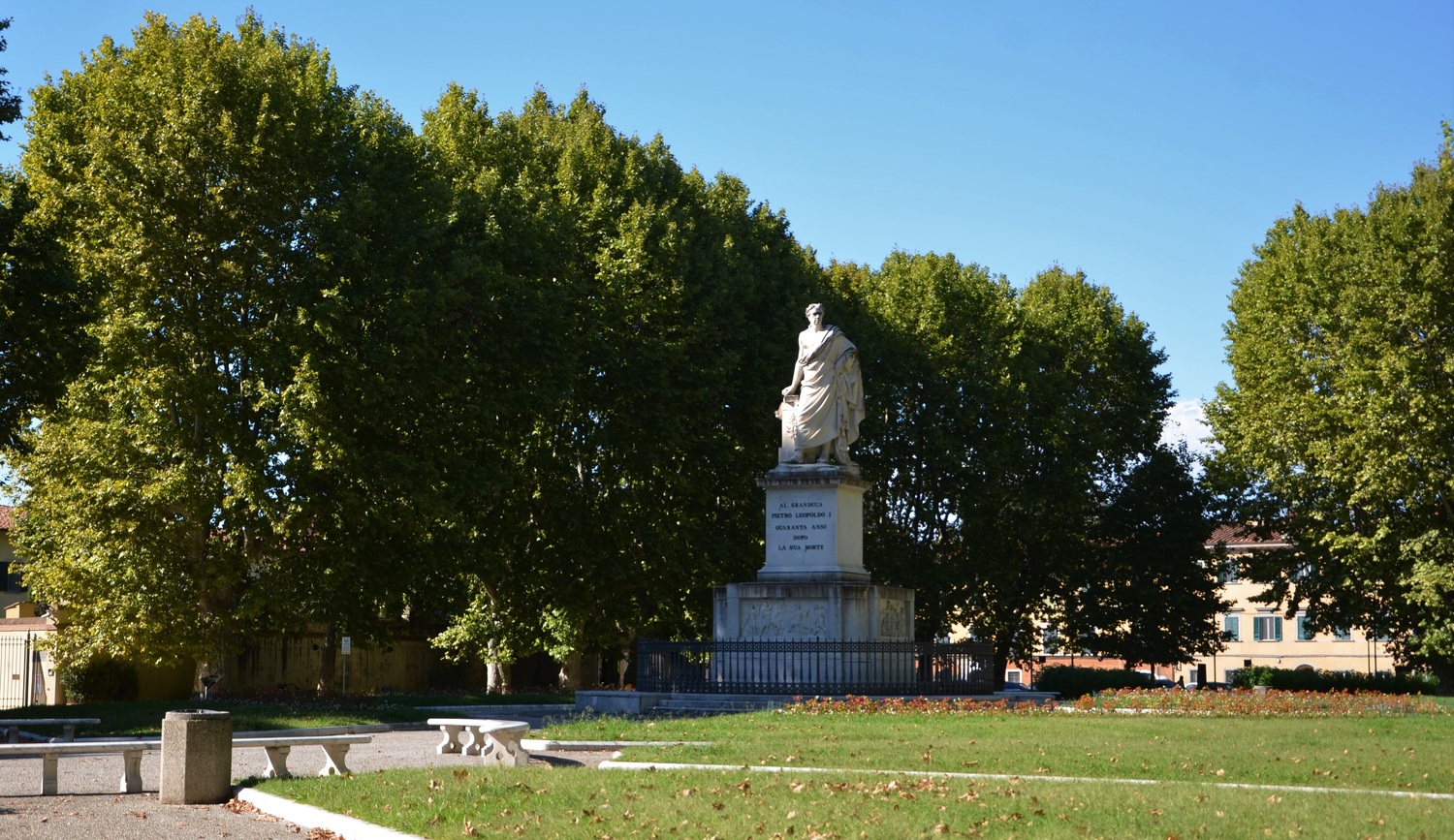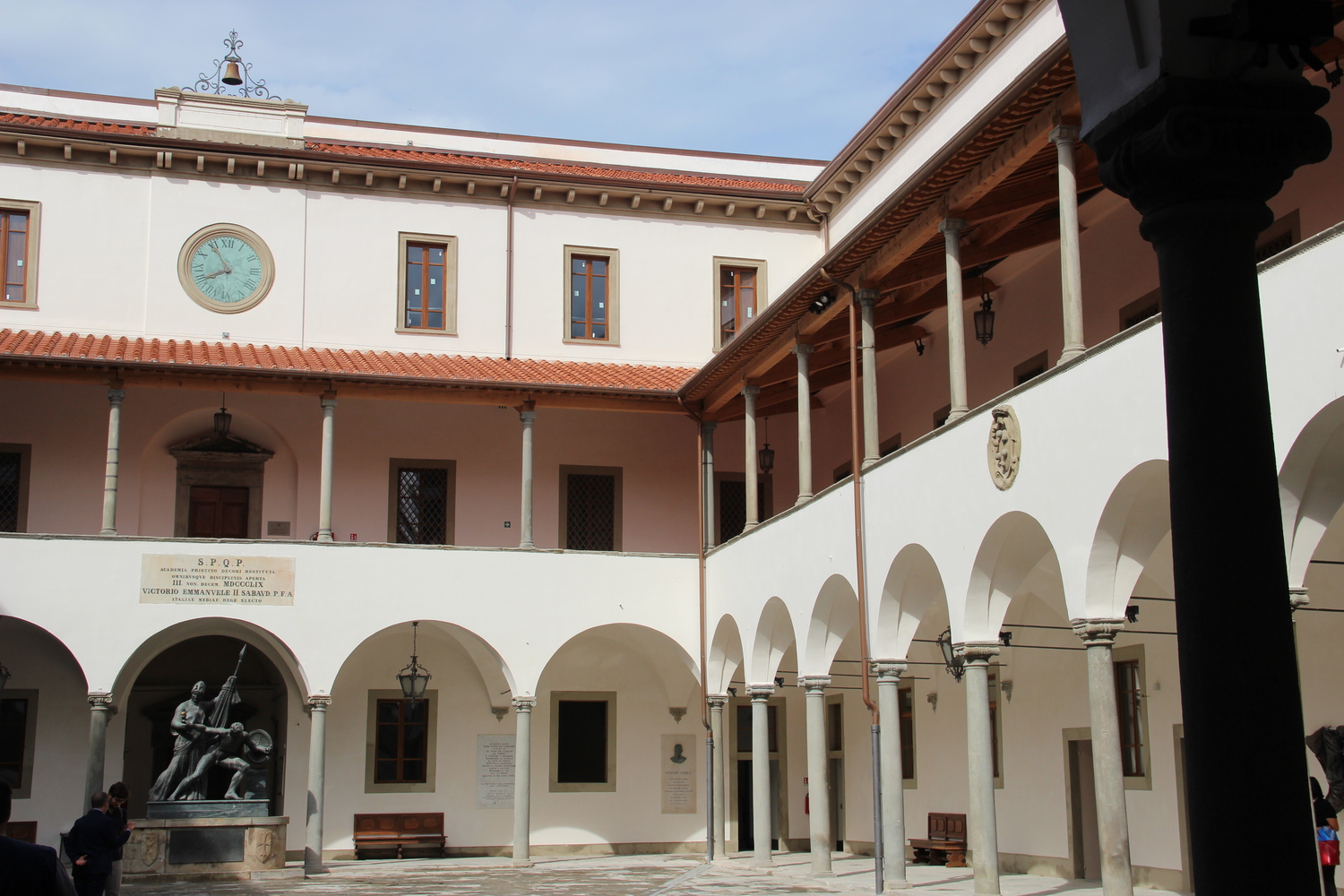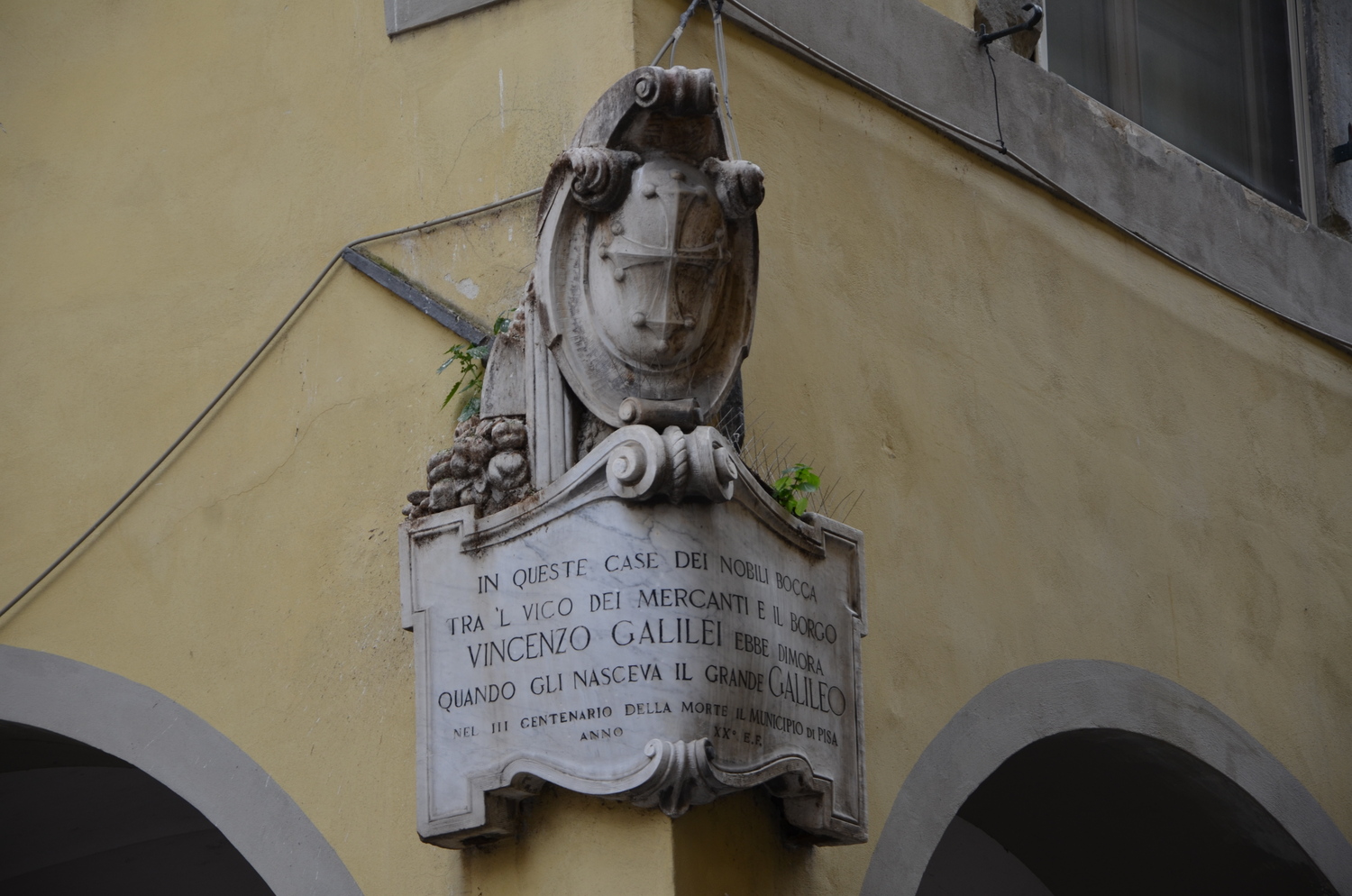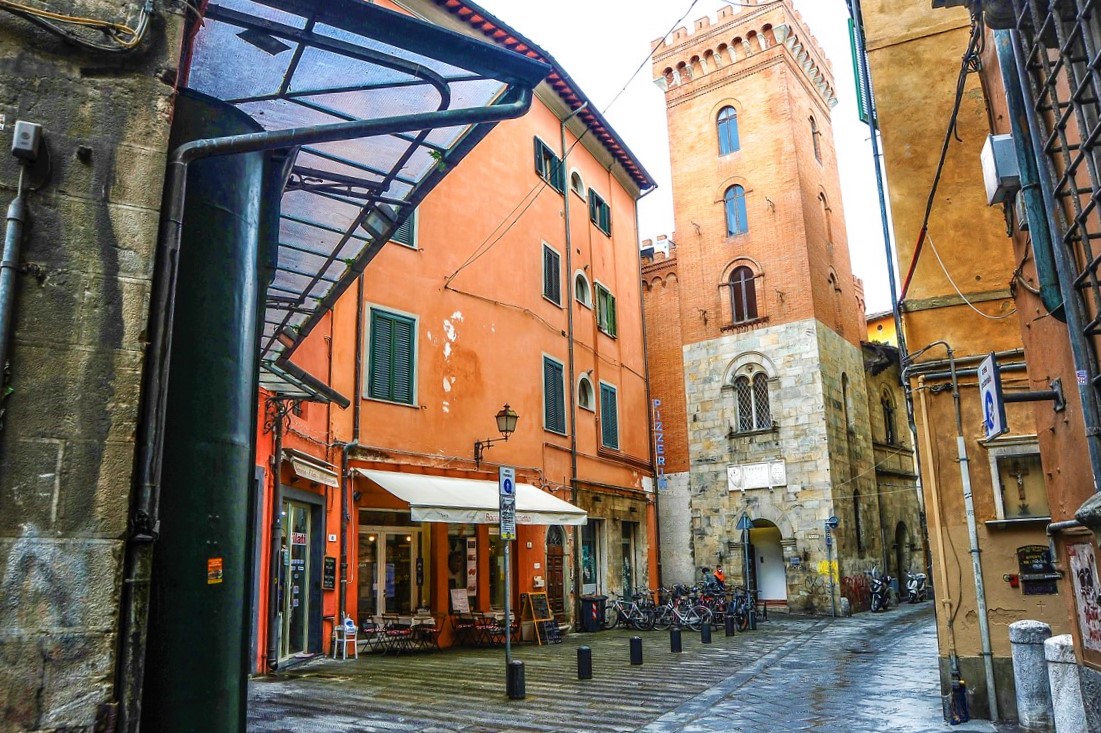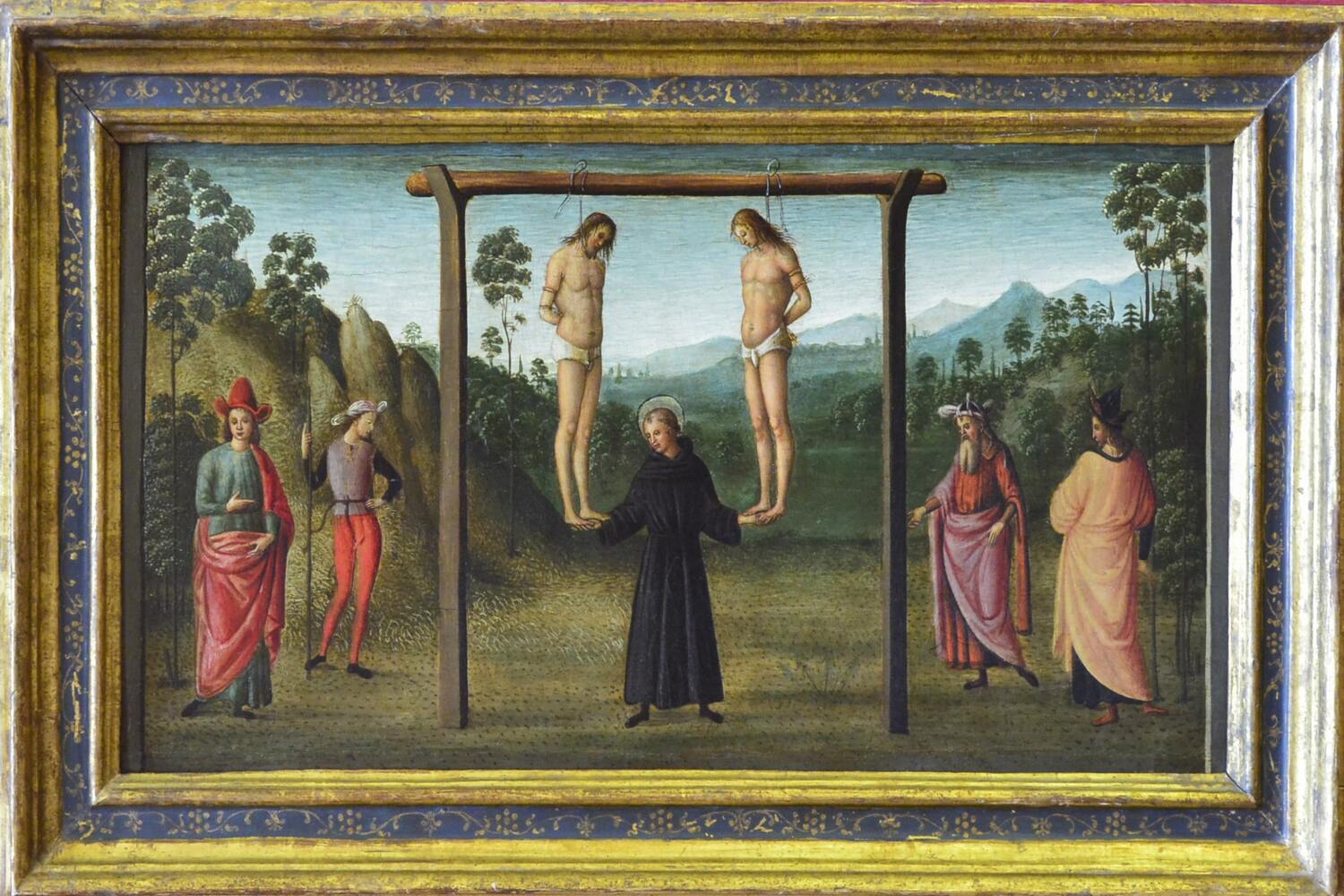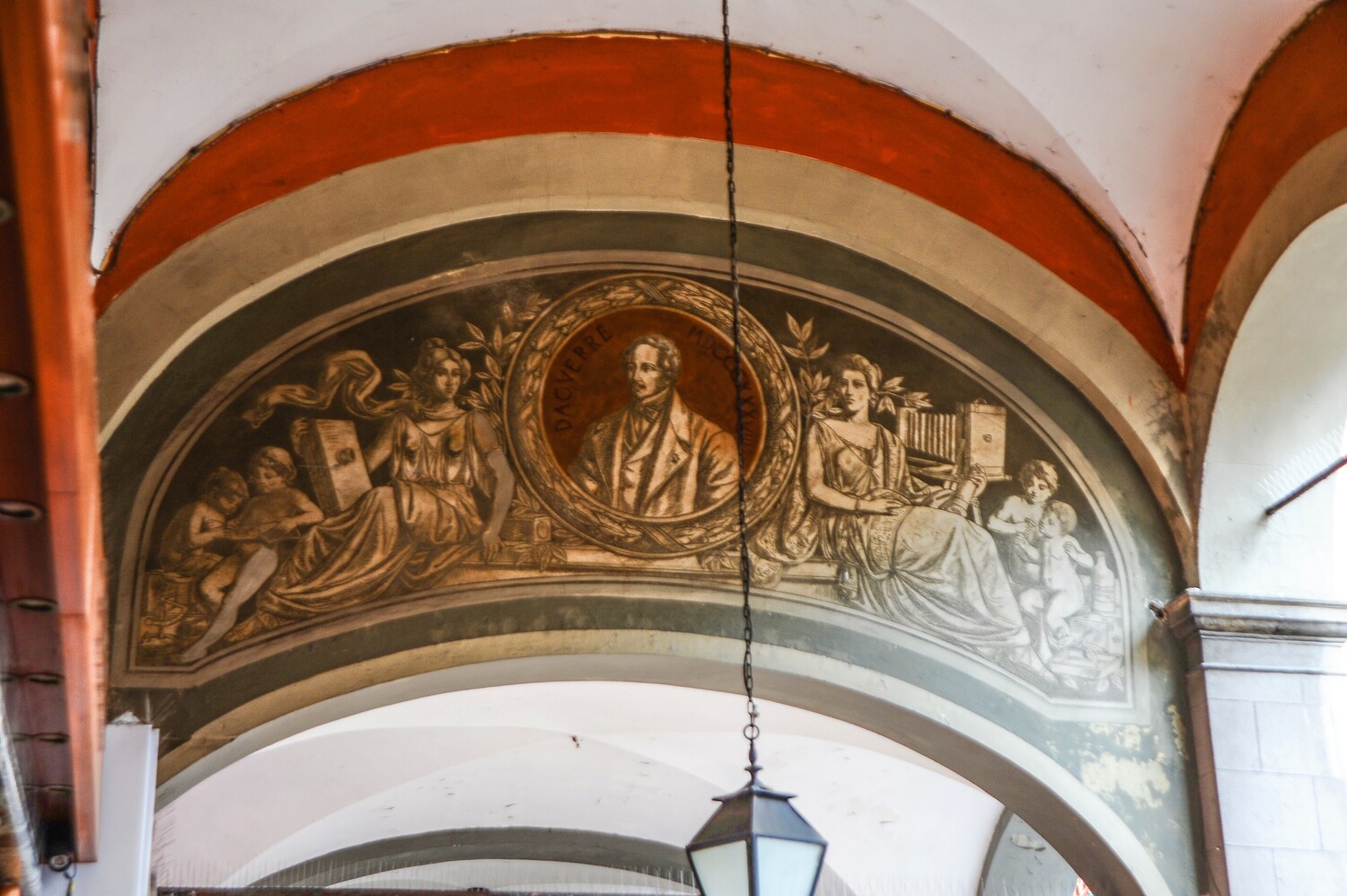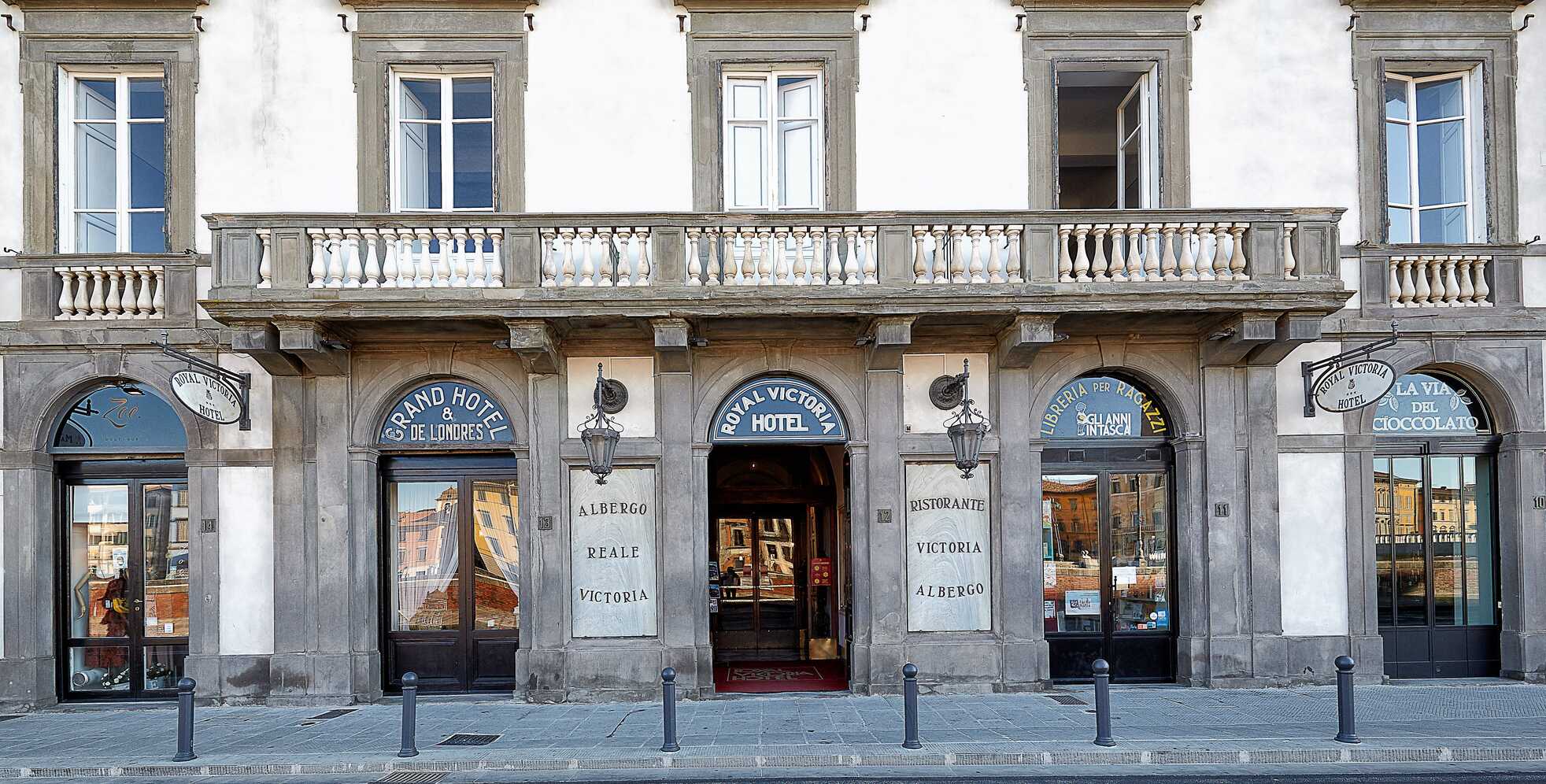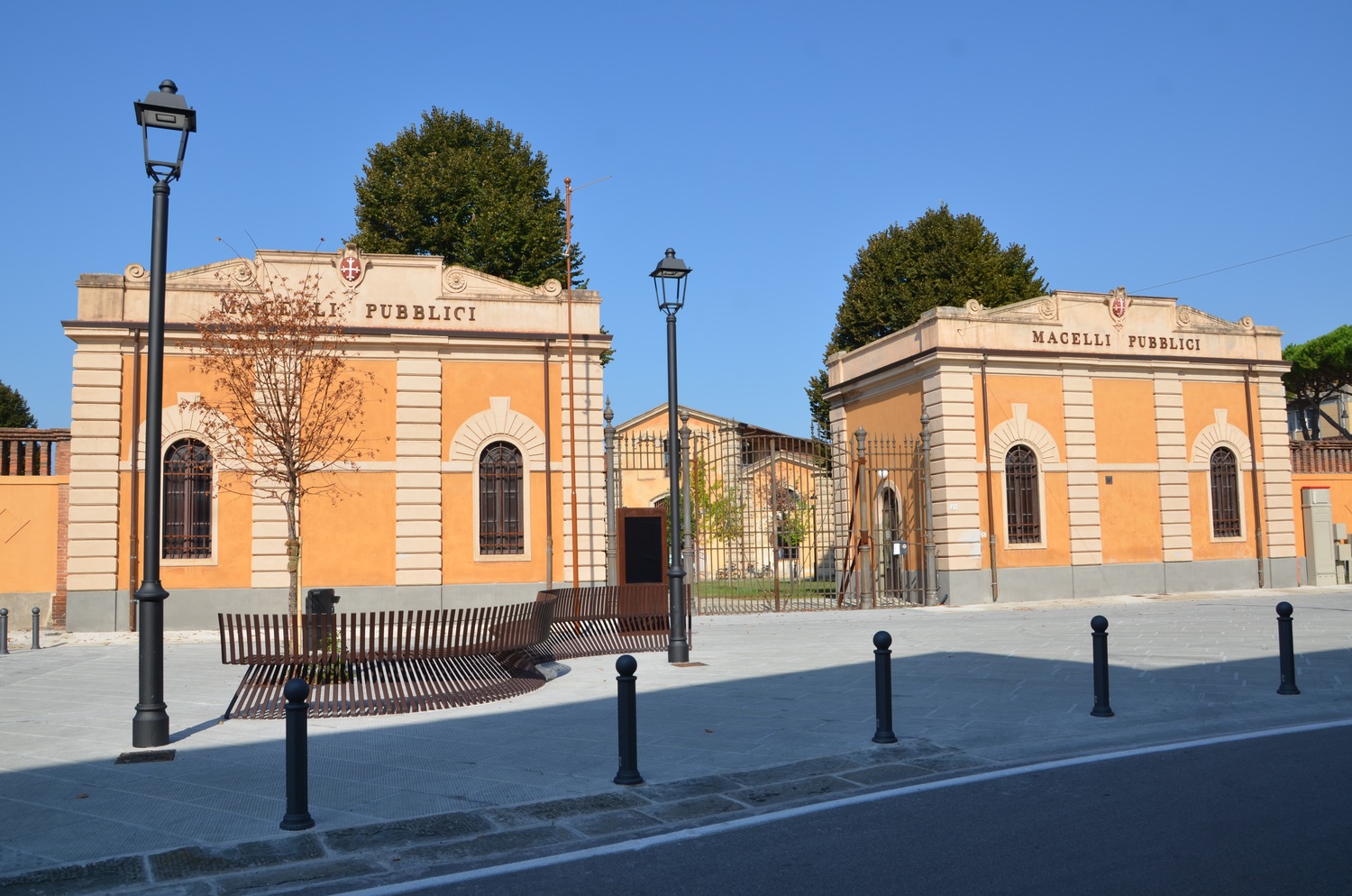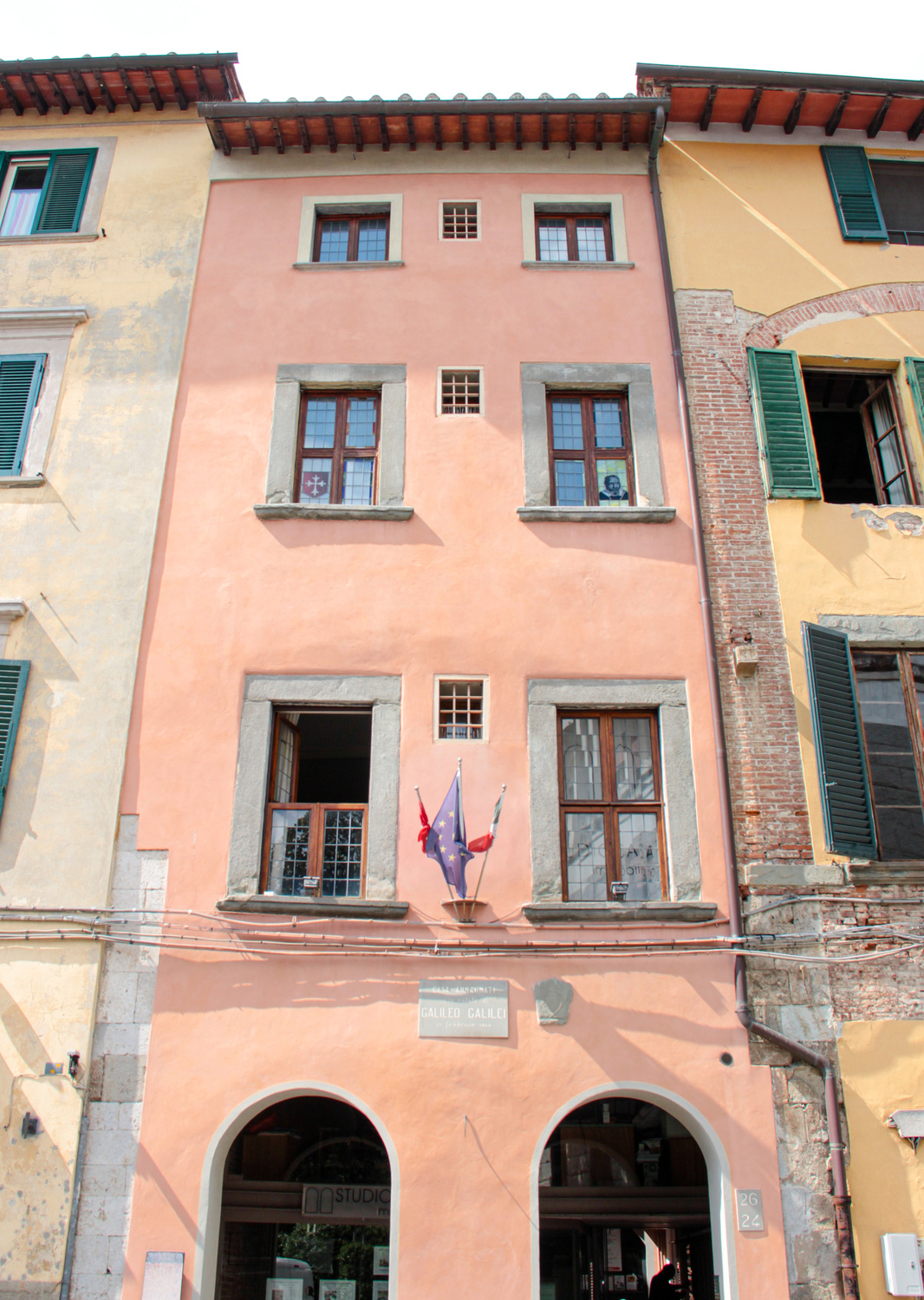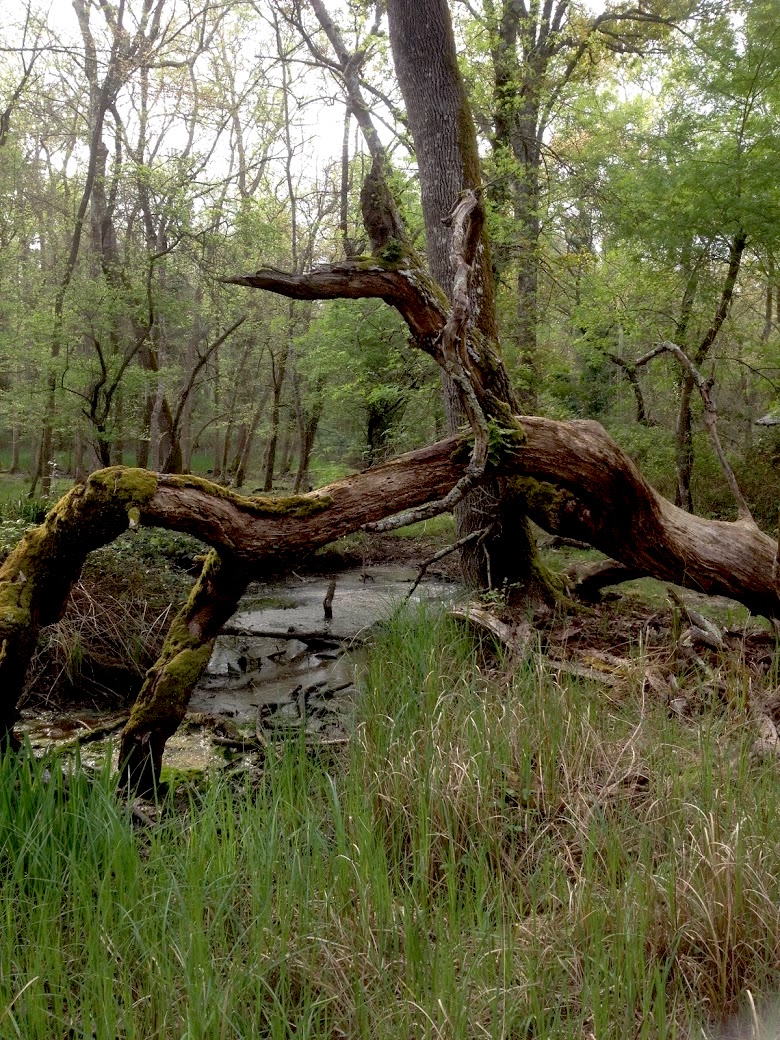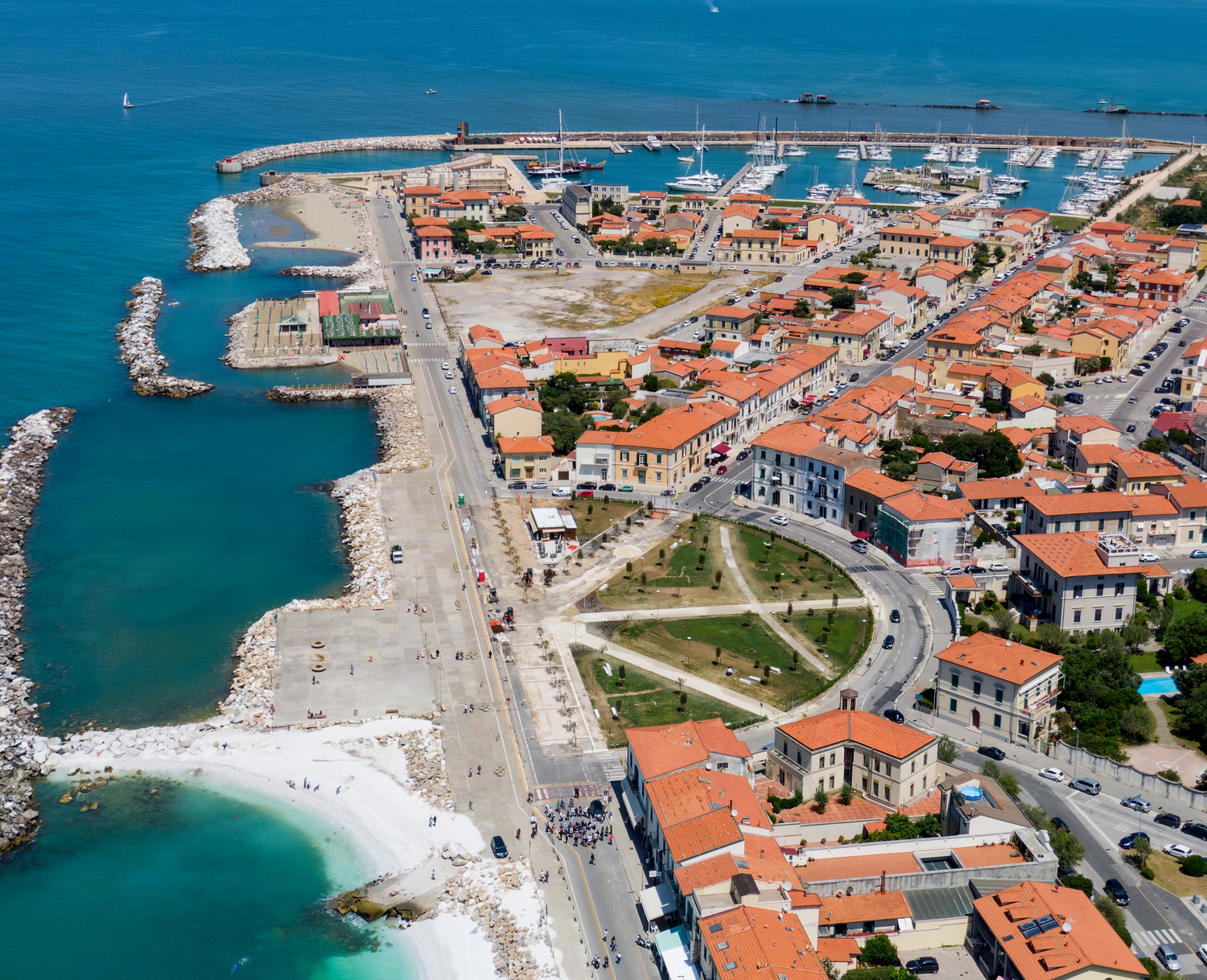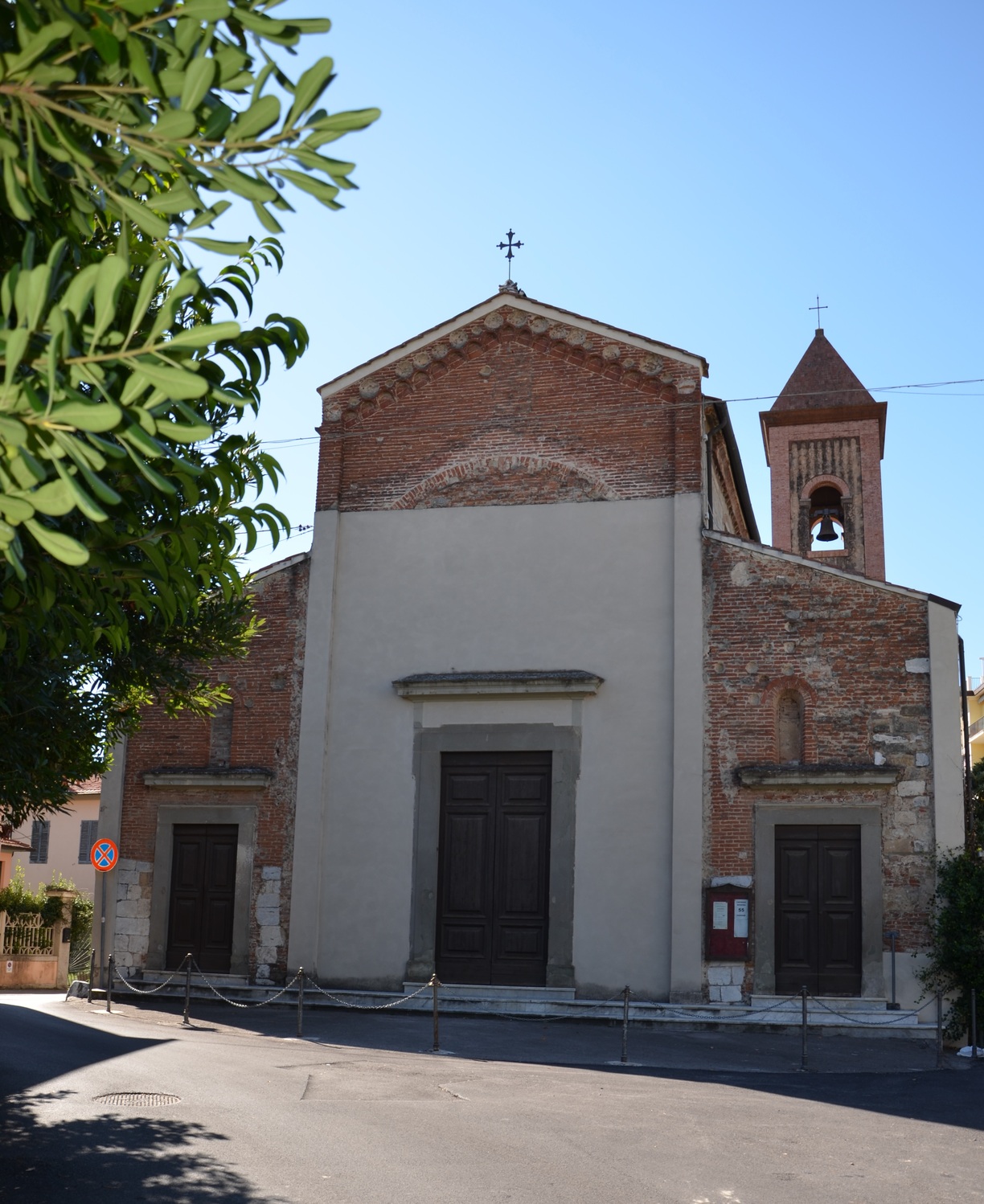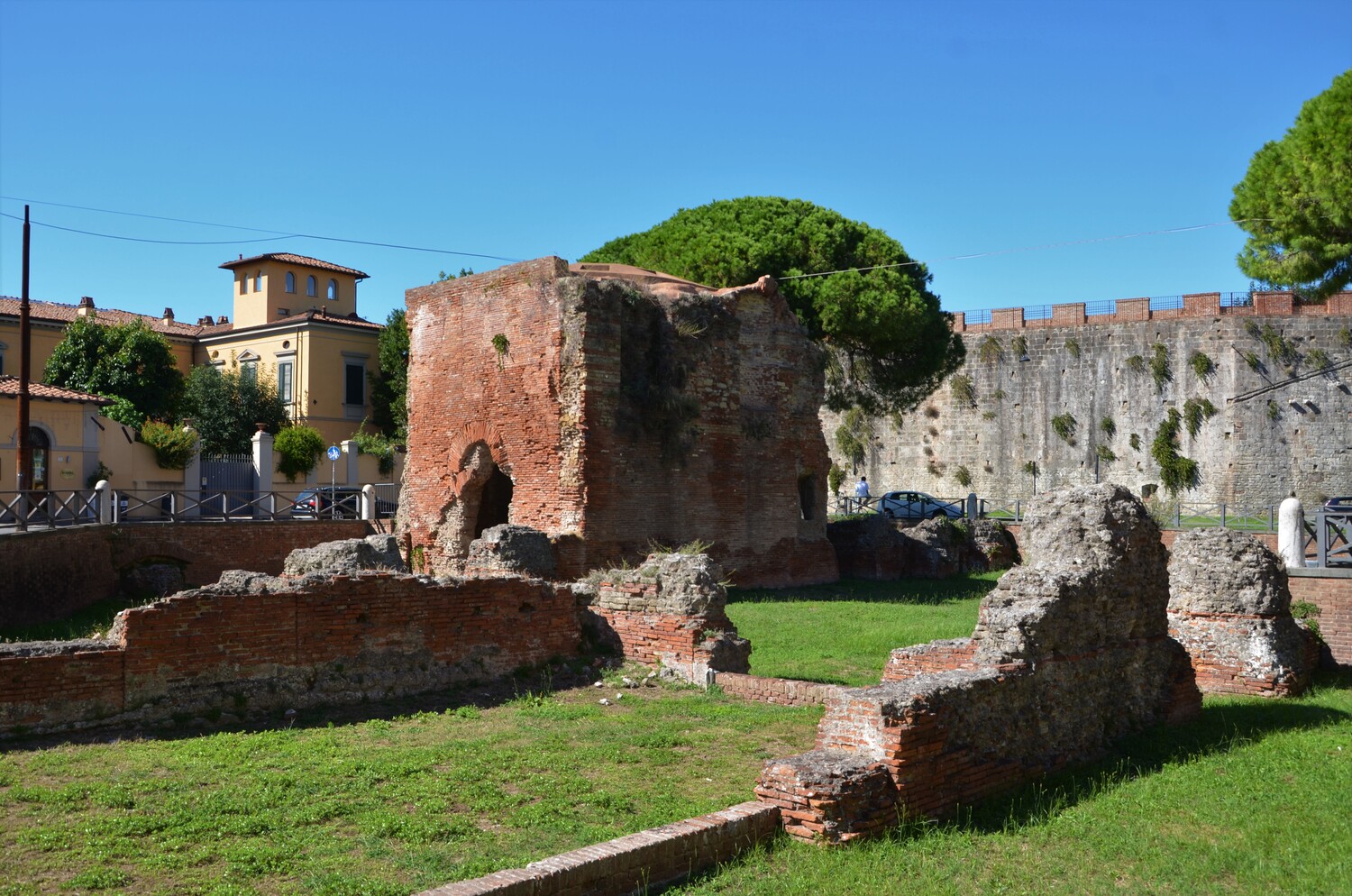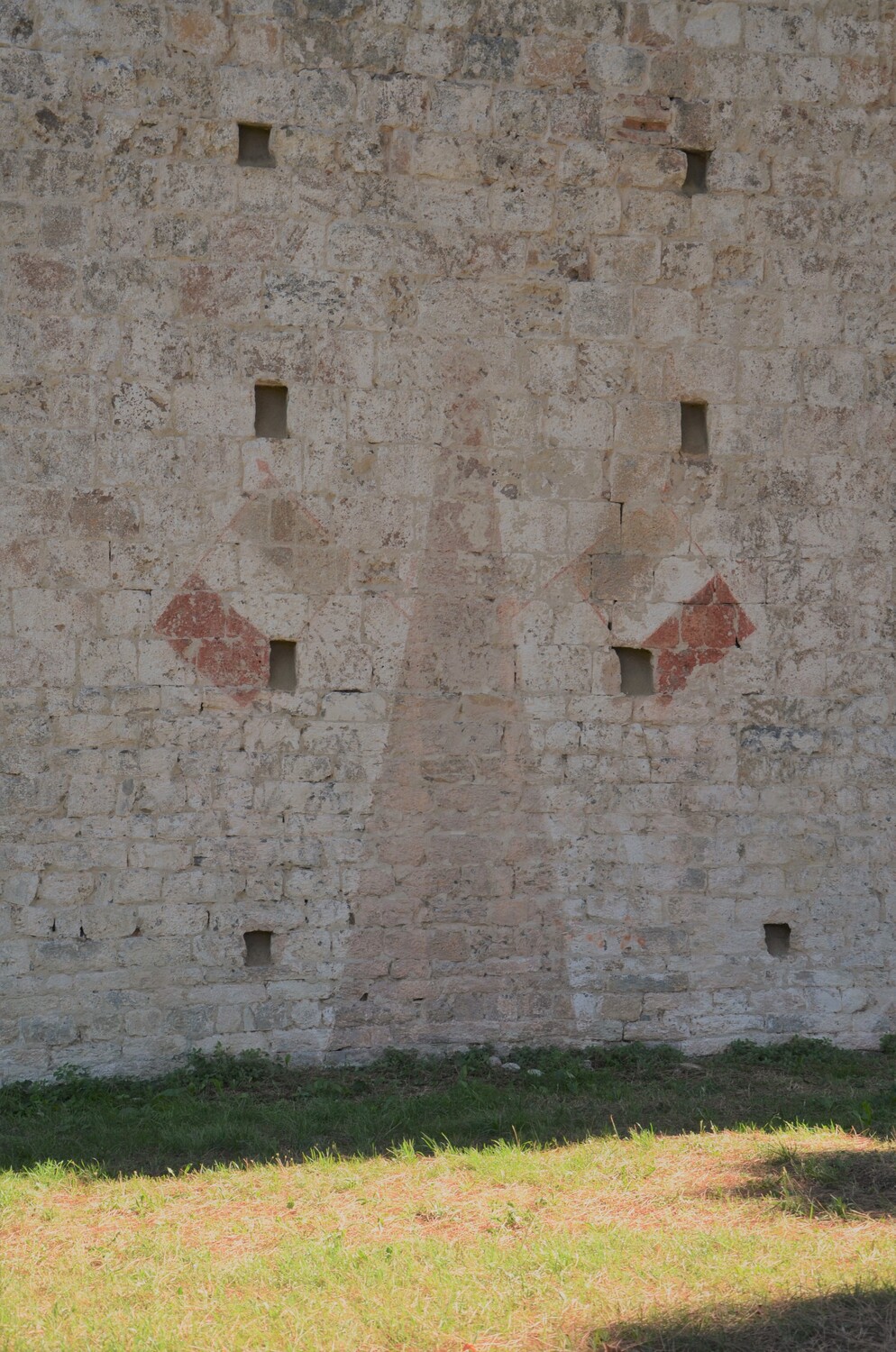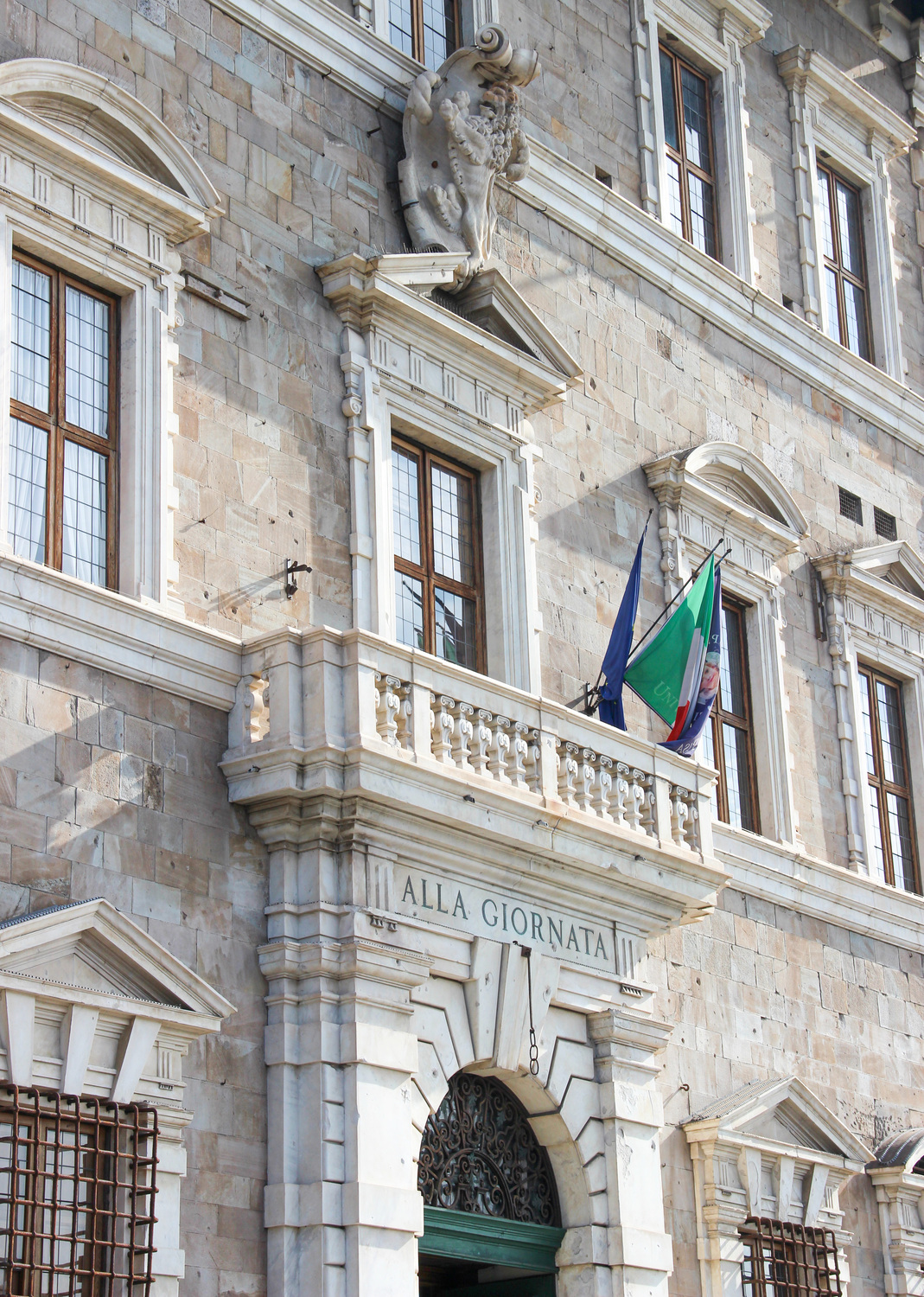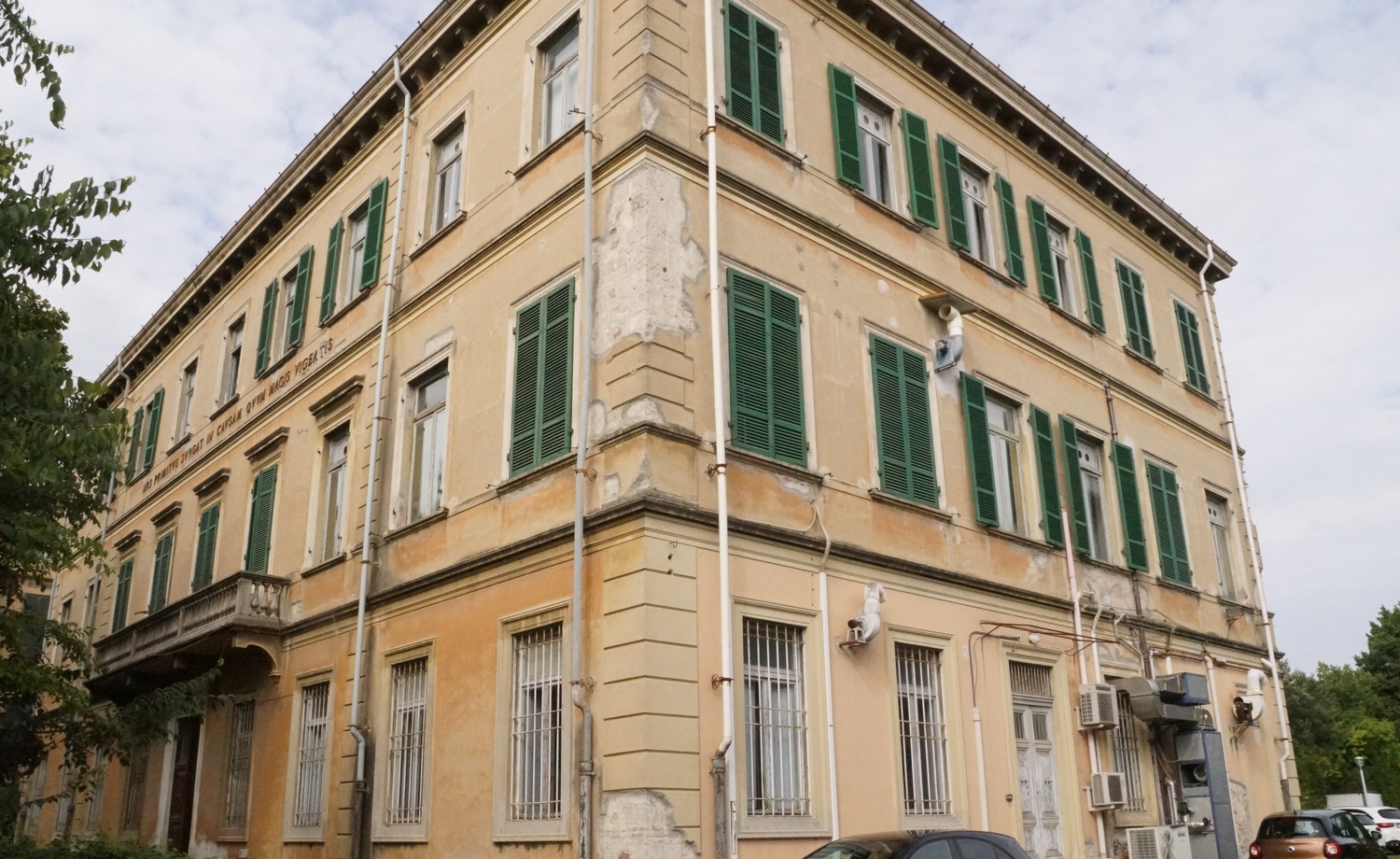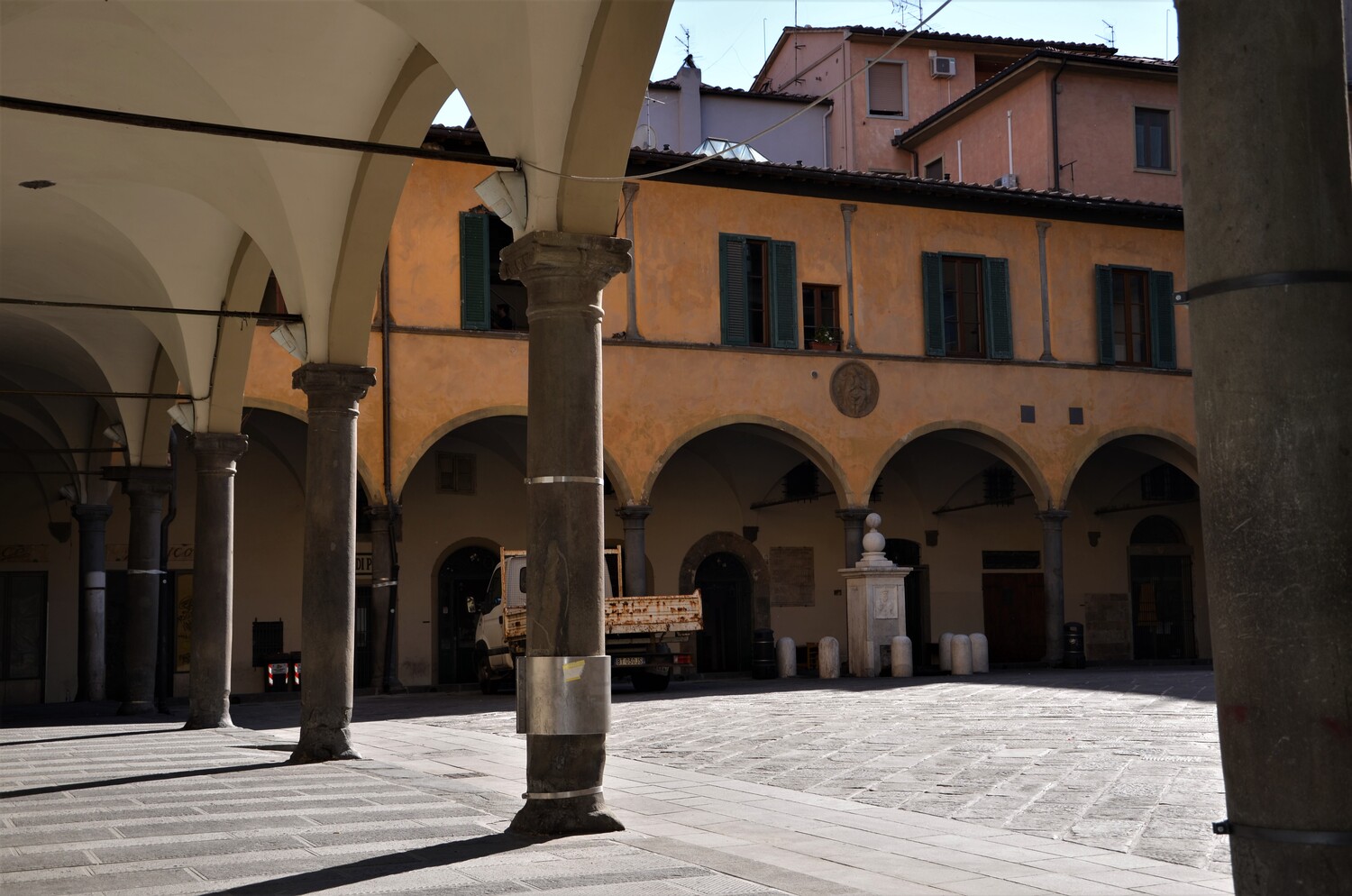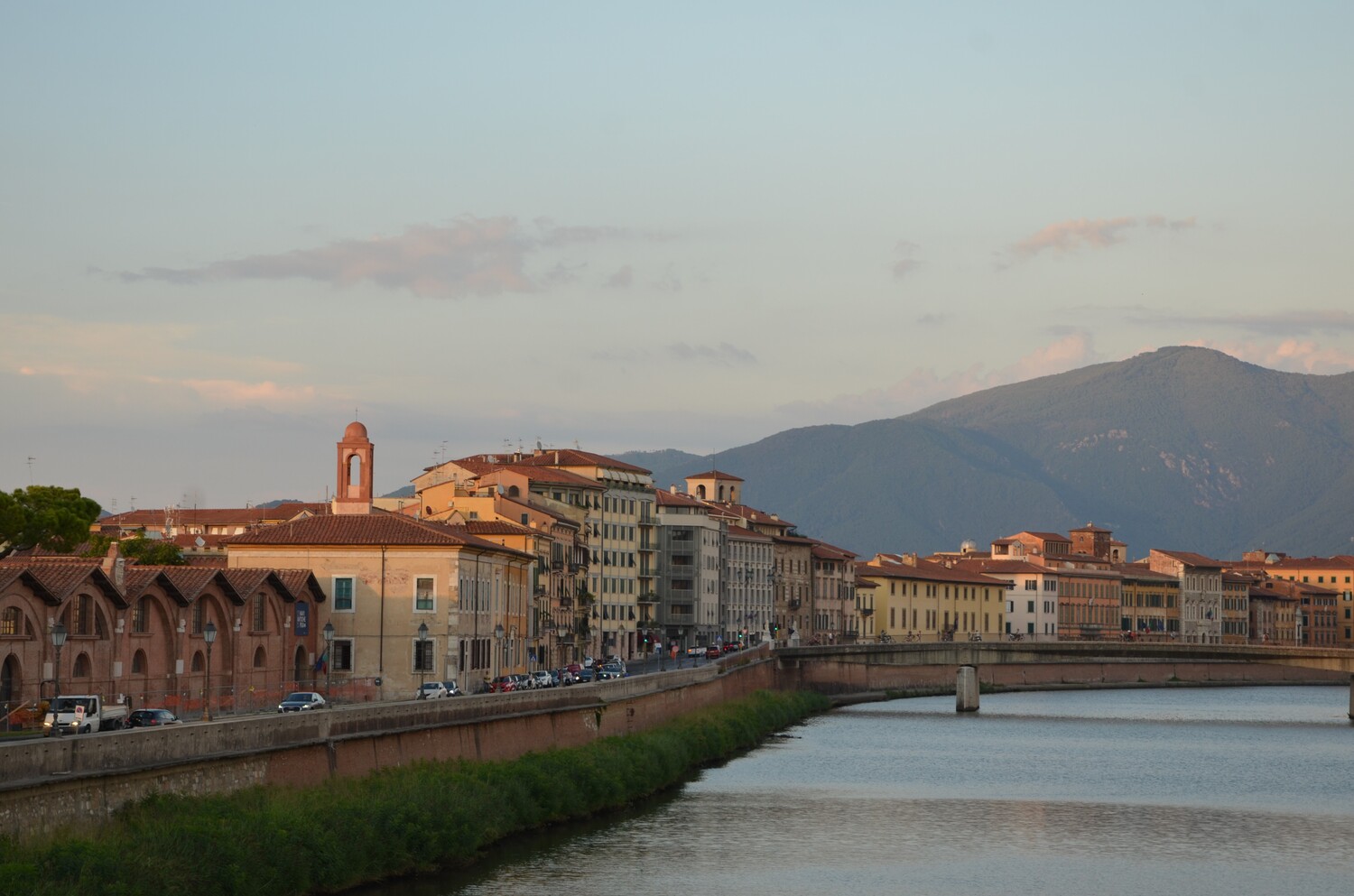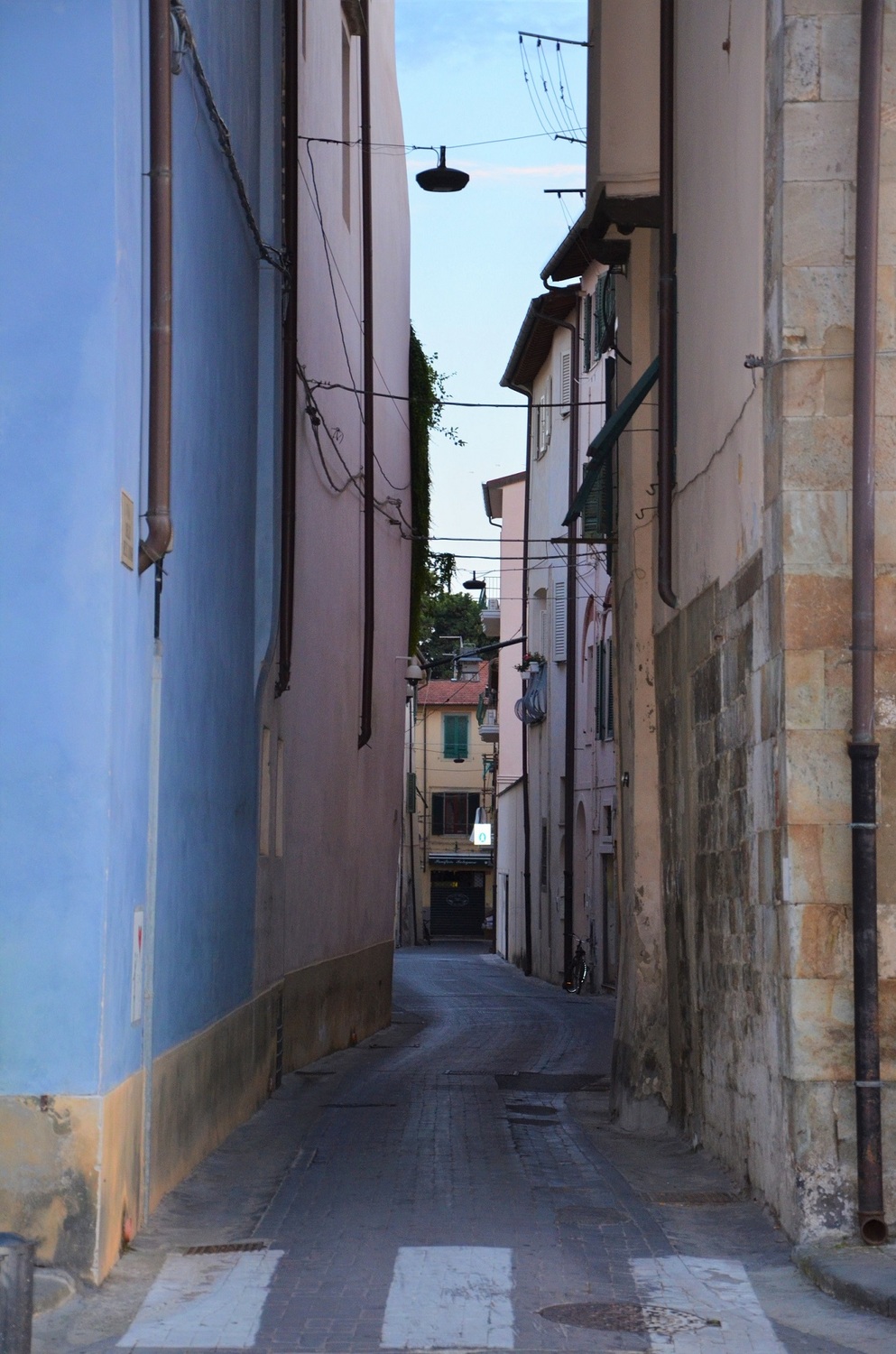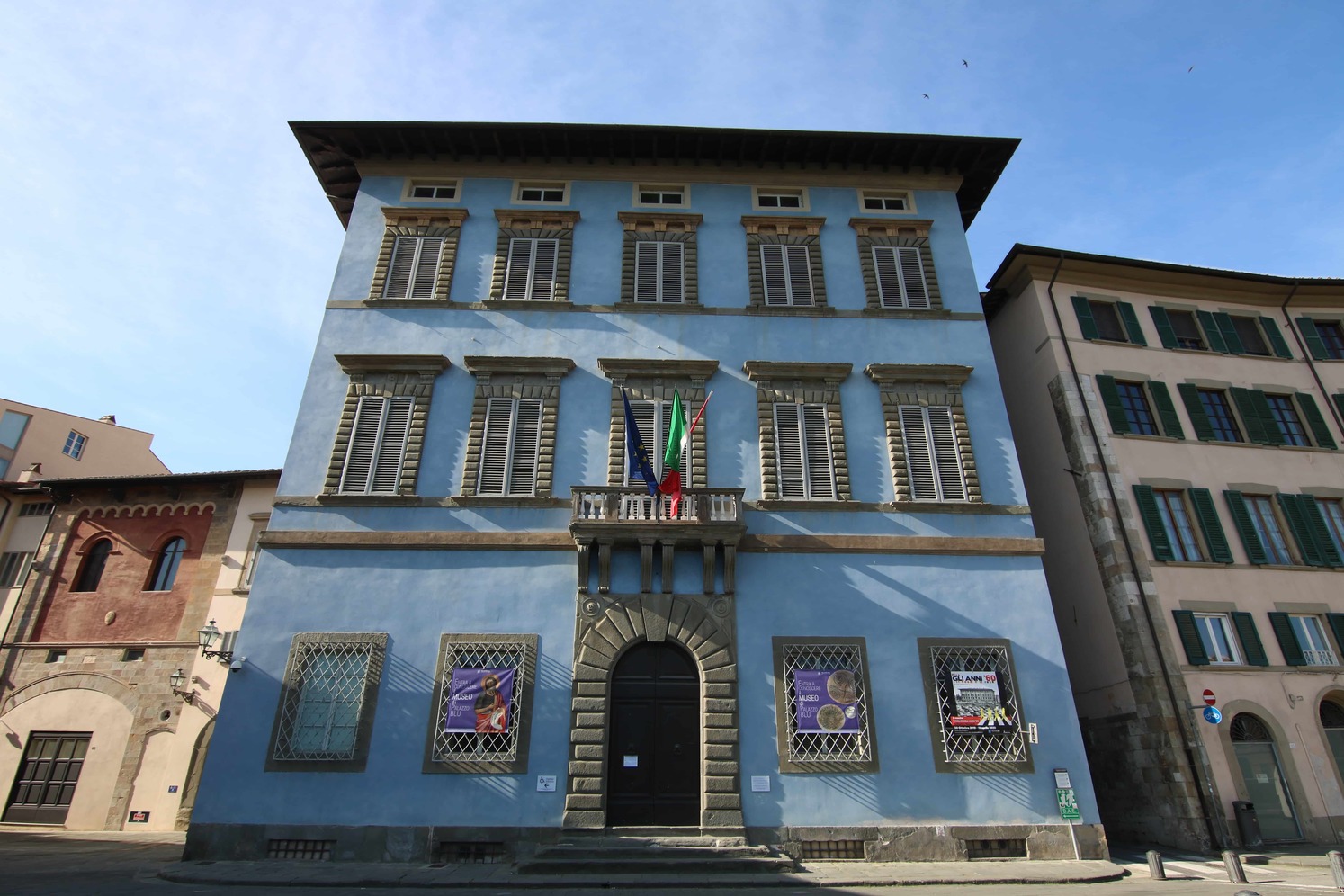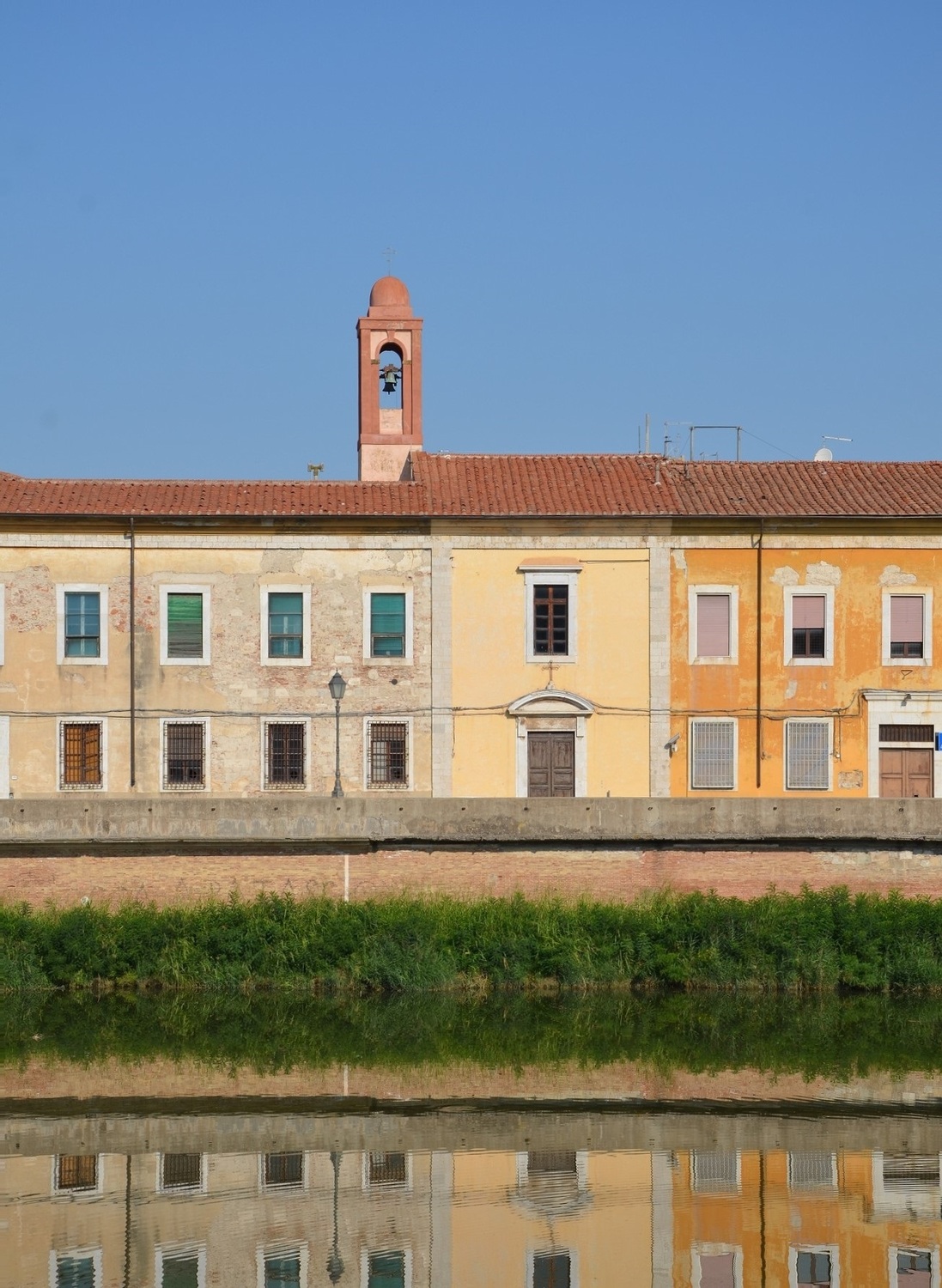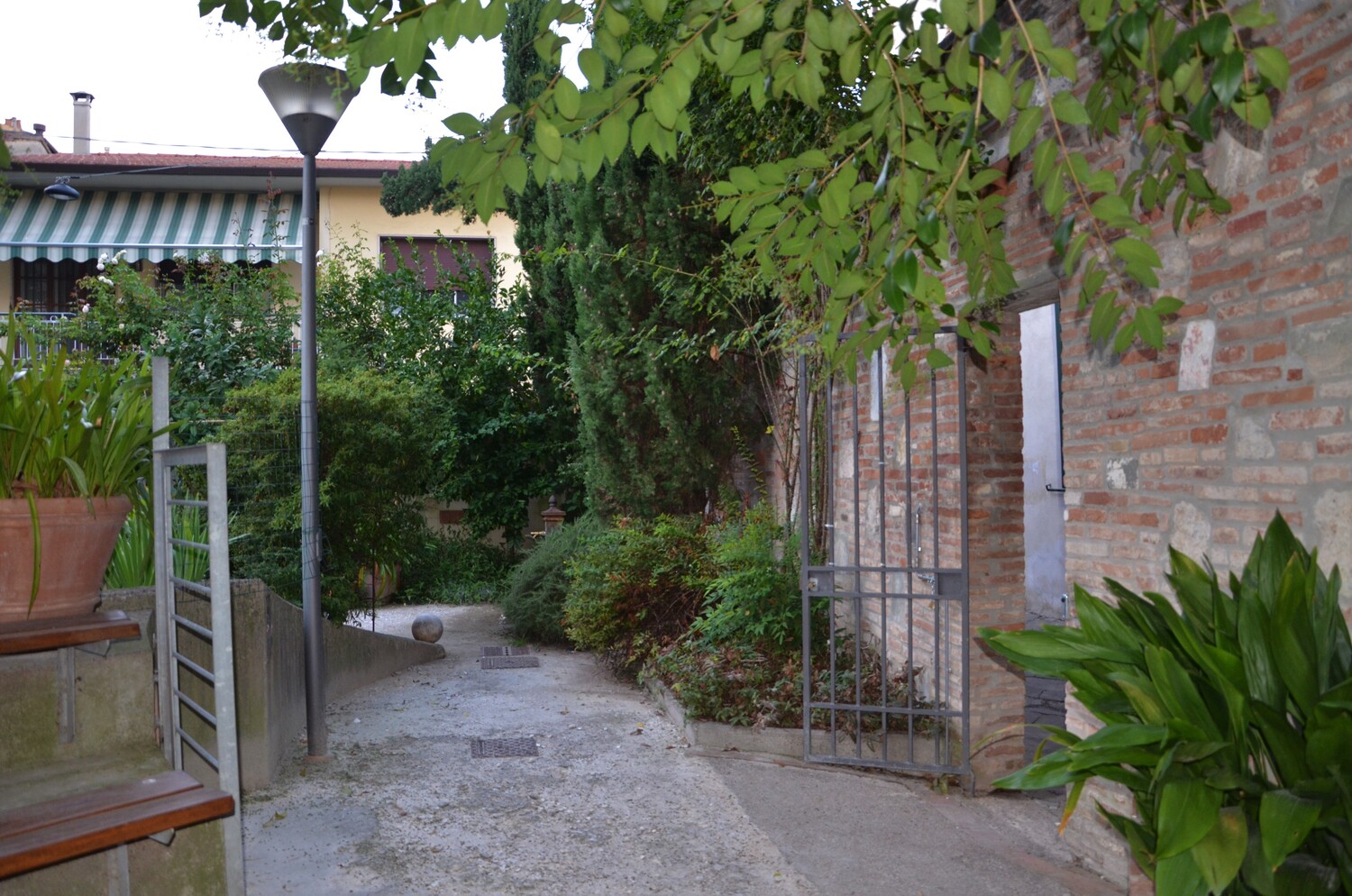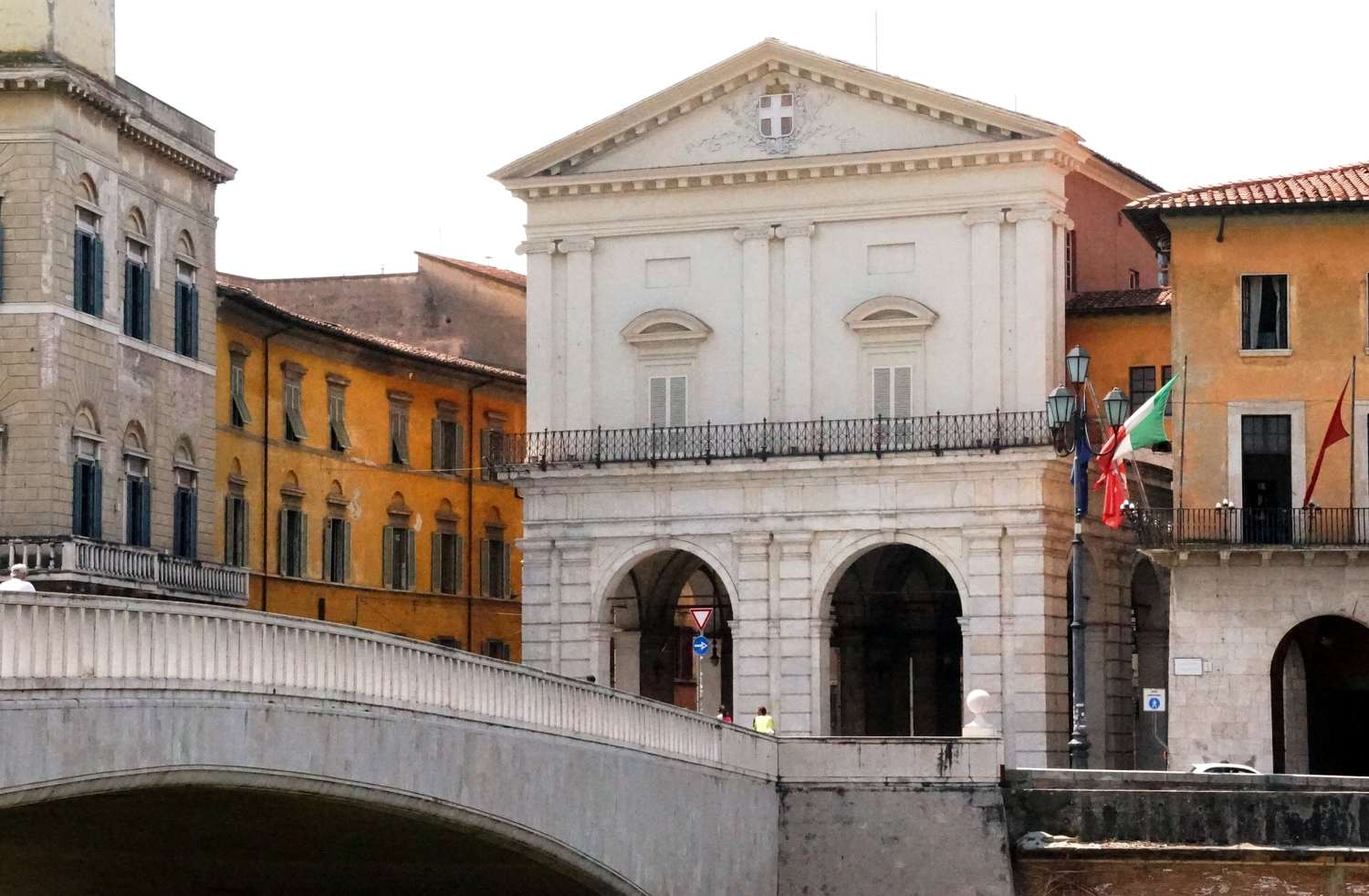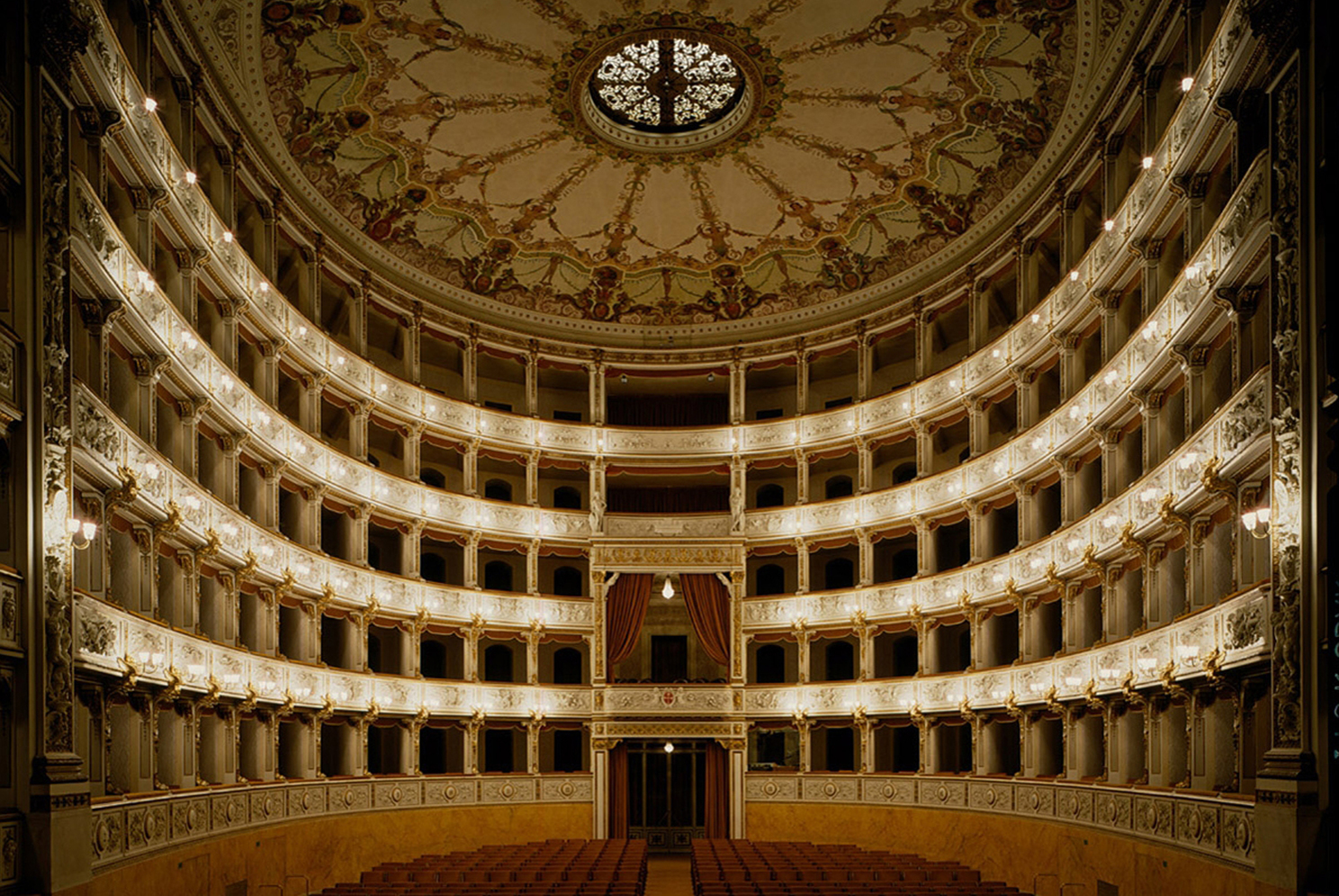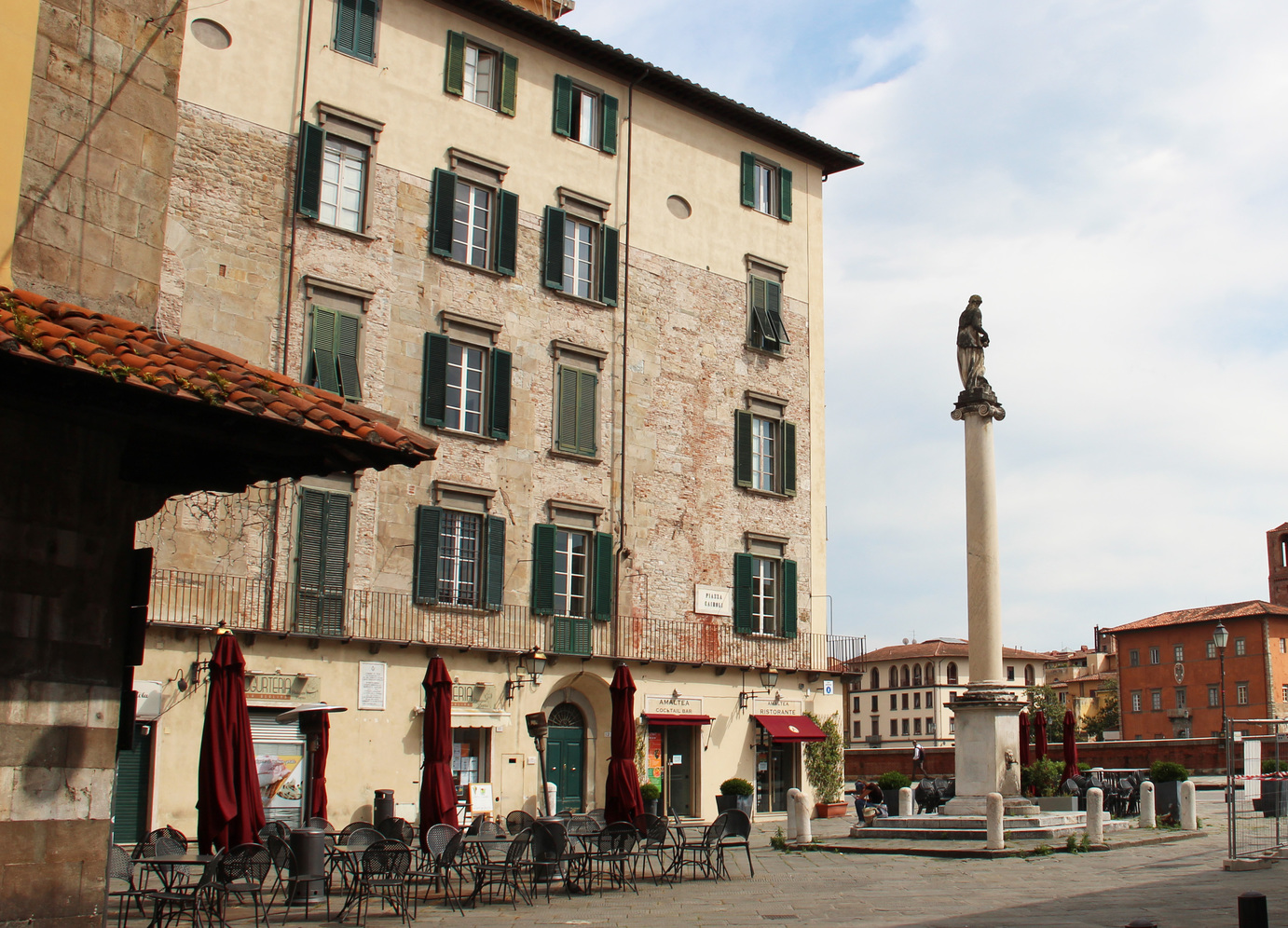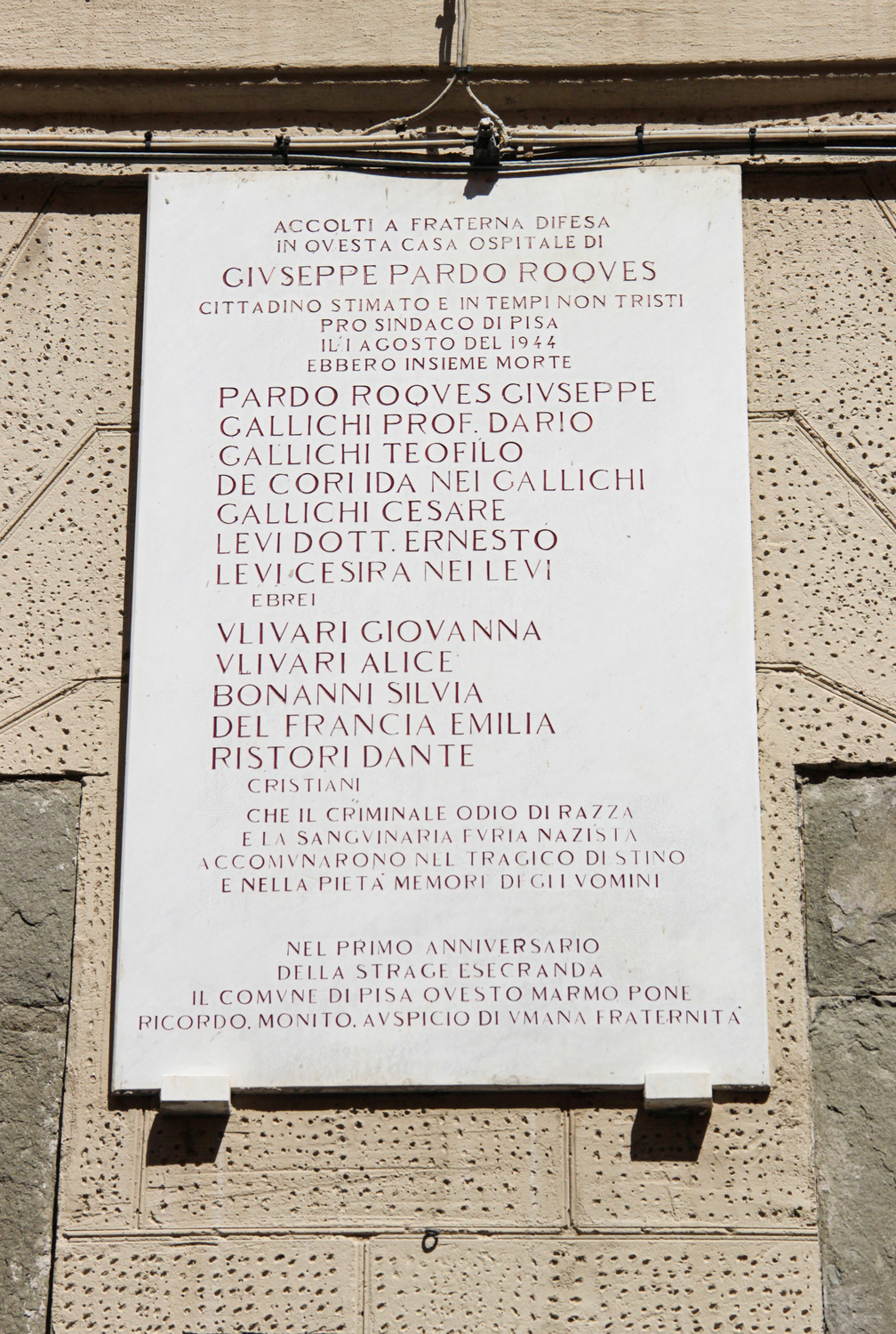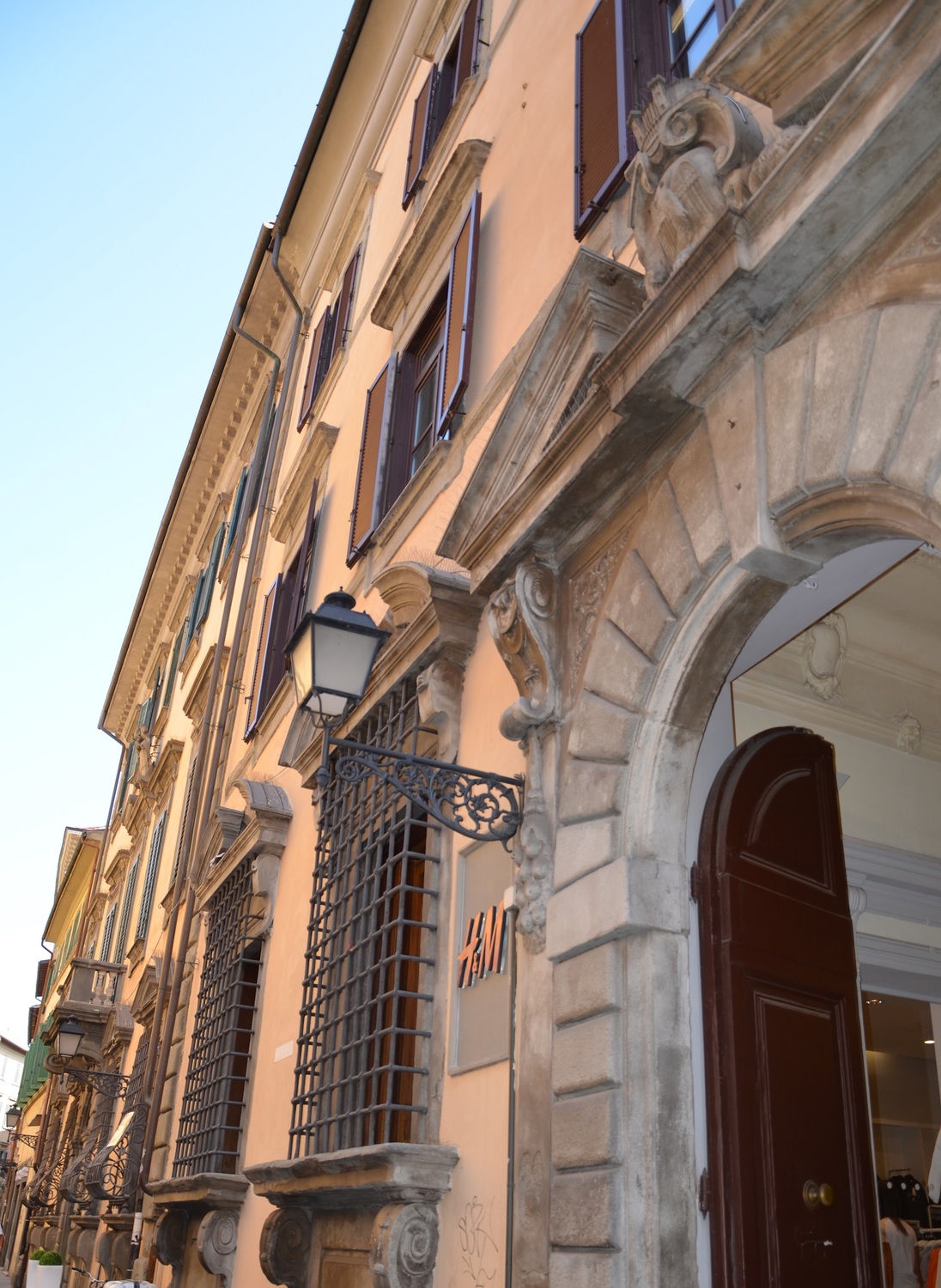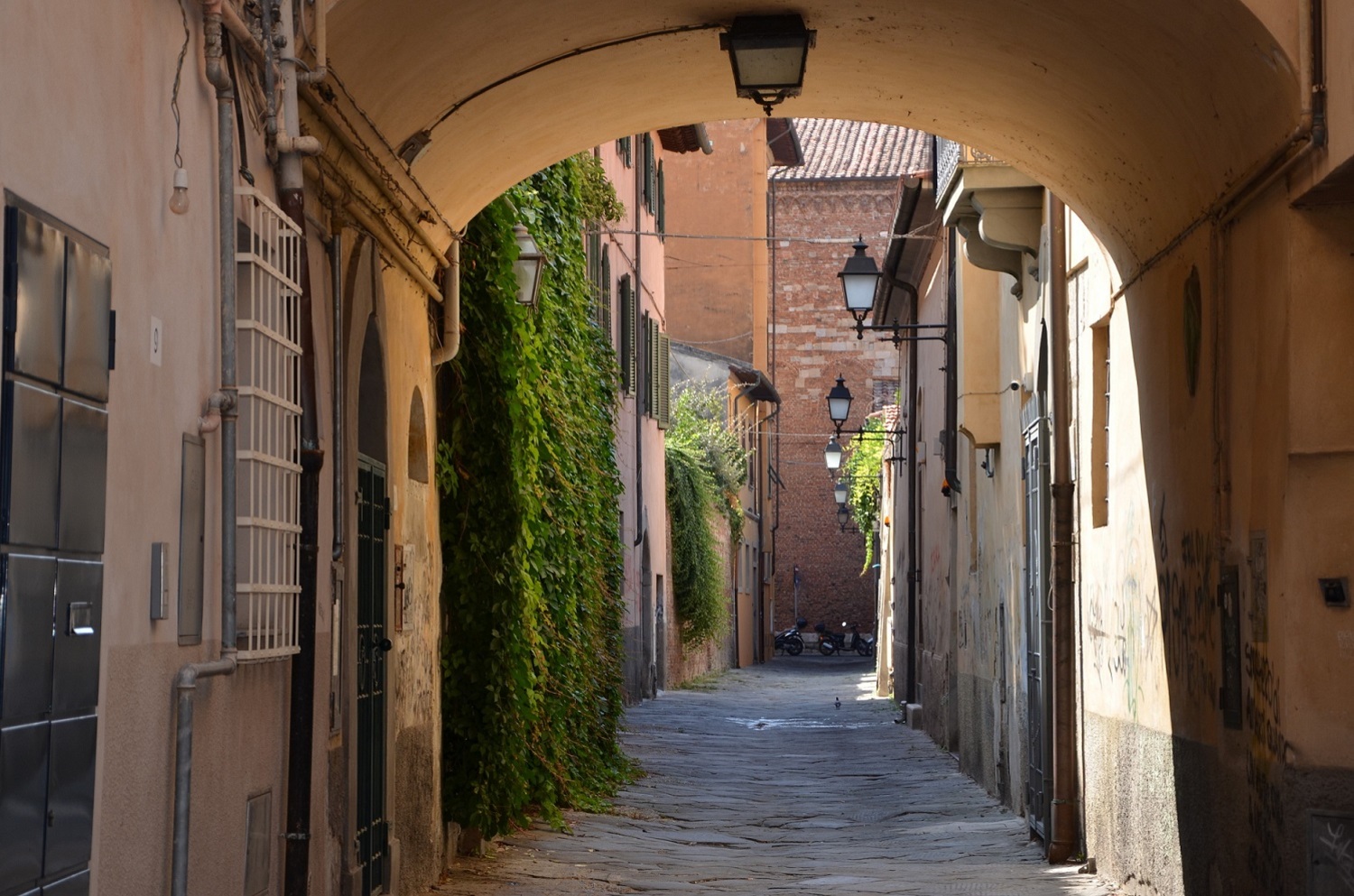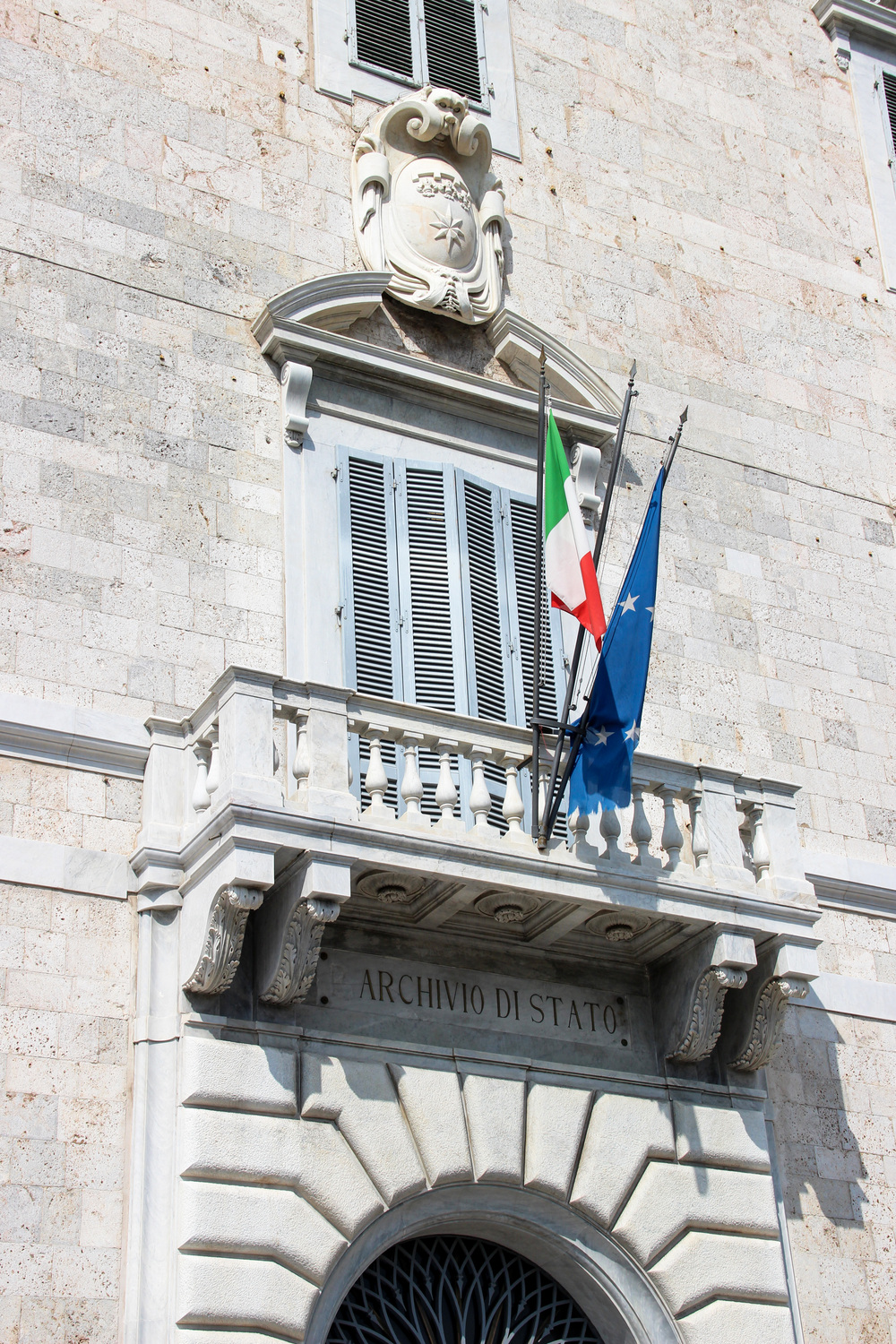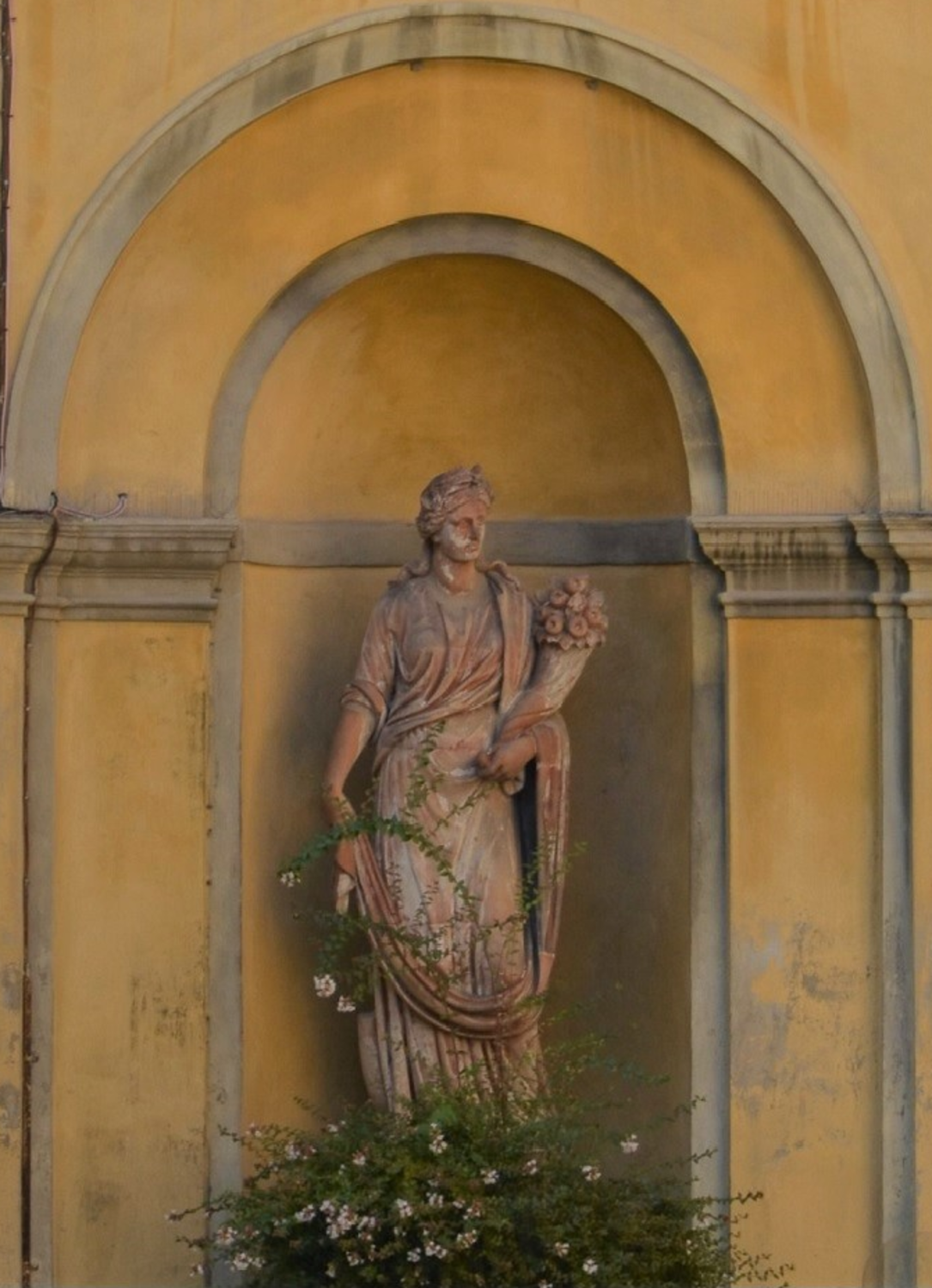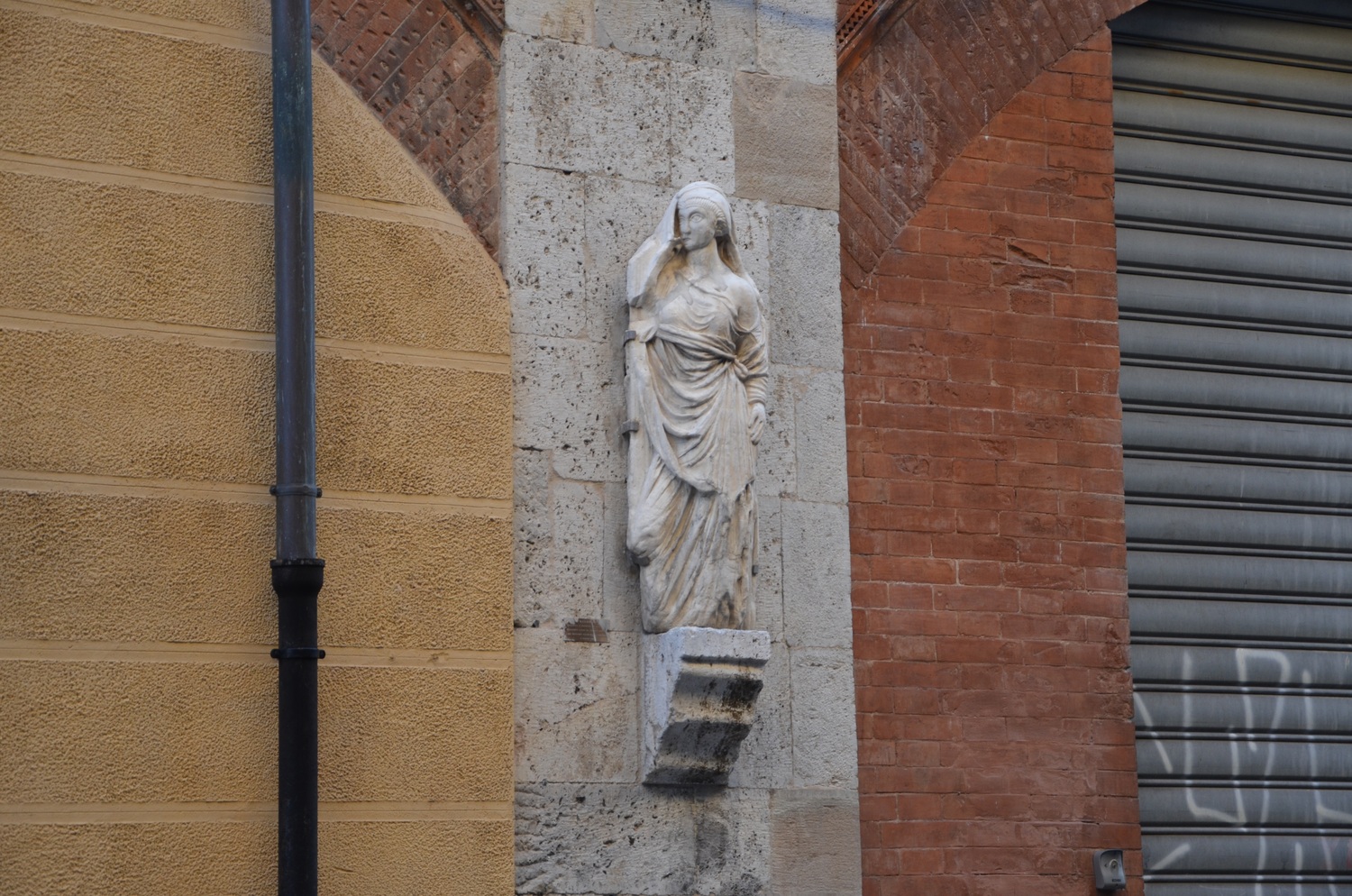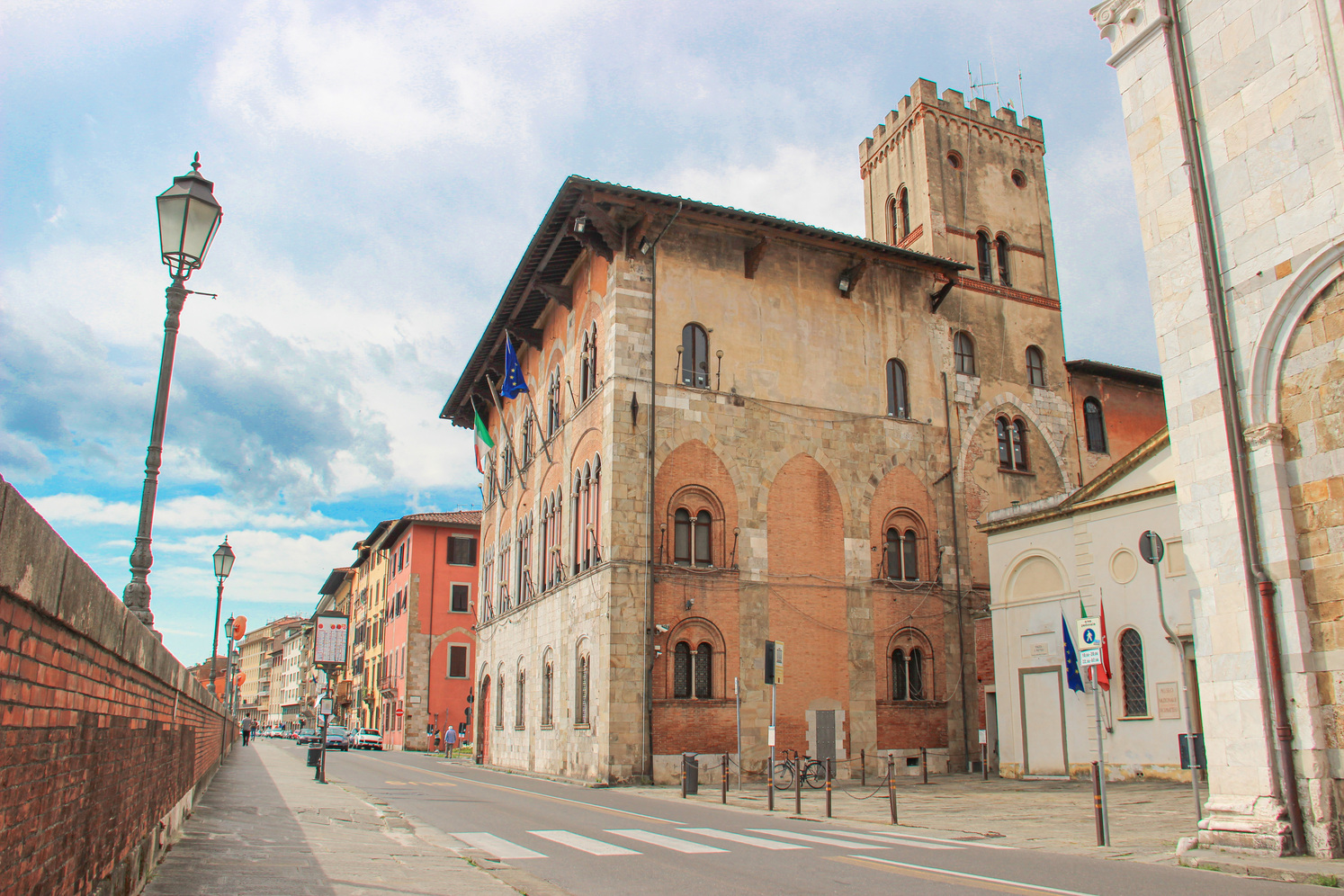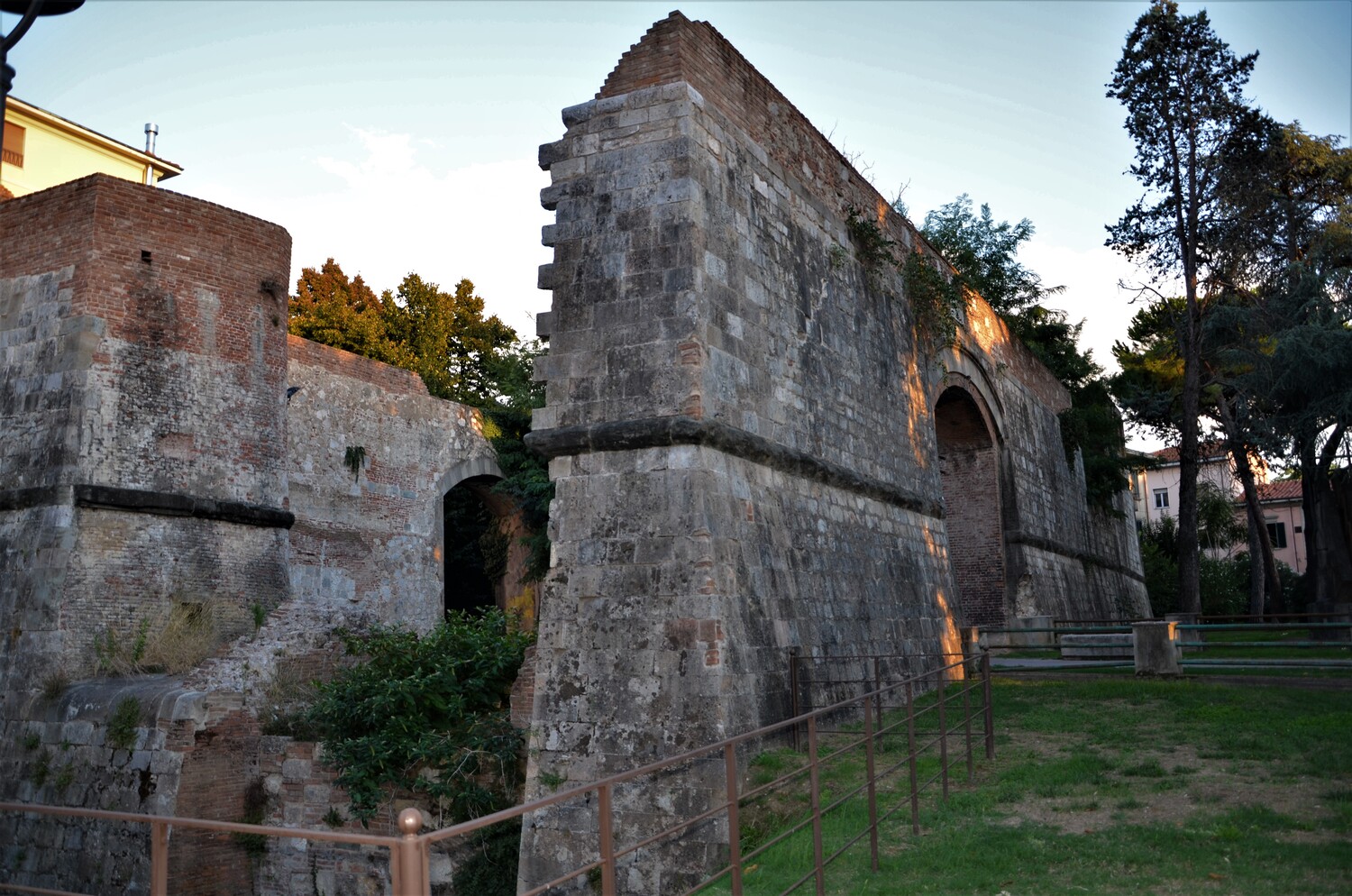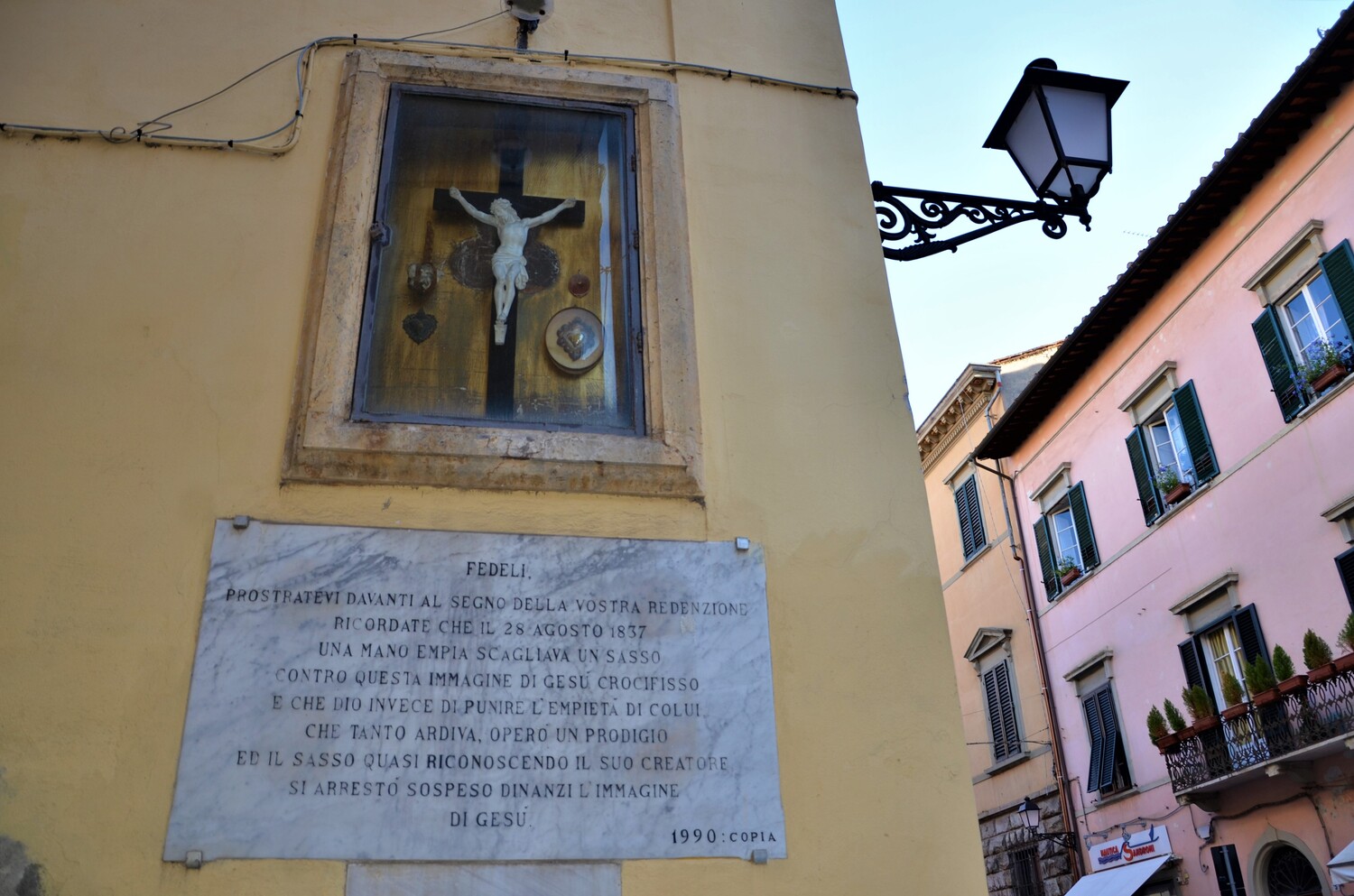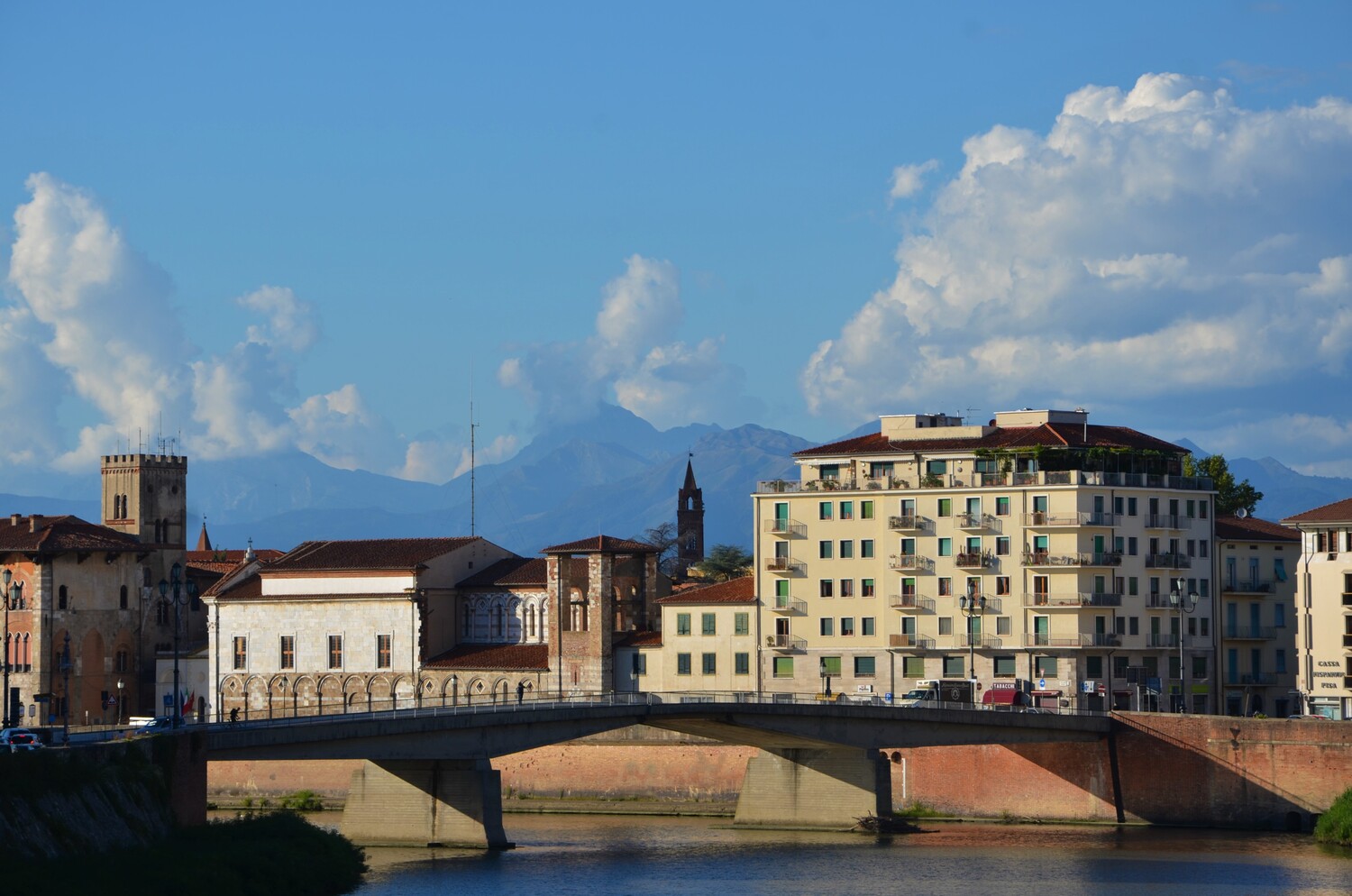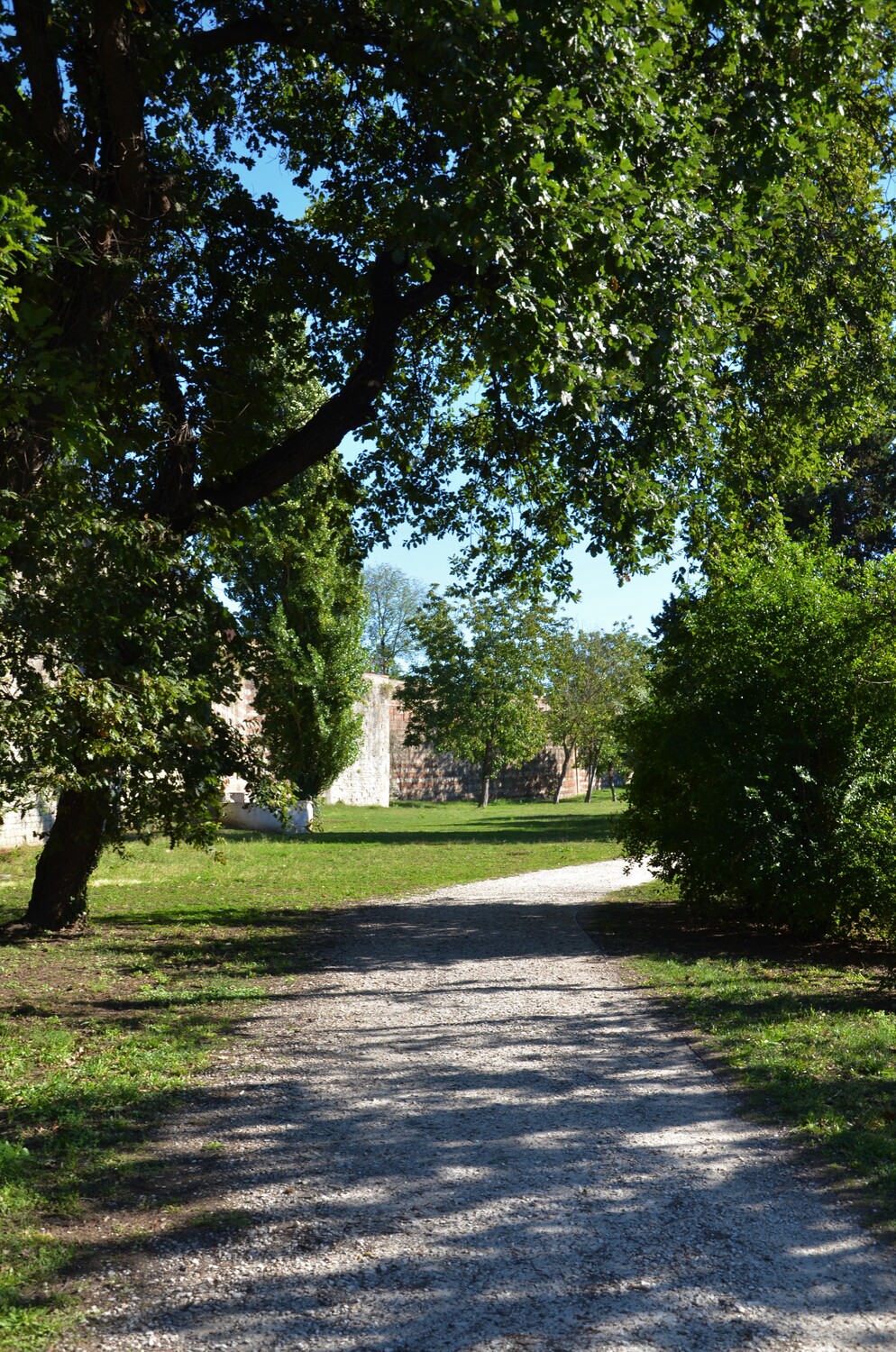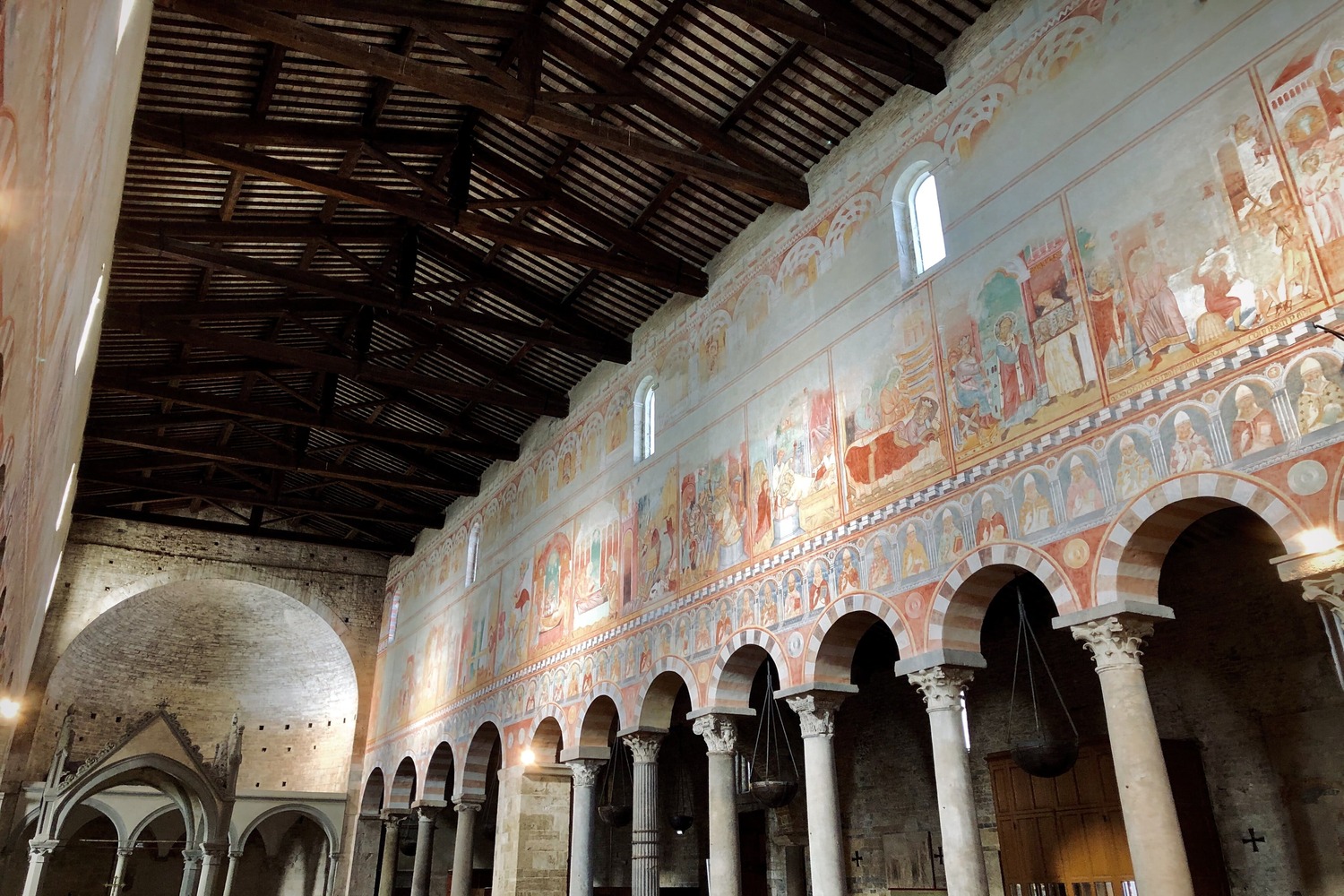Inside: With five naves, divided by monolithic granite columns from the island of Elba. Three arches, two pointed and one round, reveal the beautiful apse mosaic of Christ Pantocrator by Francesco da Pisa, Vincino da Pistoia and above all Cimabue. The Moorish taste is evident in the arches of the side naves, so much so that the Cathedral was often compared to the great Mosque of Cordoba. Elegant eighteenth and nineteenth-century paintings (by Bezzuoli, Bilivert, Lomi, Tempesti, etc.) narrate the story of Pisa and, among the side altars, we find works of great importance, such as the Madonna with Child by Andrea del Sarto (first half of the 16th century) in the second altar of the right aisle and the beautiful Virgin by Perin del Vaga, in the first altar of the southern transept. The ceiling carved with lacunars and decorated with gold leaves, finished in 1602, is a work by Domenico and Bartolomeo Atticciati and replaces the original one with trusses lost during the fire of 1595.
- Right wing of the Transept: above, the mosaic of the Madonna in glory by Francesco Traini (XIV century) watches over the urn in polychrome marble, made by Giovan Battista Foggini in 1687, resting place of the body of San Ranieri, patron saint of the city. On the left, in the shadows, part of the sarcophagus of emperor Arrigo II of Luxembourg, sculpted by Tino di Camaino in 1313 (partly preserved in the Museo dell'Opera), once behind the main altar. The painted angels are by Domenico Ghirlandaio.
- Main altar and Stand: along the sides is the fifteenth-century wooden choir, on which works by Andrea del Sarto and Sogliani stand out. The eighteenth-century altar is dominated by the large Crucifix bronze by Giambologna. Behind, the large stand reveals masterful works by Beccafumi, Sogliani, Sodoma and Salimbeni. The floor is in opus alexandrinum from the mid-twelfth century and again behind the altar there is a porphyry vase, part of the booty of the first Crusade, considered one of the vessels used for the celebrations of the wedding at Cana.
- Left wing of the Transept: at the top is the mosaic of the Annunciation by Francesco Traini, in the centre the large silver ciborium designed by Giovanni Battista Foggini. Between the columns we can see paintings by Aurelio Lomi and near the main altar, the icon of the Virgin and Child, attributed to Berlinghiero Berlinghieri (1226), known as the Madonna Under the Organs, one of the sacred symbols of the city.
- The Pergamum (or pulpit) of Giovanni: a masterpiece by Giovanni Pisano, the Pergamum was started in 1301 and finished in 1310. During the fire of 1595, to save it, it was completely disassembled and its pieces were put in different places, until the reconstruction took place, unfortunately with some alterations, in 1926. On the first level there are large column-bearing lions with caryatids and telamon columns. Prophets, sibyls and apostles in continuous movement frame the stories of the life of Jesus: from the Annunciation to the Last Judgment. The work is defined as the greatest example of medieval expressionism.

